In order to view this website correctly, you will need to have JavaScript enabled in your browser.
Skip to main content.
- Travel Trade & Press
- School Trips
- Business Events
GO TOKYO The Official Tokyo Travel Guide
New & Now
Tokyo Area Guide
Things to Do
Plan Your Trip
- Choose Language 日本語 ENGLISH 中文(简体) 中文(繁體/正體) 한글 ภาษาไทย DEUTSCH ITALIANO ESPAÑOL FRANÇAIS
Share this page
- X (Twitter)
- My Favorites
- All New & Now options
- New & Trending
- Spring Guide
- Summer Guide
- Autumn Guide
- Winter Guide
- Places The Locals Go
- Stories & Guides
- Another Tokyo
- All Things to Do
- Attractions
- Food & Drink
- Onsen & Bathhouses
- Art & Design
- Anime & Manga
- Time Trip Tokyo
- Walks & Tours
- Tokyo Event Calendar
- All Tips to Plan Your Trip
Accommodations
- Getting to Tokyo
- Getting Around
- Airport & Cruise Terminal Access
- How to have a smooth visit to Tokyo
- Weather & Geography
- Visa & Immigration
- Tokyo at a Discount
- Tour Guide Services
- TOKYO Brochures
- PDF Maps & Guides
- Tourist Information Centers
- Online Tourist Guide
My Tokyo Guide
See something interesting? Click on the heart button in the article to add a page from this site to My Favorites.
Popular Keywords
- Guide Service
Advanced Search
- From open calendar
- To open calendar
- All Stories & Guides
Select Language
- ESPAÑOL
- FRANÇAIS

- Tokyo International Cruise Terminal - getting there, terminal info, and more
Main content starts here.
Updated: September 27, 2023
Tokyo International Cruise Terminal opened on September 10, 2020, to provide access to Tokyo to the world’s largest cruise ships. The cruise terminal is in the Odaiba area and within reach of major transportation hubs, including Shinkansen stations and two international airports. Conveniently located in the southern part of central Tokyo, the cruise terminal provides easy access to Tokyo’s major tourist attractions. It’s also within day-trip distance of historically and culturally important cities like Kamakura and Nikko. Indeed, the cruise terminal is an excellent base for tourists keen to experience both Japan's traditional and modern culture. The megalopolis of Tokyo and thus the cruise terminal itself is well connected to major cities around the world and to other regions of Japan, making it an ideal location for fly and cruise tours. Note: Please be sure to check the official website for detailed information on the cruise terminal's facilities.
Visiting other cities from Tokyo
- Domestic Air Travel
- Traveling to other cities
- Local Railways

Getting to and from Tokyo International Cruise Terminal
Tokyo International Cruise Terminal is on the artificial island of Odaiba, a popular shopping and entertainment center in Tokyo’s Koto Ward. The cruise terminal is easily accessible from Haneda and Narita airports and major stations, including Tokyo Station, Shinagawa Station and Ueno Station—all of which are part of the Shinkansen network—and Shinjuku Station and Shibuya Station.
Access from Tokyo International Cruise Terminal
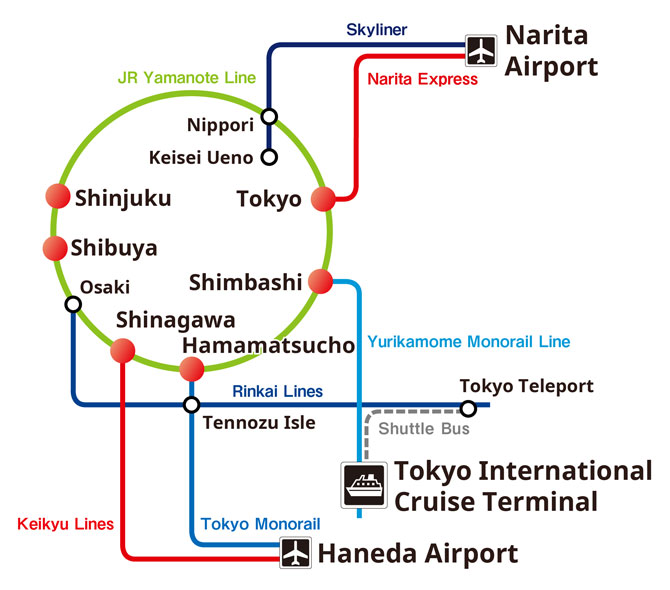
The island of Odaiba is served by two train lines, the Rinkai Line and the Yurikamome Line. The closest station to Tokyo International Cruise Terminal is Tokyo International Cruise Terminal Station on the Yurikamome Line. The station is roughly 8 minutes on foot from the terminal. The closest station on the Rinkai Line is Tokyo Teleport Station, which is approximately 15 minutes on foot or 10 minutes by bus from the terminal. When cruise ships are in port, a free shuttle bus connects Tokyo Teleport Station to the terminal. From Tokyo Teleport Station, it’s just an 8-minute walk to Odaiba Seaside Park in the heart of Odaiba. Tokyo Station, a major transportation hub with local, rapid, express and Shinkansen lines, can be reached in as little as 20 minutes (transfer time not included) from the terminal. Haneda Airport is also easily accessible.
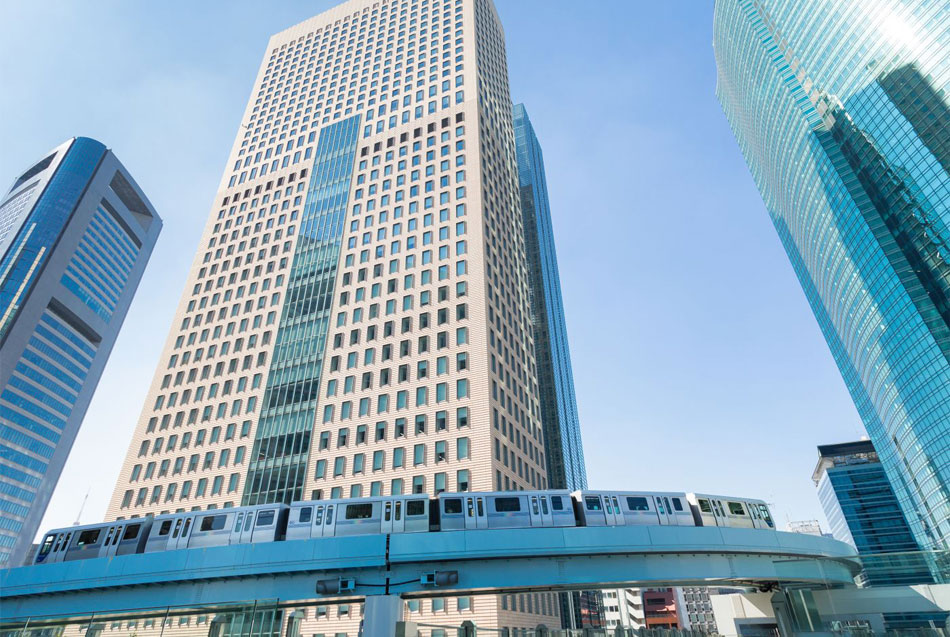
Yurikamome Line
From Tokyo International Cruise Terminal Station: approximately 20 minutes to Shimbashi Station From Shimbashi Station: 3 minutes to Tokyo Station via JR Yamanote Line or Keihin-Tohoku Line; approximately 30 minutes to Haneda Airport by Toei Asakusa Line and Keikyu Airport Express; approximately 20 minutes to Haneda Airport by JR Yamanote Line and Tokyo Monorail
Rinkai Line
*To Tokyo From Tokyo Teleport Station: 7 minutes to Shin-Kiba Station From Shin-Kiba Station: 11 minutes to Tokyo Station by JR Keiyo Line
*To Haneda Airport From Tokyo Teleport Station: 3 minutes to Tennozu Isle Station From Tennozu Isle Station: 17 minutes by Tokyo Monorail If you have a Japan Rail Pass, it will cover your fare on JR lines.
Limousine buses connect Tokyo’s two airports, Haneda and Narita, to hotels near Tokyo International Cruise Terminal. Tickets for travel from the airports to Odaiba can be purchased online and at the airports’ bus ticket sales counters or at ticket machines. Tickets for travel from Odaiba to Haneda Airport or Narita Airport can be purchased online.
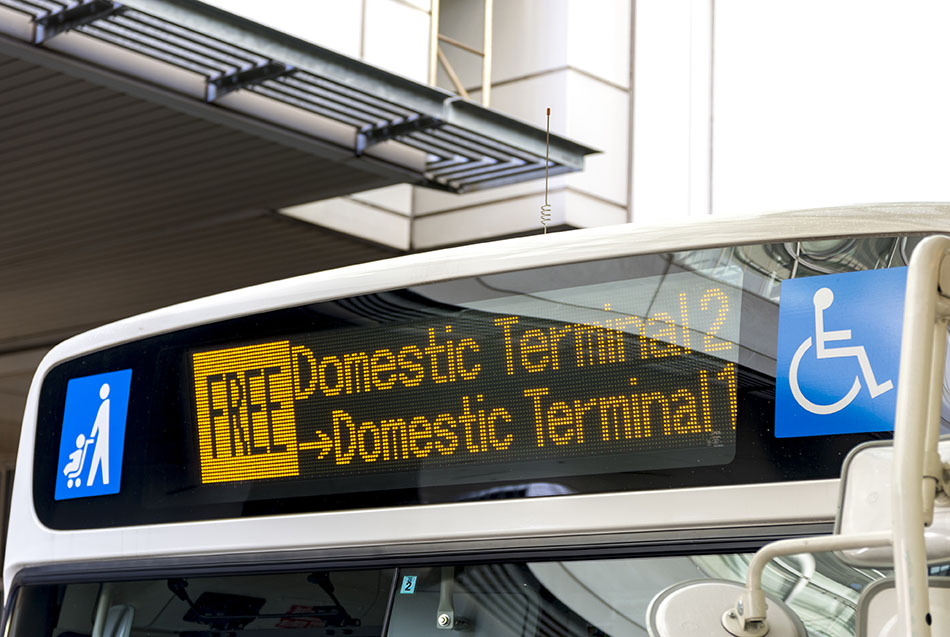
Limousine Bus (Haneda Airport)
From Haneda Airport: approximately 20 minutes to Hilton Tokyo Odaiba/Grand Nikko Tokyo Daiba From Hilton Tokyo Odaiba/Grand Nikko Tokyo Daiba (via Daiba Station): approximately 2 minutes to Tokyo International Cruise Terminal Station on the Yurikamome Line
Limousine Bus (Narita Airport)
From Narita Airport: approximately 90 minutes to Hilton Tokyo Odaiba/Grand Nikko Tokyo Daiba *From Hilton Tokyo Odaiba/Grand Nikko Tokyo Daiba (via Daiba Station): approximately 2 minutes to Tokyo International Cruise Terminal Station on the Yurikamome Line The route from Narita Airport has been temporarily suspended. Please check with the limousine bus company for information on the route's status.
City buses also connect Tokyo International Cruise Terminal to various train stations from Tokyo International Cruise Terminal Ekimae (station front) bus stop.
From Tokyo International Cruise Terminal Ekimae (station front) bus stop: approximately 15 minutes to Oimachi Eki Higashiguchi (Oimachi Station East Exit) bus stop From Oimachi Station: approximately 3 minutes to Shinagawa Station via JR Keihin-Tohoku Line
Traveling by taxi relieves you of the need to keep track of your luggage and monitor your progress to avoid missing your station and is a stress-free way to access the cruise terminal and to get around the city. If you happen to be traveling in a group, it can be quite cost-effective as well. Note that taxi fares are calculated by distance and time traveled using a meter. If you use a taxi to travel on toll highways, the toll will be charged separately.
From Shinagawa Station: approximately 20 minutes From Tokyo Station: approximately 25 minutes From Ginza Station: approximately 20 minutes
Tokyo International Cruise Terminal floor plan
Tokyo International Cruise Terminal consists of four floors and has been designed for maximum flexibility. Facilities can be tailored to match the requirements of the cruise ship at dock, and the cruise terminal’s wide-open spaces can be adjusted to cater to a variety of needs, from welcoming travelers to hosting events. Visitors will also find incredible views of Tokyo. Accessibility is a priority, and escalators and elevators are available for those in need of mobility assistance. In addition, multipurpose restrooms are located on every floor. You can also see a detailed map here .
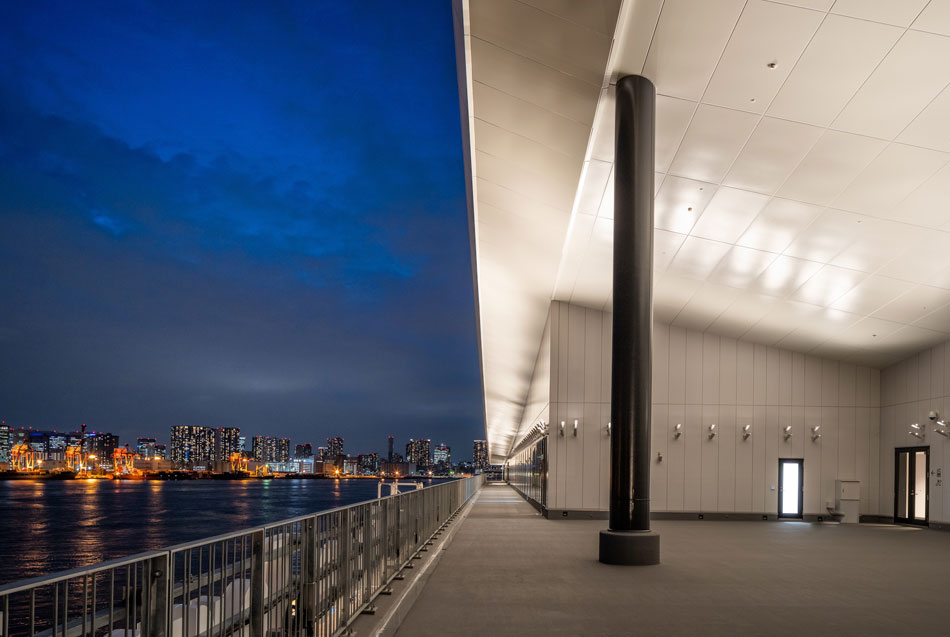
When embarking
Travelers will find baggage reception on the first floor. From there, embarkation takes place on the second or third floor depending on the size of your cruise ship. Customs, immigration and quarantine facilities are located on your embarkation floor. You’ll also have access to baby care facilities with nursing and feeding space and diaper-changing stations in addition to restrooms.
When disembarking
Disembarkation takes place on the second or third floor depending on the size of your cruise ship. Customs, immigration and quarantine facilities are located on your disembarkation floor. You’ll also have access to baby care facilities with nursing and feeding space and diaper-changing stations in addition to restrooms.
Observation deck and pickup and drop-off lounge
The fourth floor of the cruise terminal is home to an open-air observation deck and pickup and drop-off lounge. From the deck and lounge, you’ll be able to admire Tokyo’s cityscape, the goings-on of the Port of Tokyo, and, when they're docked, cruise ships.
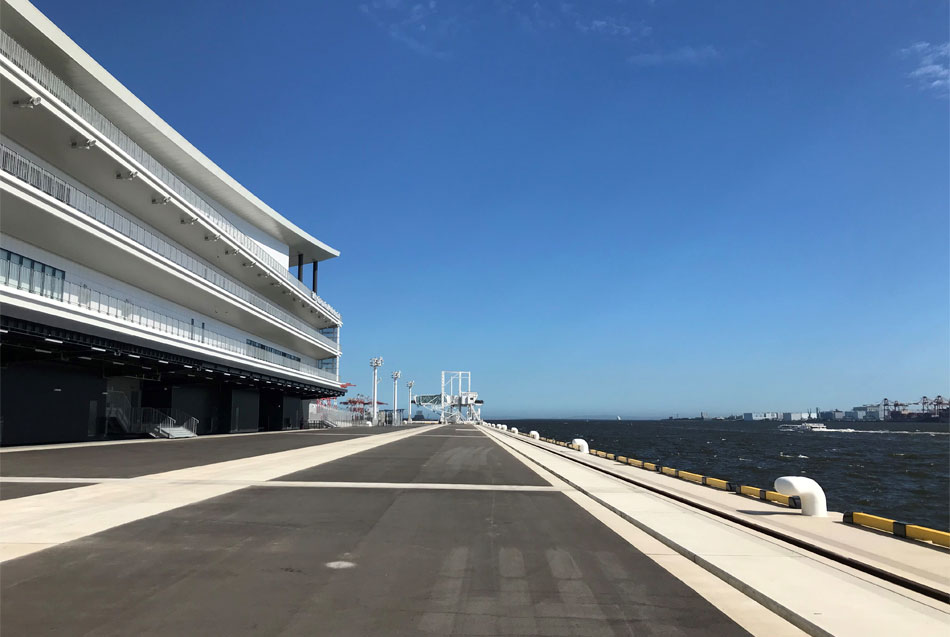
Facilities & services
Tokyo International Cruise Terminal is equipped with a variety of facilities and is home to several services. In addition to on-site offerings, the cruise terminal’s location in the bustling Odaiba area means that diverse facilities and services can be found nearby.
On-site services
You’ll find a courier service counter and tourist information center on the second floor, baby care facilities on the second and third floors, and AED machines. Free Wi-Fi is available throughout the building.
Off-site services
Nearby, you’ll find convenience stores with ATMs that accept a variety of credit cards issued abroad. Certain payments can also be made with credit cards at the area’s convenience stores, some of which are within easy walking distance of the cruise terminal. Slightly farther away but still within walking distance are several currency exchange counters and pharmacies. The Tokyo Wangan Police Station is just 10 minutes away on foot, while the closest post office is approximately 15 minutes away.
Things to do around Tokyo International Cruise Terminal
Tokyo International Cruise Terminal couldn’t be better located. In the immediate area, the island of Odaiba abounds with restaurants and shopping centers as well as museums and other cultural facilities. Thanks to Tokyo’s world-class transportation system, it’s also a breeze to explore the city’s other major attractions, including, of course, its cuisine. Whether you begin your travels in Japan’s capital city, end them here or spend a day or two in Tokyo over the course of your cruise, you’re sure to find yourself delighted by how much there is to see, eat and do—and by how easy it is to get around.
Odaiba area
Odaiba , home of Tokyo International Cruise Terminal, is an ultramodern recreation and amusement center with a seaside vibe. Think of the island and its various facilities as the cruise terminal’s playground. You’ll find international and Japanese brands sold in several shopping complexes, cuisine from around the world, and a variety of entertainment and cultural facilities suitable for visitors of all ages. Odaiba is also home to several parks and Tokyo’s most iconic bridge, Rainbow Bridge . There’s even a miniature Statue of Liberty . If you’re keen to keep cruising, consider exploring Tokyo by boat. River cruises connect Odaiba with Asakusa, another major tourist destination discussed in more detail below. Gliding Tokyo’s waterways is a novel way to explore the city. Be you in town for just a few hours or a full day, you’ll find plenty to keep you satisfied without having to leave the cruise terminal’s immediate area.
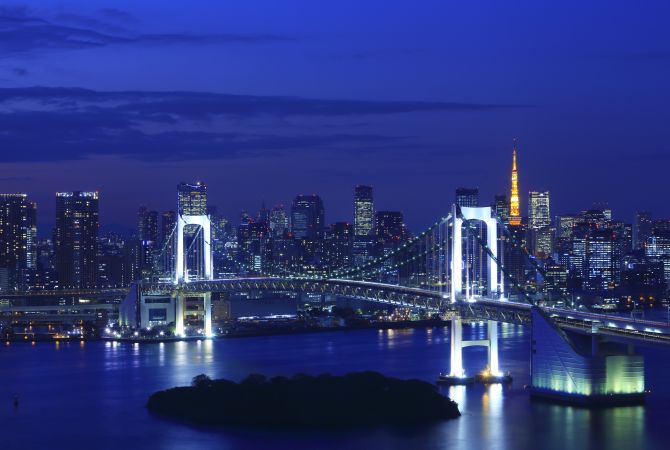
Whether you’re after high-end shopping and dining, a cultural experience or a peek at Japan’s Imperial Palace , you’ll find what you’re looking for in Ginza and its surrounding neighborhoods. Approximately 40 minutes by train and subway and approximately 20 minutes by car will take you from the cruise terminal to the glitzy district, where boutiques, department stores and restaurants line Ginza Dori , the main shopping street. Ginza is also home to the Kabukiza Theatre , where you can enjoy a performance, or even just a single act, of the traditional performing art of kabuki. A walk of approximately 12 minutes from Ginza Station will take you to Kokyo Gaien National Garden, a grassy park next to the Imperial Palace, while a roughly 15-minute walk from Ginza Station will take you to Hama-rikyu Gardens , a tranquil traditional garden perfect for a stroll and a bowl of matcha tea served with a seasonal sweet.
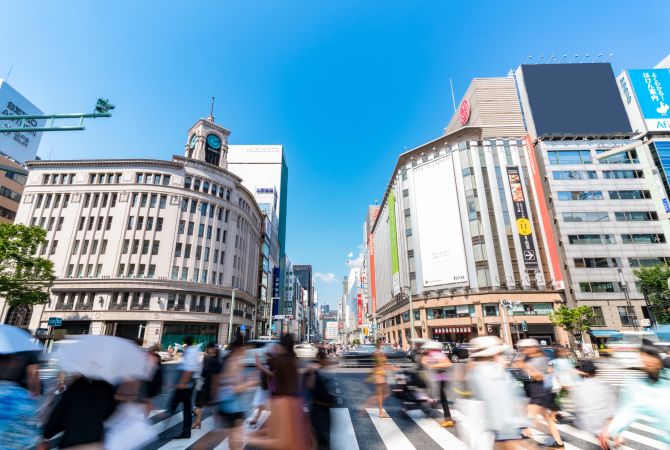
Asakusa area
Home to one of Tokyo’s most famous temple complexes and just a hop, skip and a jump from Japan’s tallest tower, Asakusa , approximately one hour by train and subway and approximately 25 minutes by car from the cruise terminal, is an exciting combination of old and new. Sensoji Temple bustles every day of the week, and its shopping street offers a wide variety of snacks and souvenirs to buy or browse, from traditional treats and ice cream to yukata cotton kimono, ninja stars and samurai swords. Cooking afficionados will find a paradise of knives, utensils and various other implements in nearby Kappabashi Kitchenware Town . If your visit coincides with cherry blossom season, be sure to make time for a stroll along the riverside Sumida Park . Rising high across the Sumida River from Asakusa, the 634-meter TOKYO SKYTREE is an excellent destination for those seeking a bird’s-eye view of Tokyo and beyond. On a clear day, you might even catch sight of Mt. Fuji in the distance.
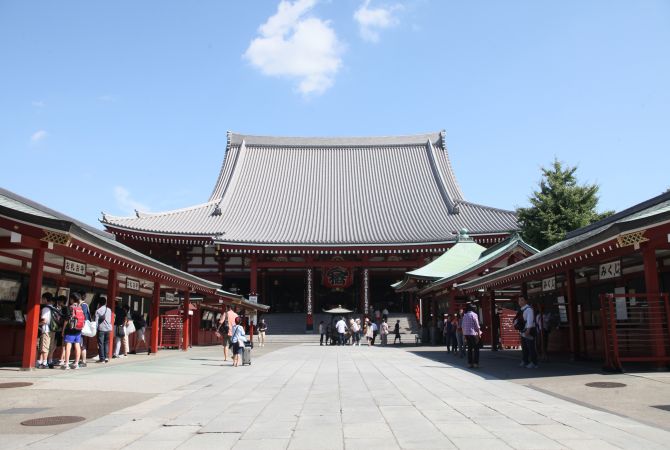
Hotels in and around Tokyo International Cruise Terminal
If you’re after accommodation either pre- or post-cruise, Odaiba and area offer a variety of options. From luxury lodgings right in Odaiba to more budget-friendly options like business hotels, hostels and even capsule hotels slightly beyond, there’s something for everyone. There are even options to stay in ryokan —traditional Japanese-style inns—in the Tokyo area.
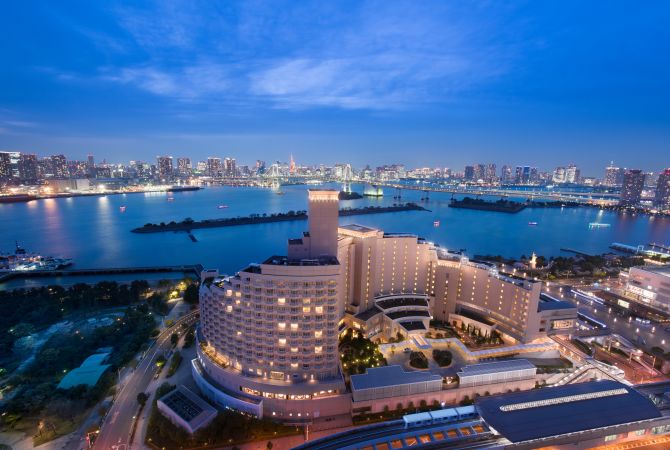
Getting Around Tips
Airport & cruise terminal access tips.
- Visit Tokyo >
- Plan Your Trip >
- Getting Around >
- About This Site
- Font Size and Color
Copyright © Tokyo Convention & Visitors Bureau. All rights reserved.
Which airport to use for Tokyo port?
By bxny , May 31, 2018 in Asia
Recommended Posts

We will be embarking our Azamara cruise at the port in Tokyo. Should we fly into Narita or Haneda? How close is the port to these airports?
Link to comment
Share on other sites.
Which port in Tokyo?
And Haneda is probably closer to both, but you will still be doing train rides, so consider cost more than location.

Tokyo's Harumi Cruise Terminal is just a short distance North of Haneda Airport.
Yokohama's Osanbashi Cruise Terminal is just a short distance South of Haneda Airport.
Larger ships cannot fit under the Rainbow Bridge in Tokyo Bay, so cannot access the Harumi Terminal. Docking fees for the Harumi Terminal are also 400% higher than the Osanbashi fees, keeping many smaller ships away.
Narita Airport has a much wider range of overseas flight options, and generally far better arrival and departure times. Narita Express train was designed to carry travellers and their bags easily and quickly to Tokyo Station (60 minutes), Shinjuku Station (75 minutes), and Yokohama Station (90 minutes). There are also many limousine buses available, slower, but cheaper.
Haneda Airport is newly enlarged and updated. A very nice option that is nearly downtown. Overseas flights to North America often depart very late at night. The Tokyo Monorail runs from Haneda to Hamamatsucho / Daimon on the Tokyo waterfront in 15 minutes, with free WI-FI onboard.
Hamamatsucho to Tokyo's Harumi Terminal is a short trip by taxi, train, subway.
There are also subway trains and many transfer buses from Haneda Airport to the Yokohama area. Limousine bus from Haneda to Yokohama Station and Hotels takes around 30-40 minutes.
Thank you . Good info. More award availability into NRT so will consider that.
- 1 month later...

Tokyo's Harumi Cruise Terminal is just a short distance North of Haneda Airport. Yokohama's Osanbashi Cruise Terminal is just a short distance South of Haneda Airport. Larger ships cannot fit under the Rainbow Bridge in Tokyo Bay, so cannot access the Harumi Terminal. Docking fees for the Harumi Terminal are also 400% higher than the Osanbashi fees, keeping many smaller ships away. Narita Airport has a much wider range of overseas flight options, and generally far better arrival and departure times. Narita Express train was designed to carry travellers and their bags easily and quickly to Tokyo Station (60 minutes), Shinjuku Station (75 minutes), and Yokohama Station (90 minutes). There are also many limousine buses available, slower, but cheaper. Haneda Airport is newly enlarged and updated. A very nice option that is nearly downtown. Overseas flights to North America often depart very late at night. The Tokyo Monorail runs from Haneda to Hamamatsucho / Daimon on the Tokyo waterfront in 15 minutes, with free WI-FI onboard. Hamamatsucho to Tokyo's Harumi Terminal is a short trip by taxi, train, subway. There are also subway trains and many transfer buses from Haneda Airport to the Yokohama area. Limousine bus from Haneda to Yokohama Station and Hotels takes around 30-40 minutes.
We are staying at Intercontinental Hotel in Yokohama, and need to get to Hurumi Cruise Port.
What is the best way to get there, and approx cost?
We are staying at Intercontinental Hotel in Yokohama, and need to get to Hurumi Cruise Port. What is the best way to get there, and approx cost? Thank you
Your hotel is near downtown Yokohama. You want to go to Harumi Terminal, which is near downtown Tokyo.
The only easy and direct route is a taxi, which will cost you about $150 - 200. Travel time about one hour.
Next you should ask the hotel concierge about shuttle buses to Tokyo. They probably have some. A shuttle bus has room for suitcases, will be much less expensive, and will get you to Tokyo Station in about 90 minutes. From Tokyo Station, a taxi to Harumi Terminal costs around ¥1500 and takes 10 - 15 minutes.
From Tokyo Station, you can ride the subway (no luggage storage) with a couple of transfers, to Harumi Terminal for ¥210 per person. Travel time is about 10 minutes.
The Kachidoki subway station near Harumi Terminal has free shuttle buses between the station and the Cruise Terminal (5 minute trip)
Narita Express - or many other JR trains - run from Yokohama station to Tokyo Station. Narita Express has luggage storage at the ends of each car. Other JR trains do not.
Narita Express from Yokohama Station to Tokyo Station takes around 20 minutes and costs about ¥1300 per person.
JR trains from Yokohama Station to Tokyo Station take 30 - 40 minutes and cost around ¥600 per person
One more option, more complex, but less expensive.
There are many inexpensive shuttles and trains going from Yokohama to Tokyo. Many of the trains pass through Hamamatsucho Station to get to Tokyo station.
Hamamatsucho JR Station in Tokyo is the terminus for the Tokyo Monorail, a very good option to get to Haneda Airport.
Next to the Hamamatsucho Station is the Daimon Subway Station. The Toei O-Edo subway line will take you directly from Daimon Station to Kachidoki Station in about 10 minutes for ¥210 per person.
Your hotel is near downtown Yokohama. You want to go to Harumi Terminal, which is near downtown Tokyo. The only easy and direct route is a taxi, which will cost you about $150 - 200. Travel time about one hour. Next you should ask the hotel concierge about shuttle buses to Tokyo. They probably have some. A shuttle bus has room for suitcases, will be much less expensive, and will get you to Tokyo Station in about 90 minutes. From Tokyo Station, a taxi to Harumi Terminal costs around ¥1500 and takes 10 - 15 minutes. From Tokyo Station, you can ride the subway (no luggage storage) with a couple of transfers, to Harumi Terminal for ¥210 per person. Travel time is about 10 minutes. The Kachidoki subway station near Harumi Terminal has free shuttle buses between the station and the Cruise Terminal (5 minute trip) Narita Express - or many other JR trains - run from Yokohama station to Tokyo Station. Narita Express has luggage storage at the ends of each car. Other JR trains do not. Narita Express from Yokohama Station to Tokyo Station takes around 20 minutes and costs about ¥1300 per person. JR trains from Yokohama Station to Tokyo Station take 30 - 40 minutes and cost around ¥600 per person One more option, more complex, but less expensive. There are many inexpensive shuttles and trains going from Yokohama to Tokyo. Many of the trains pass through Hamamatsucho Station to get to Tokyo station. Hamamatsucho JR Station in Tokyo is the terminus for the Tokyo Monorail, a very good option to get to Haneda Airport. Next to the Hamamatsucho Station is the Daimon Subway Station. The Toei O-Edo subway line will take you directly from Daimon Station to Kachidoki Station in about 10 minutes for ¥210 per person.
Great info, thank you so much!!!
Tokyo's Harumi Cruise Terminal is just a short distance North of Haneda Airport. Yokohama's Osanbashi Cruise Terminal is just a short distance South of Haneda Airport. Larger ships cannot fit under the Rainbow Bridge in Tokyo Bay, so cannot access the Harumi Terminal. Docking fees for the Harumi Terminal are also 400% higher than the Osanbashi fees, keeping many smaller ships away. Narita Airport has a much wider range of overseas flight options, and generally far better arrival and departure times. Narita Express train was designed to carry travellers and their bags easily and quickly to Tokyo Station (60 minutes), Shinjuku Station (75 minutes), and Yokohama Station (90 minutes). There are also many limousine buses available, slower, but cheaper. Haneda Airport is newly enlarged and updated. A very nice option that is nearly downtown. Overseas flights to North America often depart very late at night . The Tokyo Monorail runs from Haneda to Hamamatsucho / Daimon on the Tokyo waterfront in 15 minutes, with free WI-FI onboard. Hamamatsucho to Tokyo's Harumi Terminal is a short trip by taxi, train, subway. There are also subway trains and many transfer buses from Haneda Airport to the Yokohama area. Limousine bus from Haneda to Yokohama Station and Hotels takes around 30-40 minutes.
Such great information - thank you! Hanida does have flights that depart for the U.S. during the day - our Delta flight leaves at 4:30pm.
Please sign in to comment
You will be able to leave a comment after signing in
- Welcome to Cruise Critic
- Hurricane Zone 2024
- New Cruisers
- Cruise Lines “A – O”
- Cruise Lines “P – Z”
- River Cruising
- Cruise Critic News & Features
- Digital Photography & Cruise Technology
- Special Interest Cruising
- Cruise Discussion Topics
- UK Cruising
- Australia & New Zealand Cruisers
- Canadian Cruisers
- North American Homeports
- Ports of Call
- Cruise Conversations
Announcements
- New to Cruise Critic? Join our Community!
- How To: Follow Topics & Forums (Get Notifications)
406 What Kind of Cruise Ship Decor Do You Like Best?
1. what kind of cruise ship decor do you like best.
- Colorful and wacky! It sets the vibe for fun.
- Serene and soothing! Greige helps me relax.
- Arty and sophisticated! Whimsical pieces make me smile.
- Nautical and classic! I want to feel like I'm on a ship.
- Mod and shiny! Give me all the glass and chrome.
- Please sign in or register to vote in this poll.
Write An Amazing Review !

Click this photo by member XFrancophileX to share your review w/ photos too!
Parliament, Budapest
Features & News

LauraS · Started Thursday at 09:01 PM
LauraS · Started Thursday at 06:28 PM
LauraS · Started Wednesday at 12:56 PM
LauraS · Started Wednesday at 11:40 AM
LauraS · Started Wednesday at 06:45 AM

Cruise Planning
Find a cruise, popular ports, member reviews.
© 1995— 2024 , The Independent Traveler, Inc.
- Existing user? Sign in OR Create an Account
- Find Your Roll Call
- Meet & Mingle
- Community Help Center
- All Activity
- Member Photo Albums
- Meet & Mingle Photos
- Favorite Cruise Memories
- Cruise Food Photos
- Cruise Ship Photos
- Ports of Call Photos
- Towel Animal Photos
- Amazing, Funny & Totally Awesome Cruise Photos
- Write a Review
- Live Cruise Reports
- Member Cruise Reviews
- Create New...
The Travel Mentor
Narita or Haneda? Which of Tokyo’s airports should you fly into
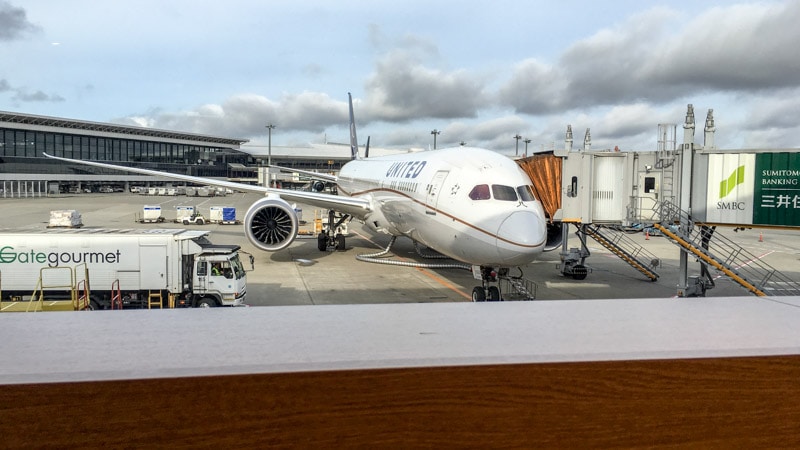
First-time Japan visitors often ask me, “ Which airport in Tokyo should I fly into, Narita or Haneda?” This is a tough question, as there is no easy answer.
Which airport you fly into depends on factors including price, connections, the location of your hotel, and where you are heading after you land. Both airports are world-class. They offer excellent services and some of the best on-time performances of any airport worldwide.
Narita International Airport is further from central Tokyo than Haneda International Airport. Almost all international flights land at this airport. There are plenty of public transportation options to reach central Tokyo from the airport, including the JR Narita Express, the Keisei Skyliner, buses, taxis, and even helicopters.
Haneda International Airport is closer to central Tokyo than Narita International Airport. Almost all domestic flights land at this airport. There are fewer transportation options from the airport to central Tokyo, some requiring transfers, but the journey is much quicker and cheaper.
If you are looking for more information about Tokyo and Japan, I highly recommend you pick up a guidebook such as Lonely Planet Best of Tokyo 2020
Table of Contents
Narita International Airport
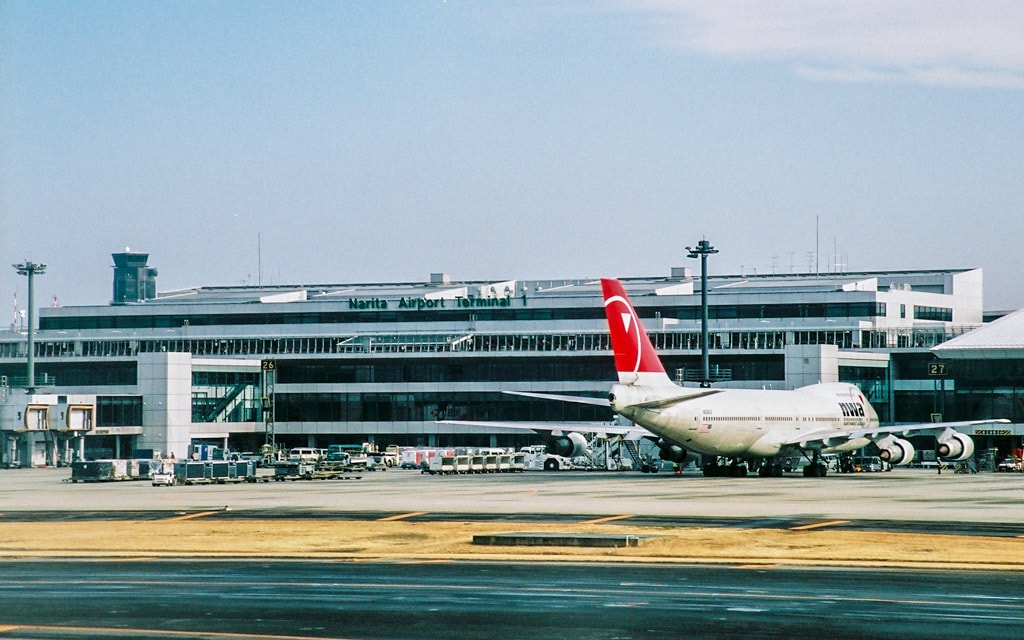
If you are flying into Tokyo from the United States or other international destinations, you will most likely land at Narita International Airport. The airport lies about 37 miles (60 kilometers) east of central Tokyo.
About half of all international passengers traveling to Japan pass through Narita International Airport. Even with all these passengers, the airport is only the second busiest airport in Japan after Haneda Airport.
Narita Airport is the central international hub for Japan Airlines (JAL) and All Nippon Airways (ANA). The airport also serves as a global hub for United and Delta. Almost all major international airlines have flights that arrive and depart at Narita Airport.
Low-cost carriers such as Jetstar, Vanilla Air, and Peach Aviation also use the airport.
Two companies operate trains between Narita International Airport and central Tokyo: JR East (East Japan Railway Company) and Keisei Electric Railway.
Pros of arriving and departing at Narita International Airport
- Extensive selection of international airlines arriving and departing.
- There are more public transportation options to central Tokyo than Haneda Airport.
- Narita Express allows direct access to major stations, including Tokyo Station, Shinjuku Station, and Shibuya Station.
Cons of arriving and departing at Narita International Airport
- Located further away from central Tokyo
- Public transportation options are more expensive than Haneda Airport.
How to get to Tokyo from Narita International Airport by JR East lines
JR East offers two main ways to reach central Tokyo from Narita International Airport.
The first is the more expensive but comfortable Narita Express train. The second is the slower but much cheaper Narita Line Rapid Train/Sōbu Line Rapid Train.
JR Narita Express (N’EX) Train
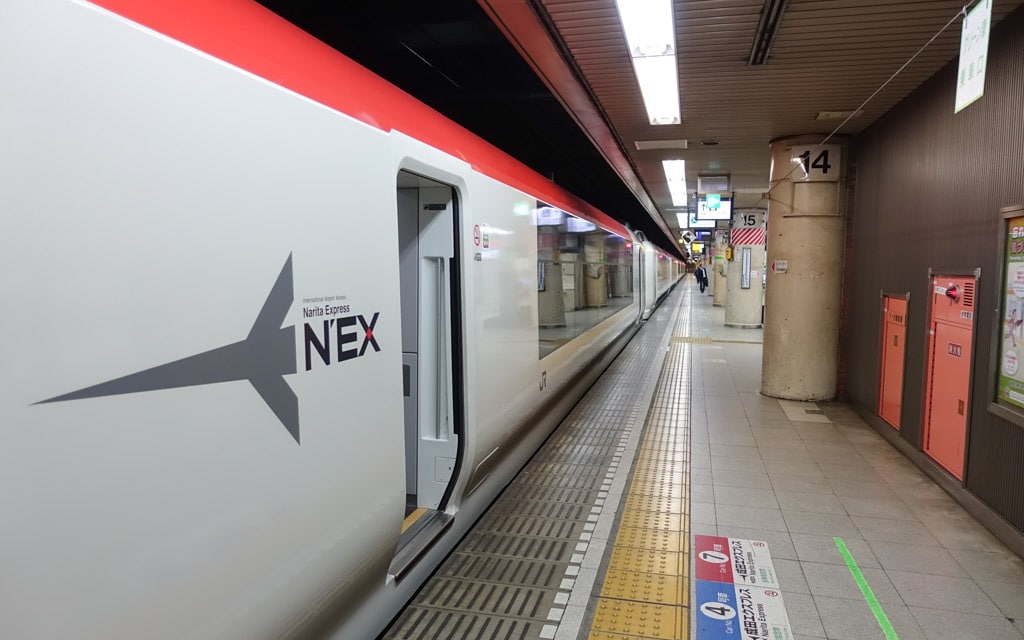
The Narita Express (N’EX) is my favorite way of reaching central Toyko from Narita Airport. I often stay in Shinjuku , so I usually find myself taking the Narita Express train each time I land in Tokyo.
The Narita Express stops at major stations across Tokyo, including Tokyo Station, Shibuya Station, Shinjuku Station, and Ikebukuro Station. Certain trains continue to Yokohama, Totsuka, and Ofuna.
Prices and times vary by your final destination and if you are traveling in the high or low season.
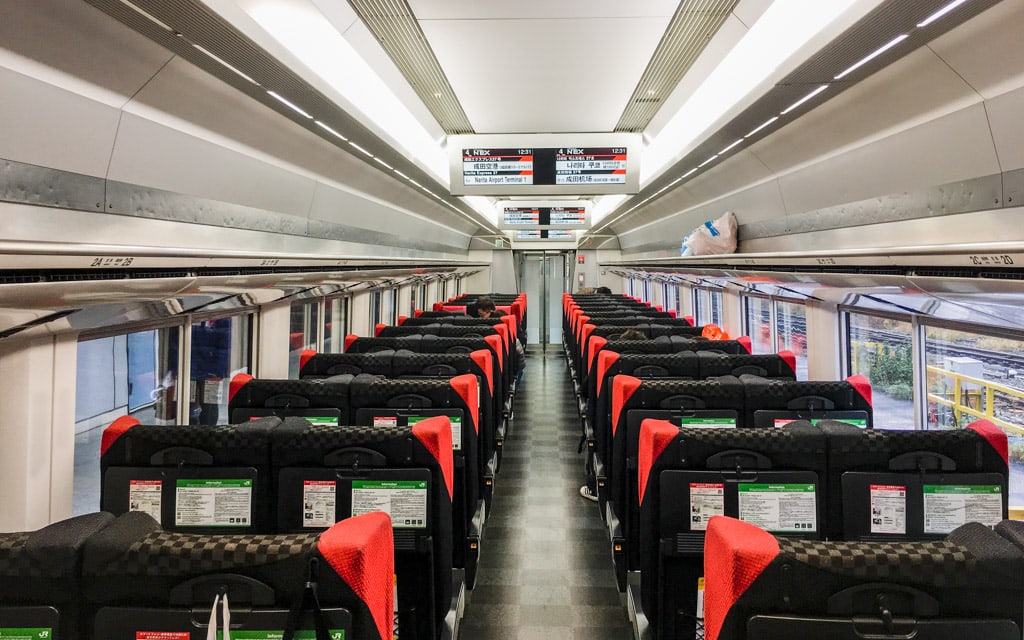
The inside of Narita Express trains is very comfortable. They feature airplane-style seats, plenty of luggage space, overhead bin space, and LCD screens. These screens alert travelers of important information about arriving and departing flights, the current location of the train, and estimated travel and arrival times.
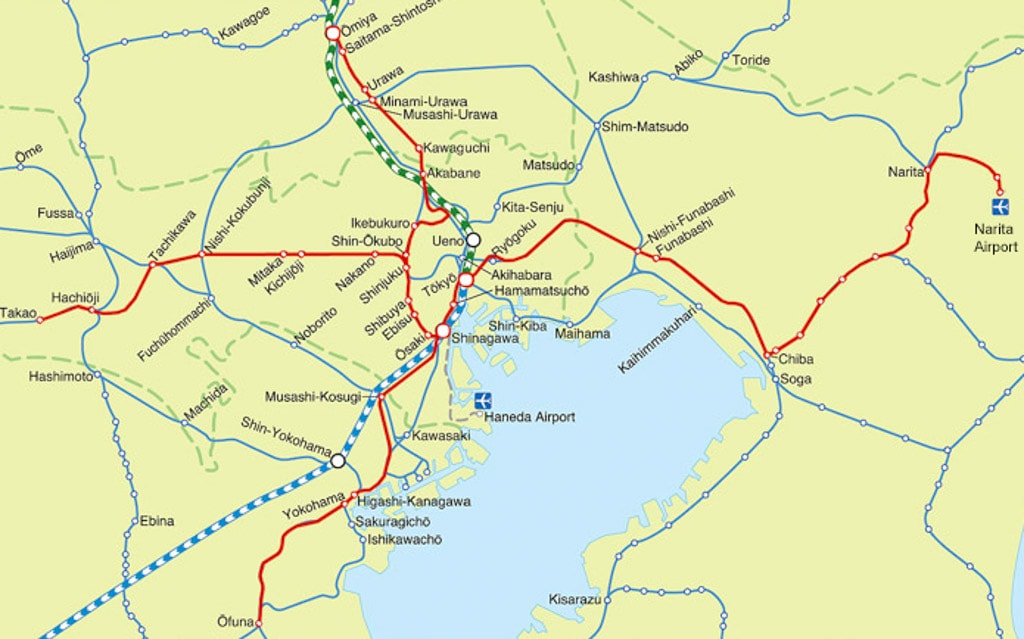
Certain rail passes fully cover the journey on the Narita Express. However, using your JR Pass on the Narita Express will use up one of your days, so make sure you plan your journey correctly.
Are you looking to purchase a Japan Rail pass? I highly recommend buying your pass through an official vendor such as JRailPass.com .
Narita Express one-way fares and times from Narita Airport to:
N’EX Tokyo Round Trip Ticket
If your flights depart and arrive at Narita Airport, you can purchase a round-trip ticket on the Narita Express to save money.
The pass allows passengers to travel round trip between Narita Airport and stations across the Greater Tokyo Area (major stations listed above).
A round-trip ticket costs 5,000 yen for adults and 2,500 yen for children (6-11). The pass can save you considerable money over purchasing separate one-way tickets.
The N’EX Tokyo Round Trip Ticket is valid for two weeks after its first use and is good for reserved seats in ordinary cars only.
A couple of things to note about Narita Express train times and fares:
- Not all Narita Express trains stop at the same stations. Make sure you check the schedule beforehand to ensure that you are on the right train and the correct train car.
- To look up the exact fares and times, you can visit https://www.hyperdia.com/ .
JR Narita Line Rapid Train/JR Sōbu Line Rapid Train
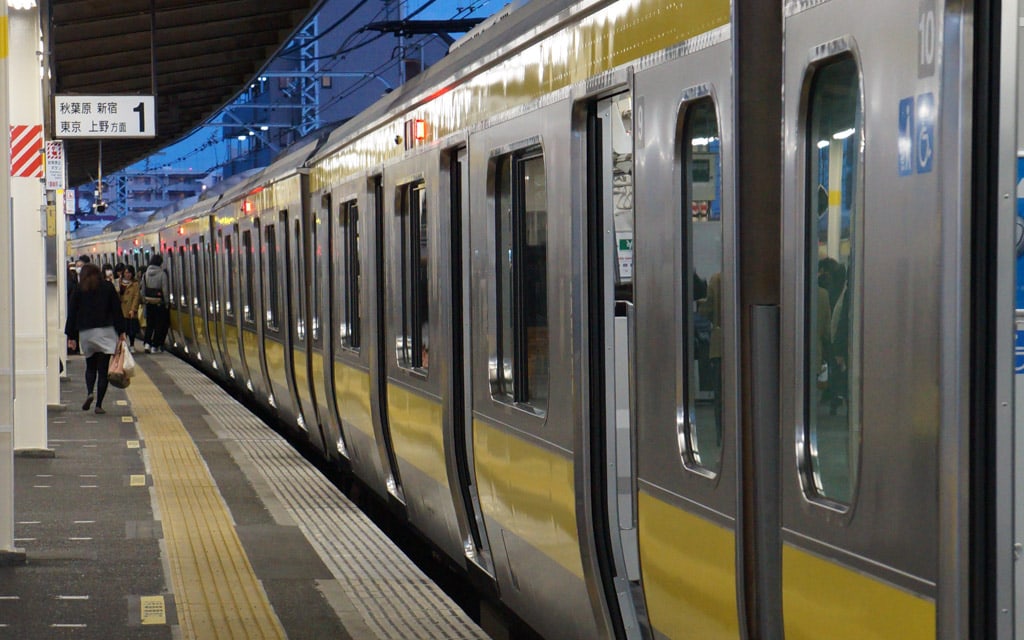
An alternative to the more expensive Narita Express is the slower and cheaper Narita Line Rapid Train/Sōbu Line Rapid Train .
The train leaves Narita Airport on the Narita Line as it heads towards Chiba Station. You do not need to change trains at Chiba Station. The train continues on the Sōbu Line to Tokyo Station.
The journey takes about 90 minutes and costs 1,320 yen. There is only about one departure per hour.
The journey on the Narita Line Rapid Train/Sōbu Line Rapid Train is fully covered by the Japan Rail Pass , JR East Pass, and JR Kanto Area Pass.
How to get to Tokyo from Narita International Airport by Keisei Electric Railway
The Keisei Electric Railway operates three lines between Narita Airport and Tokyo: the Skyliner, the Keisei Narita Sky Access Line (Access Express), and the Keisei Main Line (Limited Express).
Keisei Skyliner
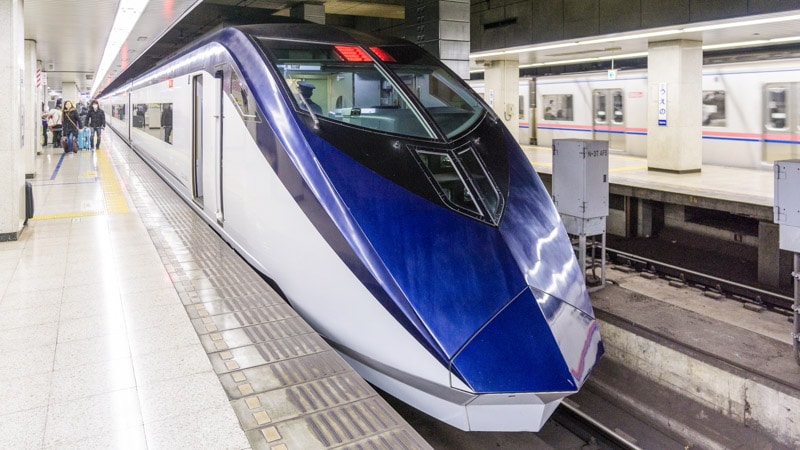
The Keisei Skyliner is one of the quickest transportation options into central Tokyo. The Skyliner travels at a top speed of 100 mph (160 km/h), just slower than the Shinkansen bullet train.
The Skyliner connects Narita Airport Station with Keisei-Ueno Station, with limited stops at Airport Terminal 2 Station and Nippori Station. No transfers are required to reach these two stations.
Its main competitor is the JR Narita Express.
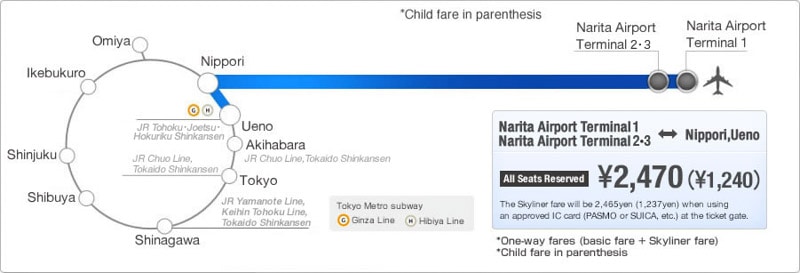
The quickest one-way journey takes about 40 minutes. Three trains depart per hour, and the train stops at Narita Airport Terminal 1 and Narita Airport Terminal 2-3.
From Narita Airport, the Skyliner takes about 40 minutes to reach Nippori Station and another 5 minutes to reach Keisei-Ueno Station.
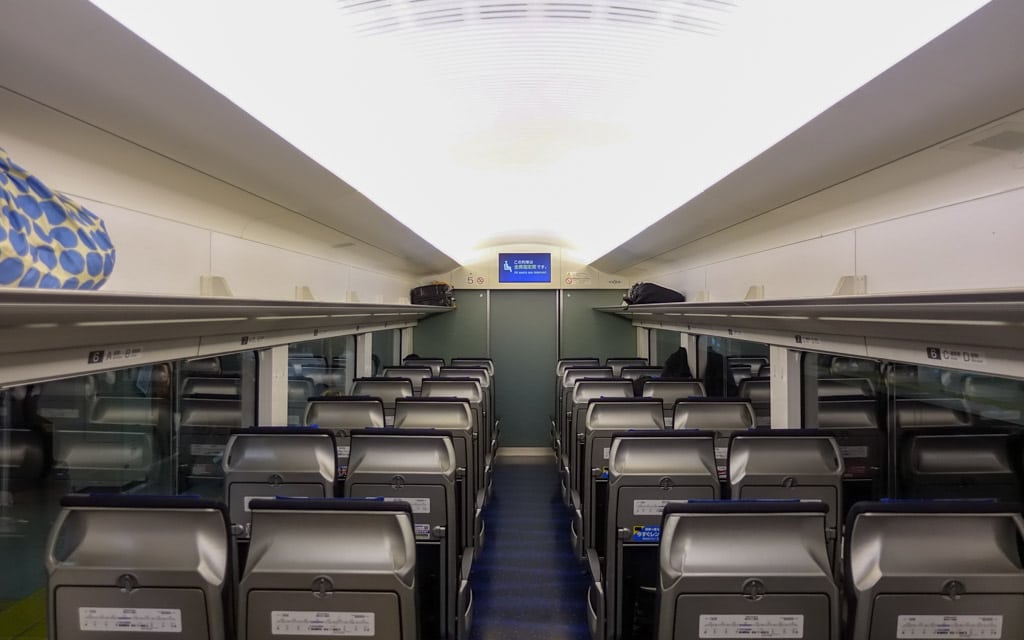
The interior of the Skyliner is quite similar to that of the Narita Express.
All trains feature reserved airplane-style seats, generous luggage space, overhead bins, and free Wi-Fi.
One-way Skyliner fares :
- Adults: 2,200 yen (non-Japanese citizens) or 2,470 yen (Japanese citizens)
- Children: 1,100 yen (non-Japanese citizens) or 1,240 yen (Japanese citizens)
The Skyliner works best for those who must reach the Nippori or Ueno areas.
Suppose you must reach other central Tokyo stations, such as Tokyo Station, Ikebukuro Station, Shinjuku Station, or Shibuya Station. In that case, you must transfer to another line or take the Narita Express.
The full Keisei Skyliner timetable: https://www.keisei.co.jp/keisei/tetudou/skyliner/us/traffic/skyliner.php .
Keisei Narita Sky Access Line (Access Express)
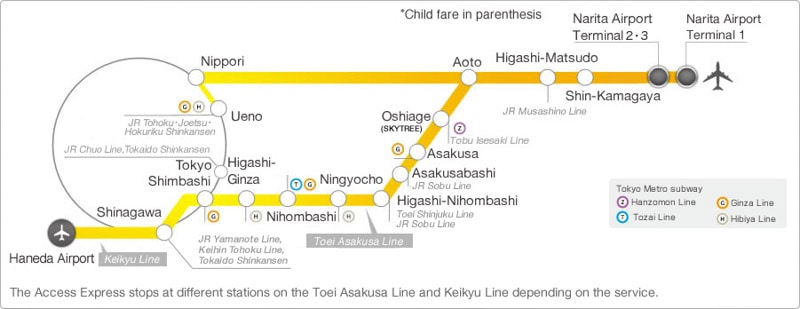
The Keisei Narita Sky Access Line (Access Express) offers direct access to Nippori Station and Keisei Ueno Station, just less frequently and slower than the Skyline. Other departures require a transfer, so be sure to check the schedule.
The Access Express also offers direct access to stations in eastern Tokyo, including Oshiage Station (Tokyo Skytree), Asakusa Station, Higashi-Ginza Station, and Haneda Airport. Other destinations will require a transfer.
Fares vary by your final destination.
One-way Keisei Narita Sky Access Line (Access Express) fares from Narita Airport to: :
- Keisei-Ueno Station: about 65 mintues. 1,240 yen
- Oshiage Station: about 55 minutes. 1,170 yen
- Asakusa Station (Tobu Toei Metro): about 60 mintues. 1,290 yen
- Higashi-Ginza Station: about 70 minutes. 1,330 yen
- Haneda Airport: about 105 minutes. 1,800 yen
Keisei Main Line (Limited Express)
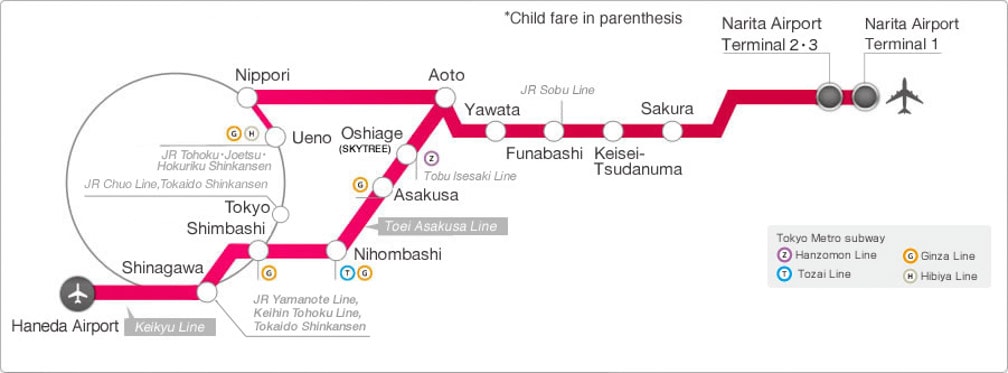
The Keisei Main Line (Limited Express) is the slowest and cheapest Keisei train option from Narita Airport to destinations around Tokyo.
The line runs the same route as the Access Express Line but with more frequent stops. You will need to transfer to reach many of the stations.
One-way Keisei Main Line (Limited Express) fares from Narita Airport to :
- Keisei-Funabashi Station: about 50 minutes. 740 yen
- Aoto Station: about 67 minutes. 920 yen
- Nippori Station: about 78 minutes. 1,030 yen
- Keisei-Ueno Station: 83 minutes. 1,030 yen
How to get to Tokyo from Narita International Airport by bus
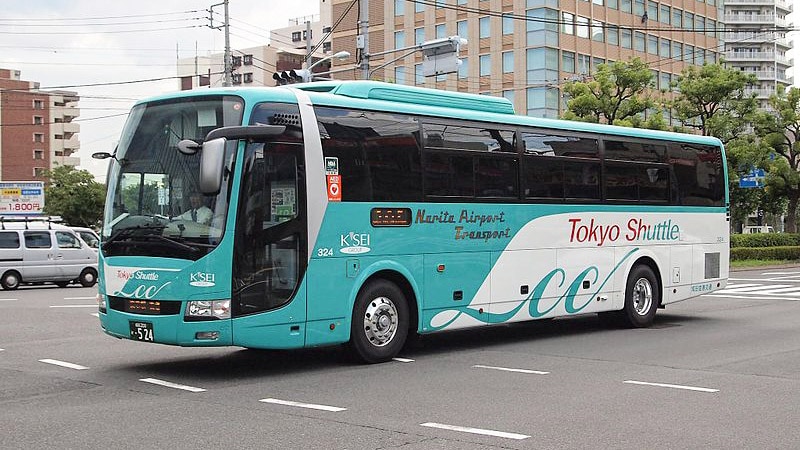
A great alternative to taking trains from Narita Airport to Tokyo is the bus .
Many bus companies offer direct connections to locations across Tokyo and nearby prefectures.
Prices for these buses vary greatly depending on services and your destination. Limousine buses can cost as much as 3,500 yen one way, while new, low-fare companies have started offering one-way fares for as low as 1,000 yen.
Buses departing from Narita Airport leave from the bus lane on the first floor of each terminal.
Buses arriving at Narita Airport arrive at the bus lane on the 4th floor of Terminal 1, the 1st and 3rd floors of Terminal 2, and outside of Terminal 3.
You can view a complete list of bus companies, timetables, and fares at https://www.narita-airport.jp/en/access/bus/ .
How to get to Tokyo from Narita International Airport by taxi
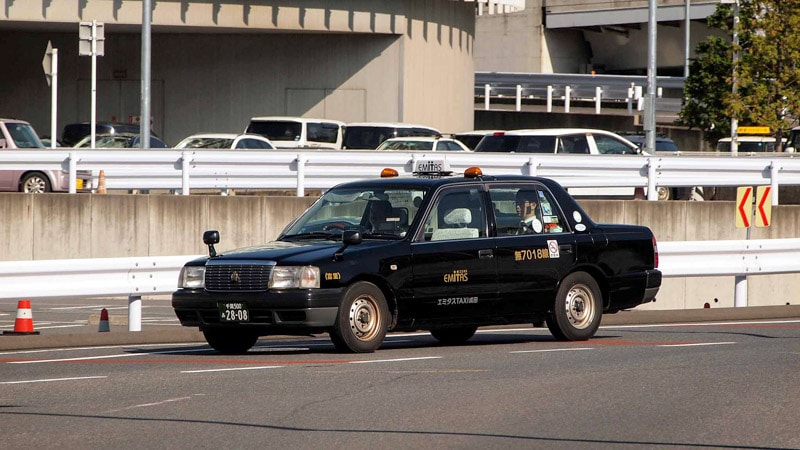
So you want to take a taxi from Narita Airport to Tokyo? Be prepared to spend.
As mentioned, Narita Airport lies about 37 miles (60 kilometers) east of central Tokyo. Since the airport is so far from the city center, taxi rides into the city are pretty expensive. As explained before, there are much cheaper options for reaching the city.
If you must get a taxi or feel like splurging on one, you can expect to spend around 20,000 yen or more per ride to your destination.
Taxi rates can vary greatly depending on your destination, time of day, and traffic conditions. I have listed fixed-rate taxi fare options below.
Standard and fixed-rate taxis are available at stand 15 on the first floor of Narita Airport Terminal 1 or at stands 29, 30, and 31A on the first floor of Narita Airport Terminal 2. Those at Terminal 3 will have to use the intercom on the first floor.
Fixed one-way taxi fares from Narita Airport to: :
- Edogawa, Katsushika, Adachi: 16,000-18,500 yen
- Koto, Sumida, Odaiba, Higashi-Yashio: 19,000-19,500 yen
- Chuo, Chiyoda, Taito, Bunkyo, Arakawa: 20,000-21,500 yen
- Shinjuku, Toshima, Nakano, Shibuya, Meguro, Minato (excluding Odaiba), Shinagawa (excluding Higashi-Yashio): 22,000-22,500 yen
- Itabashi, Kita, Nerima: 23,500-25,000 yen
- Setagaya, Suginami, Mitaka, Musashino: 24,500-26,500 yen
Haneda International Airport
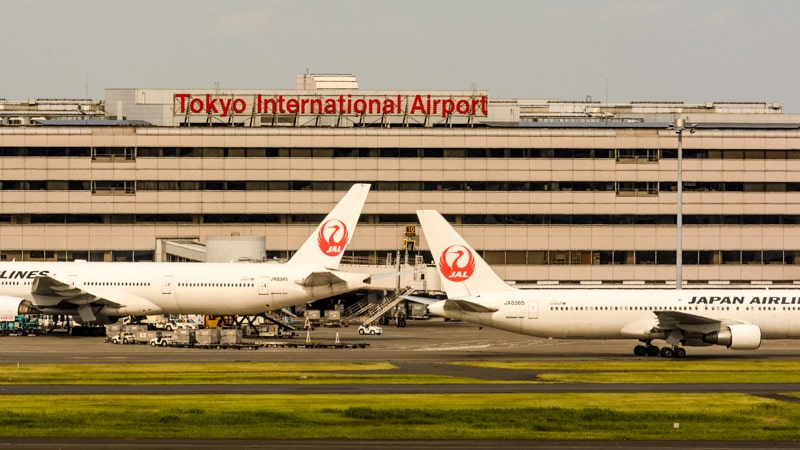
Tokyo International Airport, more commonly known as Haneda International Airport , is one of two major airports in the Greater Tokyo Area. The airport lies only 8 miles (14 kilometers) south of Tokyo Station.
Haneda Airport serves almost all domestic flights departing and arriving in Tokyo. If you are flying from anywhere in Japan to Tokyo, then odds are you will land at Haneda.
Unknown to many, Haneda Airport is actually the second busiest airport in Asia, with over 72 million passengers passing through it in 2014.
The airport serves as the primary base of Japan Airlines and All Nippon Airways (ANA). It also serves as the base of smaller Japanese airlines, including Solaseed Air, Air Do, Skymark Airlines, and StarFlyer.
Although most international flights arriving in Tokyo depart and land at Narita Airport, Haneda Airport is beginning to serve many new international routes.
Some airlines that have routes here include Hawaiian Airlines (from Honolulu), Delta Airlines (from Los Angeles and Seattle), United Airlines (from San Francisco), and American Airlines (from Los Angeles).
The two main ways to reach central Tokyo from Haneda Airport are the Keikyu Line and the Tokyo Monorail. Both require a transfer to the JR Yamanote Line to reach major stations in central Tokyo.
Pros of arriving and departing at Haneda International Airport
- The airport is much closer to central Tokyo than Narita Airport
- Public transportation options are cheaper than Narita Airport
Cons of arriving and departing at Haneda International Airport
- Limited options for international flights
- Trains leaving the airport for central Tokyo require a transfer
- One of the busiest airports in the world
How to get to Tokyo from Haneda International Airport by Keikyu Line and JR Yamanote Line
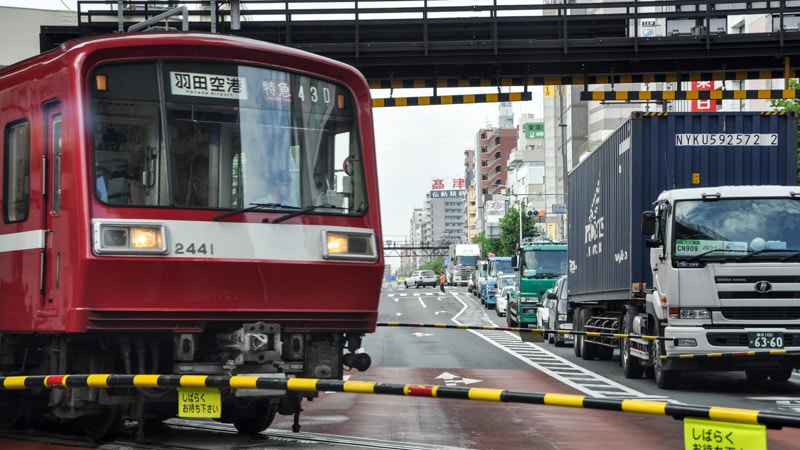
Getting from Haneda International Airport to destinations across central Tokyo by Keikyu Line and JR Yamanote Line is simple but requires a transfer at Shinagawa Station.
The journey is cheap and quick, but if your final destination is not Shinagawa Station, you must take at least two train lines.
To get to destinations such as Toyko Station, Shinjuku Station, or Shibuya Station, you will first have to board a Keikyu Line train (towards Sengakuji Station). You will need to transfer from Shinagawa Station to the JR Yamanote Line.
The JR Yamanote Line circles central Tokyo. Depending on your destination, you travel in either direction from Shinagawa Station.
The journey from Haneda Airport to Shinagawa Station takes about 15 minutes and costs 410 yen.
One-way JR Yamanote Line fares from Shinagawa Station to :
- Shinjuku Station: about 19 minutes. 200 yen
- Shibuya Station: about 12 minutes. 170 yen
- Ebisu Station: about 10 minutes. 160 yen
- Tokyo Station: about 11 minutes. 170 yen
- Ueno Station: about 19 minutes. 200 yen
How to get to Tokyo from Haneda International Airport by Tokyo Monorail and JR Yamanote Line
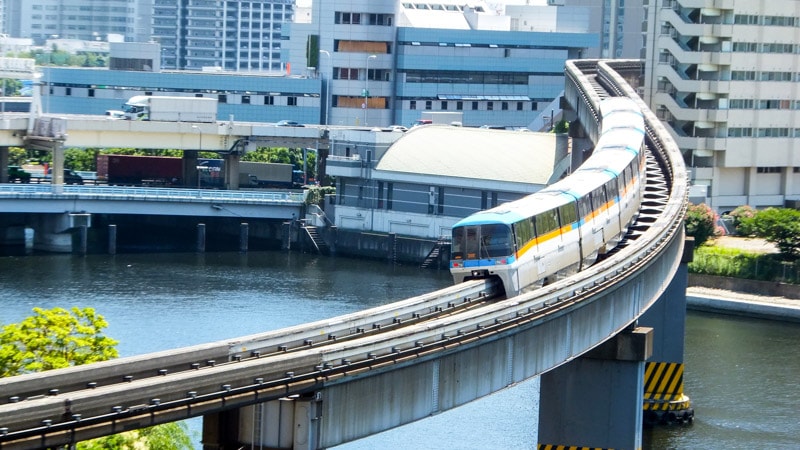
Another way of getting to Tokyo from Haneda Airport is by the Tokyo Monorail . The monorail also requires a transfer to reach major stations across Tokyo.
From the international terminal at Haneda Airport, take the Tokyo Monorail to Hamamatsuchō Station. From here, you can transfer to the JR Yamanote Line.
The journey from Haneda Airport to Hamamatsuchō Station takes about 15 minutes and costs 490 yen.
One-way JR Yamanote Line fares from Hamamatsuchō Station to :
- Shinjuku Station: about 25 minutes. 200 yen
- Shibuya Station: about 18 minutes. 200 yen
- Ebisu Station: about 15 minutes. 170 yen
- Tokyo Station: about 6 minutes. 160 yen
- Ueno Station: about 14 minutes. 170 yen
How to get from Haneda Airport to destinations across Tokyo and Japan by Keikyu Limousine Bus
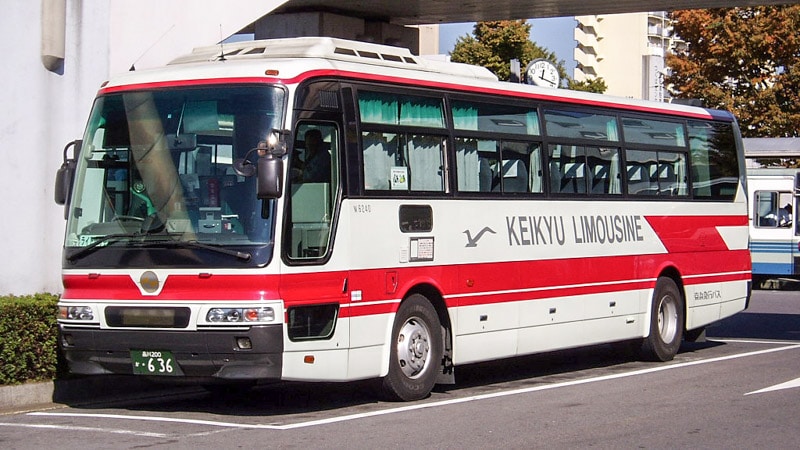
The Keikyu Limousine Bus provides direct access to destinations across the Greater Tokyo Area and beyond.
Unlike the Keikyu Line train and Tokyo Monorail, the Keikyu Limousine Bus requires no transfers to reach its destination, which is perfect for those with large or excess luggage.
The downside of taking the Keikyu Limousine Bus is that the destinations are limited, and you may need to take an additional train to reach your final destination.
All seats on the bus are reserved, and space is available for any luggage you may have.
One-way Keikyu Limousine Bus fares from Haneda Airport to :
- Yokohama Station: about 40 minutes. 580 yen
- Yamashit Park/Minato Mirai 21 (Yokohama): about 35 minutes. 720 yen
- Odaiba (Hotel Grand Pacific Le Daiba): about 30 minutes. 520 yen
- Tokyo Sky Tree Town: about 50 minutes. 920 yen
- Shibuya: about 60 minutes. 1,030 yen
- Gotemba/Hakone Togendai Station: about 155 minutes. 2,260 yen
- Hakone-Yumoto Station: about 130 minutes. 1,950 yen
- Mt. Fuji: about 150 minutes. 2,470 yen
- Shinigawa Station to Gotemba Premium Outlets: about 95 minutes. 1,650 yen
How to get from Haneda Airport to destinations across Tokyo by Keikyu Taxi
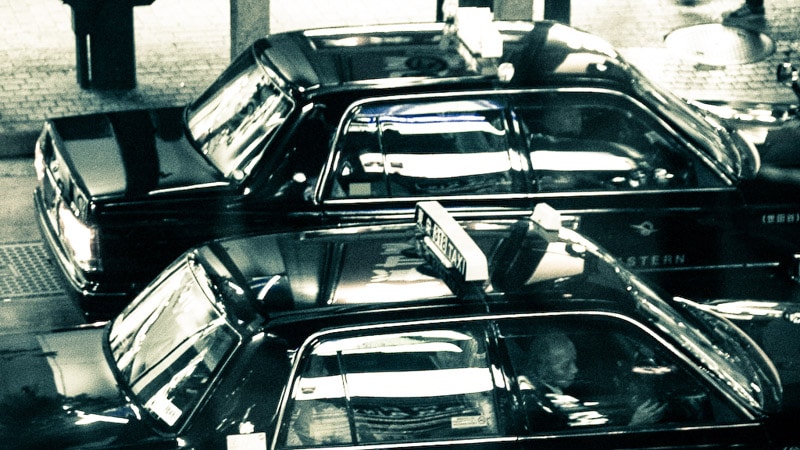
Taking a Keikyu Taxi could be your best option if you arrive early or late at Haneda Airport or don’t want to deal with the hassle of public transportation.
Keikyu Taxi offers set fares, which increase late at night and early in the morning.
One-way Keikyu taxi fares from Haneda Airport to :
- Chiyoda Area: 5,600 yen (set fare), 6,800 (late night)
- Shibuya Area: 6,400 yen (set fare), 7,600 (late night)
- Shinjuku Area: 6,800 yen (set fare), 8,200 (late night)
- Taito Area: 6,900 yen (set fare), 8,200 (late night)
- Toshima Area: 8,500 yen (set fare), 10,100 (late night)
Last Updated on April 17, 2024
44 thoughts on “Narita or Haneda? Which of Tokyo’s airports should you fly into”
Thanks for this very detailed and useful post!
Is the monorail included on the Japan Rail pass?
Yes. The monorail is covered by the JR Rail Pass.
Do you have information for transportation during the 2019 Rugby World Cup?
Transportation options should be business as usual. You can find timetables, ticket prices, and detailed information by visiting http://www.hyperdia.com/en/
Hi Anthony, this is a great post, but unless I missed the answer it seems you haven’t stated a preference for either airport.
For a first time visitor looking to stay in Yokohama for the Rugby World Cup, which would you err towards?
Also do you think it will still be viable to use the rail pass during the tournament as I assume the trains will be very busy, so booking the bullet train could be risky, unless you can book them all in one visit to the booking office at the first train station?
Sorry for asking so much, but yours is the first post with useful information on I’ve found 🙂
I always recommend Haneda Airport whether you are staying in Tokyo or Yokohama. It is much closer to Tokyo and very close to Yokohama. It might be more busy but I think you should be fine with seats for the bullet train even during the Rugby World Cup. If you know your plans ahead of time, you can book seat reservations in advance to be safe. Otherwise, just book a day or two before. Also remember, most trains have unreserved seats, and if those are full, you could stand. If you book a seat reservation and you don’t need it, you can always go back to the station and cancel it.
Thanks for this detailed post. My son and I will be traveling through Japan in Feb and I’m considering getting a flight with a longer layover so we can explore Tokyo for a day. He has a US passport I don’t but I have a green card do you know if I can get my Visa there or do I need to get it here in LA? I’m also a foodie what would you recommend for us to go to to eat some delicious sushi, ramen and steak? Thank you so much for your time!
Raymond, Most tourists to Japan do not require a visa. Which country do you have a passport for? As for food, I recommend visiting Shinjuku and Shibuya. You will find an endless amount of sushi, ramen, and steak restaurants.
Hi Anthony. I have booked a flight to Haneda from Lomdon in February 2019. My husband and I are vegetarians & do not eat fish but can eat eggs We want to visit interesting places during our 2 week stay. Will there be a problem getting vegetarian food without fish? Also are there Indian restaurants? Thanks
While I do not have much knowledge with vegetarian and Indian restaurants in Japan, I do not believe it will be an issue. I would just use Yelp and TripAdvisor to find restaurants and I bet you will be surprised at the number of options.
Anthony Thank you for such an informative site. We are flying from London and cruising from Yokohama. Which route would you recommend? I see that the majority of international flights arrive in Narita.
I would book a flight into whichever airport is cheaper. While Haneda Airport is closer to Yokohama, it is easy to get to Yokohama from either airport.
Hello Anthony. You mention JR. I had believed you can only travel JR if you buy passes in your own country. ie Japan residents cannot use JR line. Is this true?
There might be a few exceptions, but as I understand, Japanese residents are not allowed to purchase most JR Rail Passes. Foreigners can buy some passes in Japan (such as the 7 or 14 day JR Rail Pass), online, or through a travel agent/agency in their home country. Anyone can use any JR Line with a valid ticket or pass.
Hi Anthony, Great post. Lots of useful information. I have a 7 hour layover in Heneda. Any recommendations on getting to see something in a short amount of time. Thanks, Craig
Sorry for the late reply. Everything in Japan seems to run smoothly including trains, airport security, and customs, so with 7 hours you could head into the city for a few hours. What to see is a tough question.
You could take the Tokyo Monorail or Keikyu-Kuko Line to Zojoji Temple. Takes about 30 minutes by train then another 10 minutes on foot. You could explore the temple then wander the area until you find a local izakaya or restaurant that looks good. If you have more time you could explore the Kyu Shiba Rikyu Garden near Hamamatsuchō Station.
Enjoy your short visit to Tokyo.
We are cruising into Tokyo in September. We are looking to book our flight back to Orlando, FL. Any suggestions on the airport? And getting from the ship to the airport?
Haneda Airport (HND) is closer to the Tokyo Cruise Port. With that said, getting to Narita Airport (NRT) isn’t too difficult to reach, just might take a little longer by Narita Express from Tokyo Station. I would just book whichever airport is more convenient for you (price, connections). Narita Airport is usually cheaper with more connections back to the states.
Anthony, Thank you for the thoughtful, insightful, and detailed article. I’m planning on going to Tokyo for the Olympics and this information is very helpful in my planning. Much appreciated!
Hi Anthony, great info, thanks for all of it. On Nov 2, I arrive at Narita at 8pm and Nov 6, leave Haneda at 8am. I plan (?) to get a hotel near relevant airport upon arriving and for departing. Have never been to Japan before. Want to experience Bullet Train, see Mt. Fuji, and sightsee Tokyo. Logistically, is it best to stay near Narita or Haneda for the 3 days/2 nites in between?
I would stay either neither Tokyo Station or Shinjuku Station. Those two stations will give you the best connections to other parts of Japan. Also, I believe the bullet train stops only at a few stations in Tokyo. I believe Tokyo Station, Ueno Station, and Shinagawa Station.
Anthony, What is the cheapest accommodation in Tokyo? I am planning to stay a few days in November of this year. thank you
While it depends on what you consider cheap, I find that you can usually find affordable Airbnb properties around Shinjuku Station.
“But keep in mind that using your JR Pass on the Narita Express will use up one of your pass days, so ensure that you plan your journey correctly.”
Could you explain this? I was under the assumption that if I purchased something like a 14 day pass, I had unlimited rail rides during the 14 days. Is this not the case?
You are correct. I guess I could have written it more clearly. What I was trying to say was that if you activate your JR Rail Pass on day 1 for only the Narita Express and then stay 3-4 days in Tokyo, then you might not be getting your money’s worth with the pass. For some, it pays off to pay out of pocket for the ride from Narita to Tokyo, stay a few days, then activate your pass for the remainder of the trip. Of course, it will depend on your plans, how long you are staying in Japan, and which pass you get.
Hiya, thanks for all the great info so far. Planning a trip with my daughter(21) in August 2020, it was for Olympics but its more now for shopping. We are going to stay in Shibuya for about a week, flying into Haneda airport if poss. What’s the best way to get to Shibuya, and what do you recommend we do and where to eat… Thanks
To reach Shibuya from Haneda Airport, I recommend you check out http://www.hyperdia.com/ . It will show you many options and prices. As for food, Shibuya seems to have an endless amount of restaurants on every corner. You could always just walk around and see what looks good. If you like affordable sushi in a laid back environment, I recommend Genki Sushi or Uoebi Sushi .
Hi Anthony,
Great informational post! I will be traveling to tokyo for 2020 summer olympics and this definitely helps. Just to confirm if i buy a rail pass for me and my son and we arrive in narita airport. If we are staying about 7 days and i choose buy 2 one way tickets and take the narita express to tokyo instead of activating our passes does this mean on our last day i can use the jr rail passes for our one trip from tokyo to narita airport but nothing else correct?
The day you activate your pass will be day 1. So if you activate your 7 day pass on Monday, the pass will be valid until Sunday. If you travel back to Narita Airport within this period, you will be able to use your pass for the journey.
Hello Anthony! My fiancé and I would like to honeymoon to Japan in early November. It would be our first visit and any suggestions you have for an affordable magical trip would be much appreciated! Cheers, S
Sanaya, Congratulations! November is my favorite time to visit Japan. For your first time I recommend Tokyo, Kyoto, and Osaka with side trips if you have more time. You should also be able to view some of the fall colors which is spectacular. Enjoy your trip!
Hi Anthony, Good to read about your familiasing of Tokyo. Me and my wife plan to go Tokyo on free and easy. If go, this is our first visit to Japan. If we choose to stay a hotel near to those shopping centre (in Tokyo), which hotels do you suggest, our budget is about Singapore Dollars 250 per nite. Is that we must book a train or bus pass in advance ? Can we buy the ticket at the site ? What happened if we miss the schedule , are we allowed to take the next available transport ? Do they announce in English ? Both of us are above 65 years old. Thanks.
Sorry for the late reply.
I would recommend staying near Shinjuku Station. Surrounding the station are many restaurants, shopping malls, and tourist attractions. When you think of Tokyo at night, it’s Shinjuku. While I usually stay at Airbnbs, a few top rated hotels in the Shinjuku area include Hundred Stay Tokyo Shinjuku, Citadines Shinjuku Tokyo, Tokyu Stay Shinjuku. I would recommend using Google or Trip Advisor and researching hotels in the Shinjuku area and find what meets your needs.
If you are planning to travel around Japan by rail, I highly recommend you purchase a rail pass. There are many types of rail passes, but the most popular are the 7, 14, and 21 day nationwide passes. These passes can be purchased overseas or in Japan for an additional charge. Once you have your rail pass, you can use it to reserve seats on many trains including the shinkansen (bullet train). If you miss your train, you can just take the next train. If you reserved a seat and missed your train, be sure to cancel the seat reservation by visiting a ticket office located inside every train station.
Hi Anthony , we r traveling to Tokyo January 2020 arriving at Haneda Airport late evening, this is our first visit in Japan , we r there for 7 days then flying to Singapore from Osaka . Which area should we stay so we can explore Tokyo for s few days and r still able to travel to Kyoto and Osaka ?
For traveling to Kyoto and Osaka by shinkansen, your easiest option would be to stay near Tokyo Station.
With that said, I would recommend you stay around Shinjuku Station. It is one of the more popular areas of Tokyo and has a lot of sights to see, restaurants, and great nightlife. While the shinkansen does not stop at Shinjuku Station, it’s just a quick train ride to Shinagawa Station where you can board the bullet train on to Kyoto and Osaka.
Does Air Canada fly into Haneda Airport?
Air Canada operates a non-stop flight from Toronto–Pearson to Hanenda Airport (Air Canada AC 1).
Any recommendations for Hotels in the city center-4 star? WE have two days to visit before a cruise and want to make the most of our time. We may plan to visit Disney, but heard Shiyuba & Harajuku are a must….any other must-do’s with only two days? Will it be easier to just take taxi’s?
Very good read! My 0.01 cents… If I have a choice of flying to either (and most of the time there is with major US airlines and their partners, either ANA or Air Japan) and am heading to central Tokyo while traveling light, I would personally pick Haneda as it is so much closer to the city. While it’s true that Monorail does require a transfer, if I am staying east of main Tokyo station around Ginza or Kyobashi (and I usually do stay in this area instead of Shinjuku or Shibuya) technically there’s the Keikyu line that directly takes me there from Haneda without needing to transfer.
Hi Anthony, I’m planning my first visit to Tokyo with a 4year old kid. Will arrive at Haneda Airport around 4pm local time. I’m thinking to stay 2 nights at Mount Fuji then head straight Shinjuku area after that for another 5 nights stay. Would you recommend this approach and the feasibility?
Love your post! I’m taking my 19 year old daughter to Tokyo for the first time end of this month. We will be staying 4 days. Do you recommend I get the 7 days JR Pass? We will be arriving at Narita International Airport. Also, can you explain better how the JR Pass like once it’s activated, it doesn’t matter how I use it as long as it’s within 7 days of activation? For example, if I used it on the express train to Tokyo from Narita Airport, you said that will use up one whole day of rides, so can I use day 2 on day 1? I hope I’m making sense. Is Tokyo in general a pretty safe city? Does it matter where our AirBnb is located? What I’m asking is are there bad areas in Tokyo? My daughter is really into Anime and Cosplay, where do you recommend we go for shopping that is not too expensive. She really likes anime figurines too. Thanks in advance for your help.
Great posts Anthony, but the answer to your question is that Haneda is the most convenient option by far. It is smaller, closer to the city and has the same bus and rail links as Narita. I am a 6 year resident of Tokyo and always choose HND where possible, though everyone will have no problem with either airport, but HND is cheaper! If you want to see a different side of Japan whilst in Tokyo, try Kamakura, lots of temples and the ocean and easy to get to by Japans wonderful subway train system
I love Kamakura! I can’t wait to come back to Japan, hopefully in 2022. I agree that HND is much easier and centrally located. But, for those who have a JR Rail Pass and are heading to Shinjuku, like often in my case, sometimes its not too bad to hop on the Narita Express and be there in an hour. I guess it depends on where in the city you are staying and if you have a pass. Otherwise, HND is easier for sure.
Leave a Comment Cancel reply
This site uses Akismet to reduce spam. Learn how your comment data is processed .
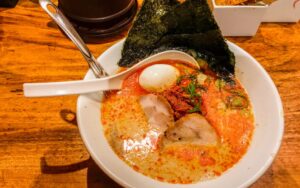
Winter is here! Check out the winter wonderlands at these 5 amazing winter destinations in Montana
- Travel Destinations
How To Get From Haneda Airport To Yokohama Cruise Terminal
Published: December 8, 2023
Modified: December 28, 2023
by Susette Fenton
- Plan Your Trip
- Travel Tips
Introduction
When planning your trip to Japan, you may find yourself arriving at Haneda Airport with the intention of heading to the Yokohama Cruise Terminal. Located on the outskirts of Tokyo, Yokohama is a bustling city with a rich maritime history. Whether you are embarking on a cruise or simply visiting the area, it’s important to know the best transportation options to get you from Haneda Airport to the Yokohama Cruise Terminal.
This article will provide you with an overview of the various transportation methods available, including trains, airport shuttle buses, taxis, and private transfer services. Each option has its own advantages and considerations, so you can choose the one that best suits your needs and preferences.
From the bustling streets of Tokyo to the picturesque waterfront of Yokohama, your journey from Haneda Airport to the Yokohama Cruise Terminal is sure to be filled with excitement and anticipation. So let’s explore the different ways to reach your destination efficiently and comfortably, allowing you to make the most of your time in Japan.
Option 1: By Train
If you prefer a convenient and cost-effective way to travel from Haneda Airport to the Yokohama Cruise Terminal, taking a train is the ideal option. The train system in Japan is renowned for its efficiency and punctuality, making it a popular choice among both locals and tourists.
From Haneda Airport, you can take the Keikyu Line to reach Yokohama. The journey takes approximately 25 minutes and offers a direct connection to the Yokohama City Air Terminal (YCAT). YCAT is conveniently located near the Yokohama Cruise Terminal, allowing for a seamless transition between the train and your cruise ship.
Upon arriving at Haneda Airport, follow the signs to the train station. Look for the Keikyu Line ticket machines or ticket counters to purchase your ticket. The fare can range from around 400 to 700 yen, depending on the time of day and the ticket type you choose.
Once you have your ticket, proceed to the platform and board the train bound for Yokohama. The trains typically run every 10 minutes, so you won’t have to wait long. During the journey, you can enjoy the comfortable seating and take in the sights of the city passing by.
When you arrive at Yokohama Station, head to the Yokohama City Air Terminal (YCAT) using the clearly marked signs. From there, it’s a short walk or taxi ride to the Yokohama Cruise Terminal.
Overall, traveling by train from Haneda Airport to the Yokohama Cruise Terminal offers a convenient and efficient option. It is particularly suitable for budget-conscious travelers who value ease of use and want to experience the efficient Japanese transportation system.
Option 2: By Airport Shuttle Bus
If you prefer a more direct and hassle-free option, taking an airport shuttle bus from Haneda Airport to the Yokohama Cruise Terminal is a convenient choice. Airport shuttle buses provide a door-to-door service, eliminating the need to navigate train transfers or carry heavy luggage.
There are several shuttle bus services available that cater specifically to travelers heading to the Yokohama area. These buses operate at regular intervals throughout the day, ensuring you have flexibility in choosing a departure time that suits your schedule.
Upon arriving at Haneda Airport, proceed to the designated area for airport shuttle buses. Look for signs and information desks that provide details on the different shuttle bus companies and their routes. It’s recommended to inquire about their specific schedule and pricing options at the information desk before boarding.
Once you have boarded the shuttle bus, sit back and relax as you are transported directly to the Yokohama Cruise Terminal. The journey time may vary depending on traffic conditions, but typically takes around 45 minutes to an hour.
One advantage of taking an airport shuttle bus is that it eliminates the stress of navigating public transportation and dealing with multiple transfers. Additionally, the buses are often equipped with ample storage space for luggage, providing a comfortable and convenient travel experience.
As you approach the Yokohama Cruise Terminal, inform the bus driver of your destination, and they will drop you off at the appropriate location. From there, you can easily access the cruise terminal and begin your journey.
Overall, traveling by airport shuttle bus offers a convenient and straightforward option for getting from Haneda Airport to the Yokohama Cruise Terminal. It is particularly suitable for those who prefer a direct and seamless transfer, without the need for navigating public transportation or hauling heavy luggage.
Option 3: By Taxi
If you prefer a more personalized and convenient mode of transportation, taking a taxi from Haneda Airport to the Yokohama Cruise Terminal is a viable option. Taxis offer door-to-door service and provide a direct route to your destination.
Upon arrival at Haneda Airport, you will find taxi stands located outside each terminal. Look for the designated taxi queue and join the line. Taxis in Japan are typically white or black with a clearly visible “taxi” sign on the roof.
Before entering the taxi, it’s important to note that most taxi drivers in Japan have limited English proficiency. It can be helpful to have your destination written down in Japanese characters or show a map on your phone to ensure clear communication.
It’s also important to keep in mind that taxis in Japan can be quite expensive compared to other forms of transportation. The fare from Haneda Airport to the Yokohama Cruise Terminal typically ranges from 10,000 to 15,000 yen, depending on traffic and the time of day.
The advantage of taking a taxi is the convenience and comfort it offers. Taxis in Japan are known for their cleanliness and reliability, and the drivers are familiar with the local roads and traffic conditions.
During the taxi ride, you can sit back and relax, enjoying the comfort and privacy of the vehicle. The journey time can vary depending on traffic conditions, but it usually takes around 30 to 45 minutes to reach the Yokohama Cruise Terminal from Haneda Airport.
When you arrive at the Yokohama Cruise Terminal, the taxi driver will drop you off at the appropriate location, allowing for a seamless transition to your cruise ship.
Overall, taking a taxi provides a convenient and personalized option for traveling from Haneda Airport to the Yokohama Cruise Terminal. It is ideal for those who value comfort, convenience, and are willing to pay a higher fare for a direct and hassle-free transfer.
Option 4: By Private Transfer Service
If you are looking for the ultimate convenience and luxury experience, booking a private transfer service from Haneda Airport to the Yokohama Cruise Terminal is an excellent choice. Private transfer services provide a tailored and exclusive transportation solution, guaranteeing a smooth and seamless journey.
There are various private transfer services available in Japan that specialize in airport transfers and transportation to cruise terminals. These services typically offer a range of vehicle options, including luxury sedans, Minivans, and even limousines, depending on your preferences and group size.
Booking a private transfer service can be done in advance through their websites or by contacting them directly. You will need to provide your flight details and desired pickup time, and the service will arrange for a professional driver to meet you at the designated meeting point at Haneda Airport.
Upon arrival, the driver will greet you at the airport, assist you with your luggage, and escort you to the waiting vehicle. Private transfer services pride themselves on offering high-quality service, ensuring comfort, and a hassle-free experience.
The journey from Haneda Airport to the Yokohama Cruise Terminal with a private transfer service usually takes about 30 to 45 minutes, depending on traffic conditions. During the drive, you can relax in the spacious and luxurious vehicle, enjoying amenities such as Wi-Fi and refreshments.
Once you arrive at the Yokohama Cruise Terminal, the driver will drop you off at the designated area, providing a seamless transition from the vehicle to your cruise ship.
Private transfer services offer the utmost convenience, privacy, and personalized experience, tailored to your specific needs and preferences. However, it’s important to note that this level of service comes at a higher price point compared to other transportation options.
Overall, opting for a private transfer service is an excellent choice for those who value convenience, luxury, and a customized experience when traveling from Haneda Airport to the Yokohama Cruise Terminal.
Getting from Haneda Airport to the Yokohama Cruise Terminal is a straightforward process with several transportation options available. Whether you prefer the convenience and cost-effectiveness of a train, the directness of an airport shuttle bus, the personalized service of a taxi, or the luxury and exclusivity of a private transfer service, there is a solution to suit every traveler’s preferences and budget.
If you prioritize affordability and want to experience Japan’s renowned train system, taking a train from Haneda Airport to the Yokohama Cruise Terminal is a great option. It offers convenience, efficiency, and an opportunity to see the city as you travel.
For a more direct and hassle-free journey, an airport shuttle bus provides an easy and comfortable transfer, particularly suitable for those who prefer a door-to-door service and want to avoid the complexities of public transportation.
If you value convenience and privacy, taking a taxi is a viable choice. While it may be more expensive, it offers a direct route to the cruise terminal and ensures a comfortable and stress-free experience.
For the ultimate in luxury and convenience, booking a private transfer service provides a personalized and tailored experience. Although it comes at a higher price point, it guarantees a seamless journey and the highest level of comfort and service.
Before deciding on the best transportation option, consider factors such as cost, convenience, comfort, and your personal preferences. Each option has its own advantages, so choose the one that aligns with your needs and priorities.
No matter which method you choose, the journey from Haneda Airport to the Yokohama Cruise Terminal sets the stage for an exciting adventure in Japan. So sit back, relax, and enjoy the journey as you embark on your cruise or explore the vibrant city of Yokohama.

- Privacy Overview
- Strictly Necessary Cookies
This website uses cookies so that we can provide you with the best user experience possible. Cookie information is stored in your browser and performs functions such as recognising you when you return to our website and helping our team to understand which sections of the website you find most interesting and useful.
Strictly Necessary Cookie should be enabled at all times so that we can save your preferences for cookie settings.
If you disable this cookie, we will not be able to save your preferences. This means that every time you visit this website you will need to enable or disable cookies again.
We use cookies on this site to enhance your user experience. If you continue to browse you accept the use of cookies on our site. See our Cookie Policy for more information.
- Media & PR
- Meetings & Events
- School Groups
- Travel Trade
- Select Language 简体中文 繁體中文(香港) 繁體中文(臺灣) India (English) Bahasa Indonesia 한국어 ภาษาไทย Tiếng Việt Singapore (English) Philippines (English) Malaysia (English) Australia/New Zealand (English) Français Deutsch Italiano Español United Kingdom (English) Nordic countries(English) Canada (English) Canada (Français) United States (English) Mexico (español) Português العربية Japan(日本語) Global (English)
- India (English)
- Bahasa Indonesia
- Singapore (English)
- Philippines (English)
- Malaysia (English)
- Australia/New Zealand (English)
- United Kingdom (English)
- Nordic countries(English)
- Canada (English)
- Canada (Français)
- United States (English)
- Mexico (español)
- Global (English)
- Fujiyoshida
- Shimonoseki
- Ishigaki Island
- Miyako Island
- Kerama Island
- Tokyo Island
- Koka & Shigaraki
- Hida Takayama
- Ginza, Nihonbashi
- Beppu & Yufuin (Onsen)
- Ginzan Onsen
- Nagasaki Islands

- Kumano Kodo
- Shikoku Karst
- Amami Oshima
- Hachimantai
- Omihachiman
- Aizuwakamatsu

- Diving in Japan
- Skiing in Japan
- Seasonal Flowers in Japan
- Sustainable Outdoors
- Off the Beaten Track in Japan
- Scenic Spots
- World Heritage
- Home Stays & Farm Stays

- Japanese Gardens
- Japanese Crafts
- Temple Stays
- Heritage Stays
- Festivals and Events
- Theater in Japan
- Japanese Tea Ceremony
- Cultural Experiences in Japan
- Culture in Japan

- Local Cuisine Eastern Japan
- Local Cuisine Western Japan
- Local Street Food
- Japan's Local Ekiben
- Japanese Whisky
- Vegetarian and Vegan Guide
- Sushi in Japan Guide
- Japanese Sake Breweries

- Art Museums
- Architecture
- Performing Arts
- Art Festivals
- Japanese Anime and Comics
- Japanese Ceramics
- Local Crafts

- Scenic Night Views
- Natural Wonders
- Theme Parks
- Samurai & Ninja
- Iconic Architecture

- Wellness Travel in Japan
- Japanese Ryokan Guide
- A Guide to Stargazing in Japan
- Relaxation in Japan
- Forest Bathing (Shinrin-yoku)

- Experiences in Japan
- Enjoy my Japan
- National Parks
- Japan's Local Treasures
- Japan Heritage
- Snow Like No Other
- Wonder Around Japan

- Visa Information
- Getting to Japan
- Airport Access
- COVID-19 Practical Information
- Anime Tourism
- Countryside Stays
- Sustainable Travel
- Accommodation
- Sample Itineraries
- Travel Agents
- Deals and Tours

- Traveling by Rail
- How to Travel by Train and Bus
- JR Rail Passes
- Train Passes and Discounted Tickets
- Scenic Railways
- Renting a Car
Yokohama Cruise Port Access
- Travel Brochures
- Useful Apps
- Accommodation Types
- Online Reservation Sites
- Eco-friendly Accommodation
- Luxury Accommodations
- Traveling With a Disability
- Hands-free Travel
- How to Book a Certified Tour Guide
- Volunteer Guides
- Tourist Information Center

- Japanese Manners
- Sustainable Travel in Japan
- Spring in Japan
- Summer in Japan
- Autumn in Japan
- Winter in Japan
- Seasonal Attractions
- Monthly Events Calendar
- Cherry Blossom Forecast
- Autumn Leaves Forecast

- Japan Visitor Hotline
- Travel Insurance in Japan
- Japan Safe Travel Information
- Accessibility in Japan
- Vegetarian Guide
- Muslim Travelers
- Safety Tips

- All News & Blog
- Travellers Blog
- Guides to Japan
- Stories of Japan
- The Other Side of Japan
- Media Releases
- JAPAN Monthly Web Magazine

My Favorites
${v.desc | trunc(25)}
Planning a Trip to Japan?
Share your travel photos with us by hashtagging your images with #visitjapanjp
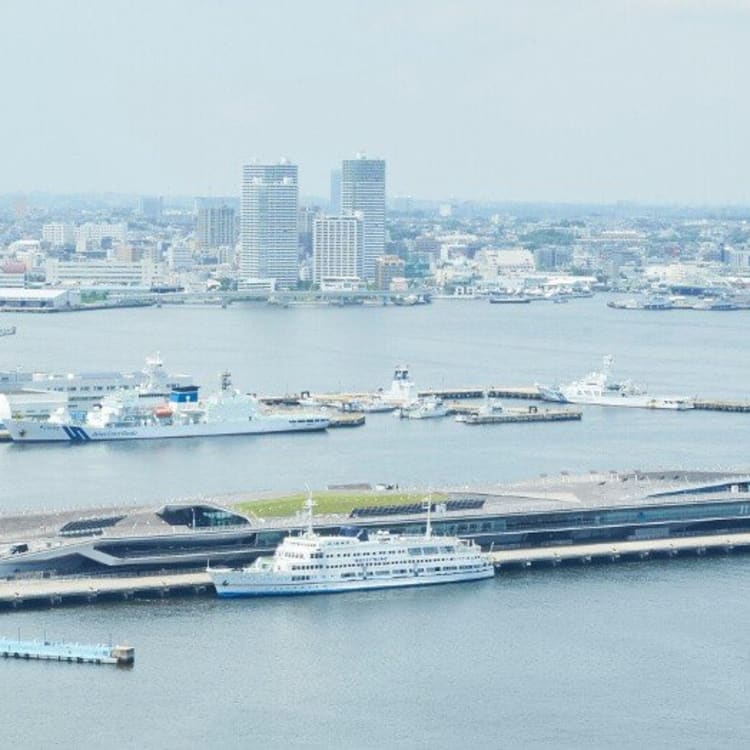
How to get to Yokohama Passenger Terminal (Osanbashi Pier) from Haneda Airport, Narita Airport, hotels/ryokan in Tokyo and beyond.
From Haneda Airport
Option 1: airport limousine bus.
Take the Airport Limousine Bus route bound for Yamashita Park, Minato Mirai 21, Red Brick Warehouse to Osanbashi Pier.
Travel time: approx. 40 mins
Fares: 720 yen (adult), 360 yen (children)
Tickets: Tickets are available at the Haneda Airport International Terminal 2F Bus Ticket Sales Counter
- View timetable
Option 2: Train
- Take the Keikyu Airport Kyuko (Express) service from Haneda Airport International Terminal to Yokohama Station – 30 mins, 450 yen
- Take the Minatomirai Railway Line to Nihon-Odori Station – 6 mins, 210 yen.
- Walk 5 mins to Osanbashi Pier
Travel time: 36 mins
Fares: 660 yen (adult), 330 yen (children)
Tickets: Buy them at Haneda Airport International Terminal Station. Alternatively you can use SUICA/PASMO.
From Narita Airport
Option 1: airport limousine bus and train.
- Take the Airport Limousine Bus bound for Yokohama City Air Terminal (YCAT) and Minatomirai, alighting at Yokohama Bay Hotel Tokyu.
- Walk 7 minutes to Minatomirai Station. Take the Minatomirai Line to Nihon-Odori Station. 3 mins, 180 yen.
- Walk 5 mins to Osanbashi Pier.
Total fare: 3,600 yen (Limousine Bus ticket) + 180 yen (train ticket) = 3,780 yen.
Tickets: Tickets for the Airport Limousine Bus are available at the Limousine Bus Ticket counters at Narita Airport 1 (North and South Wings), 2 and 3. Minatomirai Line tickets can be bought from the station ticket machines or you can use SUICA/PASMO.
- View bus timetable
- Take the Narita Express (N’EX)* train to Yokohama Station – approx 90 mins. 4,090 yen one-way.
- Take the Minatomirai Line to Nihon-Odori Station – 6 mins, 210 yen.
Total fare: 4,300 yen (adult), 2,150 yen (children)
Tickets: Tickets for the Narita Express (N’EX) are available at the ticket office at Narita Airport train stations. A discounted round trip ticket is available for 4,000 yen (adults) and 2,000 yen (children). The return ticket must be used within 14 days. Minatomirai Line tickets can be bought from the station ticket machines or you can use SUICA/PASMO.
*You can use the JR Pass on the Narita Express.
From Tokyo Hotels
Shared shuttle bus.
Green Tomato operates a shared shuttle bus service between the port and ryokan/hotel in central Tokyo. Only available on selected dates. Bookings essential.
The service is not available for those staying in private lodging/guesthouses.
Fare: 6,800 yen (adults and children)
Tickets: Book online with credit card.
- View timetable and book
From Kyoto (and western Japan)
If travelling from Kyoto or western Japan you’ll need to use a combination of shinkansen (bullet train), local JR trains and the Minatomirai Line to get to the Yokohama cruise port.
Shinkansen (with JR Pass)
- Take the Shinkansen ‘Hikari’ to Shin-Yokohama Station – 140 mins
- Take the JR Yokohama Line Local to Kikuna Station – 120 mins
- Take the Minatomirai Line to Nihon-Odori Station – 16 mins
Tickets: The JR Pass will cover 1 & 2. For the Minatomiral Line tickets, purchase them from Kikuna Station, or use an IC card like SUICA/PASMO.
Shinkansen (without JR Pass)
- Take the Shinkansen ‘Nozomi’ to Shin-Yokohama Station – 120 mins
- Take the JR Yokohama Line Local to Kikuna Station – 2 mins
- Take the Tokyu Toyoko/Minatomirai Line Local and get off at Nihon-Odori Station – 16 mins
Total Fare: 13,420 yen
Tickets: Buy from the JR Ticket Office at your departure station. For the Minatomiral Line tickets, purchase them from Kikuna Station, or use an IC card like SUICA/PASMO.
Please Choose Your Language
Browse the JNTO site in one of multiple languages
WHATSINPORT.COM: YOUR CRUISE GUIDE TO 1200 PORTS OF CALL
Interactive world cruise map, home | cruise ships | port expenses | hints and tips, tokyo japan cruise port guide.
Cruise liners dock at Tokyo International Cruise Terminal
Tokyo International Cruise Terminal opened on September 10, 2020, to provide access to Tokyo to the world’s largest cruise ships. The cruise terminal is in the Odaiba area and within reach of major transportation hubs, including Shinkansen stations and two international airports.
Conveniently located in the southern part of central Tokyo, the cruise terminal provides easy access to Tokyo’s major tourist attractions. It’s also within day-trip distance of historically and culturally important cities like Kamakura and Nikko. Indeed, the cruise terminal is an excellent base for tourists keen to experience both Japan's traditional and modern culture
There are two airports in Tokyo: Narita Airpor t and Haneda Airport Check their sites for ground transportation.
Hotels near the Cruise Terminal
Port Location on Google Maps
Printable map to take along.
Cruise calendar for this port.
Check here for festivals and events in Tokyo when you are in port.
Watch a destination video .
Sightseeing:
Tokyo is vast: it's best thought of not as a single city, but a constellation of cities that have grown together. Tokyo's districts vary wildly by character, from the electronic blare of Akihabara to the Imperial gardens and shrines of Chiyoda, from the hyperactive youth culture mecca of Shibuya to the pottery shops and temple markets of Asakusa. If you don't like what you see, hop on the train and head to the next one, and you will find something entirely different.
Don't get too hung up on ticking tourist sights off your list: for most visitors, the biggest part of the Tokyo experience is just wandering around at random and absorbing the vibe, poking your head into shops selling weird and wonderful things, sampling restaurants where you can't recognize a single thing on the menu (or on your plate), and finding unexpected oases of calm in the tranquil grounds of a neighborhood Shinto shrine. It's all perfectly safe, and the locals will go to sometimes extraordinary lengths to help you if you just ask.
Tokyo has a vast array of sights, but the first items on the agenda of most visitors are the temples of Asakusa, the gardens of the Imperial Palace (in Chiyoda) and the Meiji Shrine (in Harajuku).
Toyosu Market . Unlike the old Tsukiji fish market, the public cannot attend the auction among buyers. In Toyosu, the visitor can watch the market from a second floor viewing deck or, upon registration, from a room at the same level separated from the auction by a window. There is also a shrine called Uogashi Suijinja (shrine for a fish market on the shore) at a corner of the Toyosu buildings near the waterfront. The rooftop is accessible by elevator. There's a terrace with landscaping on the roof, and panoramic views of parts of Tokyo's skyline. Eating or drinking are not allowed there
Tours Excursions Transportation:
It's easier than ever for English speakers to navigate their way around Tokyo without speaking any Japanese. Signs at subway and train stations include the station names in romaji (Romanized characters). It can be helpful to know some tips for ordering in restaurants, shopping in stores, and asking for directions. Learning the katakana script is not difficult and most words written with it can be understood by English speakers so it can be useful even for people with no Japanese vocabulary. If you plan on asking for directions to Tokyo destinations, it especially helps to carry the name of the destination written in Japanese characters.
It pays to check your route beforehand. The Tokyo Transfer Guide by the Tokyo Metro and Toei subway companies, is an online service that allows you to plan subway and train travel from point A to point B, based on time, cost, and transfers.
Taxis are very pricey, but may be a value for groups of three or more.
When you board a taxi, note that the vehicle's left rear door is opened and closed remotely by the driver. You are not supposed to open or close it by yourself. Furthermore, you are not supposed to tip taxi drivers, as the service is included in the price.
If you do not speak Japanese, or your destination is not a well known place, it is recommended to give your driver the precise address of your destination on a piece of paper or, even better, point it out on a map, since the Japanese address system can be confusing even to local taxi drivers.
It pays to compare your cruise line excursions : Tours etc. offered by GetYourGuide and by Viator .
Nearby Places:
For the first time tourist looking for their image of the 'old Japan', go to the Imperial Palace and Asakusa district. If you want to get into the real Japanese life of today, it'll take weeks. Look for postcard image of Japan in Kyoto, or Kamakura, close to Toyko, where there's a big buddha. By the way the train and subway systems are extensive and excellent. You can get anywhere by using public transportation.
Shopping and Food
Tokyo has many commercial centers for shopping, eating and simply wandering around for experiencing the modern Japanese urban phenomenon. Each of these areas have unique characteristics, such as dazzling Shinjuku, youthful Shibuya and up-market Ginza. These areas are bustling throughout the day, but they really come into life in the evenings.
The currency in Japan is the yen. It comes in denominations of ¥10,000, ¥5,000 and ¥1,000 notes, as well as ¥500, ¥100, ¥50, ¥10, ¥5 and ¥1 coins.
ATMs in Japan are becoming more useful, and most can be used to withdraw funds from overseas accounts. Post offices also offer ATMs. Major credit cards are accepted at a majority of stores and restaurants in large urban areas, but if you plan on spending any time in rural areas, be sure to carry sufficient cash. Japan is still very much a cash society and some stores, hotels and restaurants-regardless of location-refuse credit cards.
Don't tip, as it's considered rude!
Currency Converter
Communication:
Cafes which offer free WiFi for customers are springing up all over the country. Costs vary, with some coffee shops offering free Wi-Fi services and others charging by the hour for cable-enabled PCs
Opening Hours and Holidays:
Shops and department stores in Japan are generally open daily, including national holidays (with the exception of New Year's), from 10:00 or 10:30am to 7:30 or 8:00pm. Some specialty shops are closed Sundays and national holidays. Department stores are sometimes closed one day a week on an irregular basis, but since closing days vary for each store, shoppers can always find stores that are open.
Public Holidays in Japan
Help us to keep this page up to date: Mail us your suggestions
Thank you for printing this article! Please don’t forget to come back to whatsinport.com for new and updated port guides.
Home | Privacy Policy
For the most recent version of this page, visit:
www.cruiseandsea.com
https://www.cruiseandsea.com/port/tokyo-japan/
Tokyo Japan
Tokyo , one of the most populous and expensive cities in the world, is an incomparable city imbued with modernity and always effervescent with its multicolored neon lights. Tokyo is an imperial city, home of the imperial family. The contrast is striking between the ancient, modern and futuristic aspects of the city.
The city is very clean and buzzes with activity. On the other hand, you can easily find peace in one of its many parks where the local population engages in various activities.
Cruises calling in Tokyo usually dock at the port of Yokohama .
Share this page
Useful Information
Tipping is not a custom in Japan.
Japanese yen - 1.5, 10 and 100 yen coin and 1,000, 2,000, 5,000 and 10,000 yen notes.
Credit cards are generally accepted. For cash, you will have to make withdrawals at the exchange offices or at the 7-Eleven counters, as the counters of Japanese banks do not accept foreign cards.
Time difference
from New York: +14h
from San Francisco: +16h
from London: +9h
Where is located the Port de Tokyo Cruise Terminal
The Tokyo International Cruise Terminal was completed in 2020. Tokyo International Cruise Station on the Yurikamome Line is nearby.
Small ships dock at Rainbow Bridge Wharf at Harumi Cruise Terminal on the island of the same name. The Kachidoki Station on the Toei Oedo metro line is a 25-minute walk from the port. As an other option, the Bus 05 connects the Ginza train station and the cruise terminal. Free WiFi is available in the terminal
Travelling around the Tokyo Cruise Port
You can have your bags delivered to the hotel so you don’t get crowded on the train or subway.
For comfort, the limousine bus connects Tokyo airports and hotels. On the other hand, traffic jams are common.
Private transport services are also available to travel to Tokyo.
Transportation between Tokyo Narita Airport and central Tokyo
The Narita Express connects tokyo airport and station. Trains run every 30 minutes during the day. The journey to Tokyo Station is 53 minutes. This option allows you to avoid traffic jams.
Transportation between Tokyo Heneda Airport and central Tokyo
From Heneda Airport, the Tokyo Monorail or the Keikyu line connect the airport and the JR train network. A bus service operated by the airport also connects Tokyo Station in 35 minutes. Bus services also connect several other destinations (neighbourhoods or cities).
Directions from Airport to Cruise terminal
- directions_boat Tokyo International Cruise Terminal
- directions_boat Harumi Cruise Terminal
Directions from Cruise terminal to Airport
The metro network is very extensive and will allow you to get anywhere in the city. The lines have their color and the stations are identified by a letter and a number to easily identify them on a map. There are two metro systems (Tokyo Metro and Toei) and a rail system (JR rail network). Different options allow you to buy a subway ticket giving you access to both systems or even one that also combines the train system (JR).
Make sure you bring a bilingual city map so it will be easier to ask for directions if you are lost.
Activities in Tokyo
Neighborhoods.
Tokyo’s shopping district. Very effervescent, especially around the station that bears the same name, it is often compared to a Times Square on steroids. Don’t miss the statue of the dog near the station that symbolizes loyalty. This dog accompanied his owner every morning to the station and came back to wait for him in the evening. One day the master died at work. The dog continued to come to wait for him at the station for a decade. See also meiji Jingu’s shrine and nearby Yoyogi Park.
One of the most chic neighborhoods in the world, Ginza is the place to go to tokyo for high-end shopping and find some of the best restaurants in the city. You’ll find all the luxury brands, including Chanel, Dior and Gucci and coffee at $10 a cup!
Nishi Shinjuku !
In the Nishi Shinjuku district of Shinjuku district, you will find several large hotels. You can climb the 45th floor of one of the towers of the Tokyo Metropolitan Government Building for free to observe the city. One of the two towers remains open in the evening. The architecture of this building was inspired by Notre-Dame Basilica in Paris.
Tokyo Tower !
The tower is accessible from Onarimo J06 or Akabanebashi E21. Shiba Park and Zojoji Temple are nearby.
Located in the Asakusa district of Taito, is one of the oldest Buddhist temples in Tokyo. This place is one of the most visited in the city. Many times restored, Senso-ji dates back to 645 AD. Once you’ve visited the temple, be sure to stroll through the nearby streets which are dotted with souvenir shops and restaurants serving noodles, sushi and tempura.
Another of Tokyo’s most visited shrines, this one is dedicated to the spirit of Emperor Meiji, the first emperor of modern Japan. Located near Harajuku Station, the sanctuary is adjacent to Yoyogi Park, which has walking trails through a quiet forest. At the northern end of the sanctuary grounds is the Meiji Jingu Treasure House, which houses a collection of personal items that belonged to the emperor and empress. On the southern grounds of the sanctuary is the inner garden. This area is particularly popular in early summer when the irises are in bloom.
Skytree Tower
The 2080-foot Skytree Tower is the largest building in Japan. You can observe the city there. Skytree Town has eight floors of shops and restaurants, as well as an aquarium and planetarium.
Historical sites
Imperial palace.
The Imperial Palace of Tokyo is the residence of the Imperial Family of Japan. This is the site of the old Edo Castle. The stone bridges in front of the Imperial Palace lead to the palace compound. The Eastern Imperial Gardens are open to the public, but not those of the palace.
Tokyo National Museum
Located in the Ueno Museum District, this museum is one of the best in Japan. Its mission is to highlight the cultural, artistic and archaeological heritage of Japan and the East. The museum presents in its permanent exhibition more than 3,000 works from its collection, which includes more than 116,000. A 15-minute walk from Ueno G16 station.
Edo-Tokyo Museum !
Learn about the history of the city from its origins when the city was named Edo and its evolution towards the modern city that is Tokyo today.
Excursions in Tokyo
The company Hato Bus offers many excursions to Tokyo and the surrounding area.
If you have a day of free time and the weather is clear, you can take an out-of-town excursion for a visit to Mount Fuji . The highest mountain in Japan and one of the country’s best known symbols is about 60 miles from Tokyo. Many operators offer day trips, which usually include a bus ride halfway up the mountain (at the 5th station) and can also be combined with a cruise on Lake Ashi.
Cruise and Sea is not responsible for the content of external websites and transactions made on third-party websites. Ad Find unforgettable experiences to discover the world.
Cruise and Sea is not responsible for the content of external websites and transactions made on third-party websites. Ad Find amazing things to do. Anytime, anywhere.
Useful References
- Tourism Board - Tokyo
- Tourism Board - Japan
- Tokyo on Wikipedia
- Japan on Wikipedia
- Travel Advice and Advisories (Government of Canada)
- Port Website
For details or to book an excursion, visit our page:
Alternative:
https://www.viator.com/en-CA/Tokyo/d334-ttd?pid=P00045706&mcid=42383&medium=link&campaign=morebutton
Hong Kong Hong Kong
Keelung (Taipei) Taiwan
Nagasaki Japan
Naha, Okinawa Japan
Osaka Japan
Shanghai China
Shimizu (Mount Fuji) Japan
Yokohama (Tokyo) Japan
Other cruiseports in the area
- Keelung (Taipei)
- Naha, Okinawa
- Shimizu (Mount Fuji)
- Yokohama (Tokyo)
More World Destinations
- Adriatic Sea
- Canada and New England
- Central America
- Mediterranean Sea
- Northern Europe
- Norwegian Fjords
- Panama Canal
- South America
Transfers from Yokohama cruise port to Tokyo Narita airport
- {{ vm.data.type ? vm.ln.oneway : vm.ln.roundtrip }}
- {{ result.name }}
- {{ result.structured_formatting.main_text }} {{ result.structured_formatting.secondary_text }}
- Destinations
- Yokohama cruise port
- Tokyo Narita airport
Book a transfer from Yokohama cruise port to Tokyo Narita airport
Are you looking for a private transfer or a taxi from Yokohama cruise port to Tokyo Narita airport? With Mytransfers you can book your trip in less than 60 seconds and with instant confirmation. Our driver will be waiting for you with a welcome sign upon arrival at Yokohama cruise port and will take you directly to your hotel, villa or flat in Tokyo Narita airport.
Route from Yokohama cruise port to Tokyo Narita airport
Yokohama cruise port is located 100.36 km from Tokyo Narita airport and to get to Tokyo Narita airport with a transfer from Yokohama cruise port will take about 01 h 21 m.
The duration of the transfer may vary depending on the chosen vehicle and the traffic circumstances.
Rated excellent by real customers
All perfect. Driver was waiting ahead of time. Nice, comfortable car and smooth drive. Thanks!
Thank you B.Junior for the friendly welcome
I arrived at Cancun airport pleasantly surprised to find my driver immediately, I was told the drive would be 20 minutes to my resort, it felt like...
Over the top service! 100% Great!
Great service. Would 100% recommend.
Friendly driver, nice service.
Available vehicles
Book your sedan, minivan or bus from the airport Yokohama cruise port to Tokyo Narita airport

- Service overview
- Passenger(s) Min: 1 - Max: 3
- Suitcases capacity 3 medium suitcases
- Route information 100.36 km - 01 h 21 m
- One way price | Final price
- EUR € 188.76
- Final price
- Book trip EUR € 188.76
- Meet & Greet
- Door-to-Door

- Passenger(s) Min: 1 - Max: 4
- EUR € 198.00
- Book trip EUR € 198.00
- Booster seat
- Child seat (from 2 to 12 years)
- Free child seats
Popular dropoff locations in Tokyo Narita airport
Crowne Plaza ANA Hotel Narita
Hilton Tokyo Narita Airport Hotel
Hotel Nikko Narita
Hotel Nikko Winds Narita
Hotel Sky Court Narita
Marroad International Hotel Narita Airport
Narita Airport Rest House Hotel
Narita View Hotel
Narita Tobu Hotel Airport
Narita Port Hotel
Toyoko Inn Narita Kuko
The distance between Yokohama cruise port and Tokyo Narita airport is approximately 100.36 km.
The transfer from Yokohama cruise port to Tokyo Narita airport will take approximately 01 h 21 m. The duration may vary depending on the vehicle chosen and the traffic conditions, which are beyond our control.
By booking a private taxi or minivan with us from Yokohama cruise port to Tokyo Narita airport you will benefit from our final prices, with no surprises. Our driver will be waiting for you on arrival and will take you directly to your hotel, villa or other destination in Tokyo Narita airport. Remember that all our transfers are private and with door to door service.
Vehicles with capacity for more than 4 people or for passengers with special luggage needs are rare at Yokohama cruise port. If you book in advance with us, the transfer from Yokohama cruise port to Tokyo Narita airport will be carried out with a vehicle that will be perfectly adapted to your needs.
You can reserve any type of vehicle for this route. Use the availability search on this page to see all the vehicles available for transfer between Yokohama cruise port and Tokyo Narita airport.
The cost of a taxi or private transfer from Yokohama cruise port to Tokyo Narita airport is EUR € 188.76
Depending on the chosen vehicle, the price of a private transfer may vary. Use the availability search at the top of this page to find the best rates for your transfer to Tokyo Narita airport.
For any question:
Ask an advisor
Questions about any existing reservation
(+34) 911 880 435

Welcome Guest
- Narita Airport Transfers (4)
- Haneda Airport Transfers (4)
- Yokohama Cruise Port Transfers (1)
What to expect
Traveler's photos, activity provider, payment / cancellation policy, yokohama international cruise port shuttle service to/from tokyo.

Smooth Transition from cruising to ...
Sweet young driver., available daily, pick-up available, one-way (from yokohama port) shared ride to hotel.
Price per Adult/Child :
One-way (To Yokohama Port) Shared Ride from Hotel
Pick-up at Yokohama International Port

After passing customs, look for the 'Green Tomato' signs and staff, who will escort you to the shuttle.
Drop-off at your hotel in Tokyo
Transportation add-ons
Pick-up/check-in time & location.

Drop-off/Check-out Time & Location
08:00-10:30
- look for the 'Green Tomato' sign board
Location, direction and description
- When leaving the ship and passing customs, please look for the staff at the arrival hall called CIQ area from 8:00- 10:30 holding 'Green Tomato' signs, who will then escort you to the shuttle. Drop off available to the following areas: Koto, Edogawa, Sumida, Chuo, Shinagawa, Minato, Chiyoda, Shinjuku, Shibuya, Bunkyo, toshima, Meguro, Taito, Ota, Arakawa Wards Please provide us with your hotel information when booking. The exact time of pick-up will be notified by the company depending on the ship's arrival time.
Important activity information
Restrictions.
- < LUGGAGE > Free: Up to 2 piece of luggage/person and hand carry items. *JPY 2,000 (per piece) is charged from the 3rd luggage and it has to be requested in advance to secure the space. We might not be able to accommodate the person if there is no advance request/payment for extra luggage.
- This service only operates between hotels/ryokan inns in the central 15 wards of Tokyo and Yokohama Port. Pick-ups and drop-offs at private apartments, train stations, offices are not possible.
- 15 wards in Tokyo include: Koto, Edogawa, Sumida, Chuo, Shinagawa, Minato, Chiyoda, Shinjuku, Shibuya, Bunkyo, Toshima, Meguro, Taito, Ota, and Arakawa
- Child seats and toddler car seats are not available and cannot be set on the cars.
- Only accommodation that you will stay in central Tokyo is available. If you would like to specify other location as drop-off point, please use Private Transfer Service. *Apartment(called Minpaku), Capsul hotel and Guest house are not available.
- Because this is shared shuttle transfer service, you might need to wait other passengers at port. Please refrain to ride with animals. If you intend to ride with a service dog, please contact us in advance.
- You cannot specify vehicle type, driver language and pickup time.
- There is space for luggage such as suitcases in the car but please be sure to bring valuables such as mobile phones, cameras, computers, tablets, and precision instruments as hand luggage. We ask for your understanding and cooperation so that your valuable luggage will not be damaged or lost. When there is no our intention or negligence, and it is damage caused by you not carrying them as hand baggage, we will not be held responsible for any things.
Booking requirements (# of participants, vehicles, hours, etc.)
- You can book a maximum of 8.
Additional notes
- Please understand that requested stops will not be made during the route.
- Schedule will be subject to change due to traffic conditions and stop overs at other hotels. Driving duration will be around 1 to 1.5 hours.
- There is no porter service at the Yokohama port. Please take care of your own luggage.
- Please understand that if the shuttle cannot stop in front of your hotel due to traffic conditions, you will be dropped off or picked up at the nearest possible point.
- The vehicle images are for illustrative purposes only. Please note that the actual vehicle used may differ depending on the circumstances on the day.
- The shuttle will wait for guests starting at 8:00 AM to 10:30 AM. Please look for the staff member with a Green Tomato sign. If you do not show up by 10:30 AM,the booking will be cancelled as No-Show and 100% cancellationcharge is applied.
- If arrival port is changed due to bad weather, we will refund the fee and we don’t re-arrange transfer service. If arrival time is delay but the cruise ship arrive at Yokohama port on that day, we will correspond it without charge.
- If arrival date is changed to next day due to bad weather, we will correspond it without charge. If customers don’t need our transfer service due to above reason, we will refund the fee but we need the information in advance from you or customers.
- *For above scenarios, If we are not notified with new information, we carry out the original booking and 100% charge is applied. Only accommodation in central Tokyo is available.
Pick-up at your hotel in Tokyo
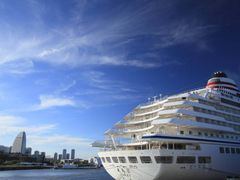
The shuttle will pick you up at your hotel, and whisk you to Yokohama with ease.
Drop-off at Yokohama International Port
11:30-13:00
- Please provide us with your hotel information when booking. Pick up time will be set between 11:30am and 1:00pm.The final pick up time will be sent to your registered email address a day prior to the service day. Our assistant or driver will meet and greet you at hotel entrance / bell desk with a signboard showing "GREEN TOMATO" logo. (Guest name is not shown on the signboard.)
- Pick-up from hotels in Tokyo will be from 11:30 to 13:00. Final pick-up time will be informed to the guest the day before. Please be ready at your hotel's entrance or bell desk 15 minutes prior to pick-up time andOur staff will be waiting with a signboard displaying our "Green Tomato" logo. If you don't show up by the pick-up time, you may not be able to ride the shuttle and a 100% cancellation charge will be applied.
- If departure time is changed but the cruise ship depart on that day, we will correspond it without charge. If departure date is changed to next day and customers don’t change the hotel or only change to another hotel in Tokyo, we will correspond it without charge but we need the information in advance from you or customers.
- If customers change the hotel in Yokohama, and if we cannot take them to hotel in Yokohama, we will refund the fee, and they can go to hotel in Yokohama by themselves, and go to port on their own.
Travelers interested in this activity also viewed
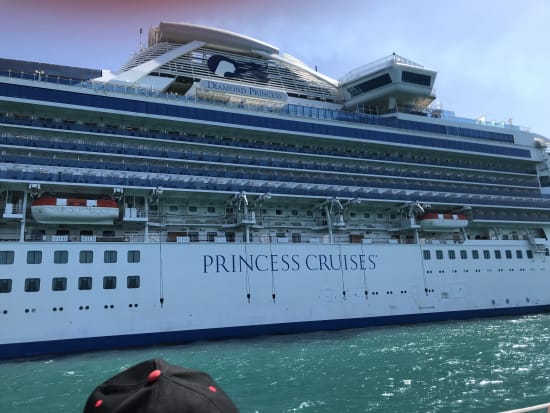
Overall rating
Setting foot outside a terminal of another country was always a scary feeling, not knowing what transportation to hop on going to our hotel. But because of the great services of your company, we had a pleasant experience ... of knowing we can avail your transportation services in transferring from an airport or cruise terminal to our hotel. Your staff were so courteous and pleasant to talk to.
We immediately saw the Green Tomato sign, and were helped with luggage claim, and then led to the van with the other riders. The driver was extra careful driving in rush hour, and got all of us safely to our hotels. I ... was impressed! I came down with the FLU (not corona virus) the first night in Tokyo, and we were able to change or flights home for the next day. Called Veltra, and customer service sent a message to the local Green Tomato office, which was closed. By 10:30 AM Tuesday morning, they reached us at the hotel, and were able to pick us up at 1:30 PM in order to add us to a last minute to a run. The driver was early, spoke enough English to point out sights on the way to the next pick-up, and then continued to point out a few more sights. He also drove well, and we were very appreciative of the trouble Veltra went thru to get us to Narita, with hours to spend in the airport before boarding the flight. If Veltra offers transfers in other cities we visit in the future, they have our business! And, they will be the first place we look to for tours as well.
Enjoy the ride with Green Tomato
The staff are nice and friendly. They stood with a sign once we stepped out from the terminal, we have no problem in finding them. The driver was professional, polite and drive safely. We will keep using them.
Activity Provider GREEN TOMATO Co., Ltd.
- Credit card payment

- Any cancellations made after 00:00 local time, 14 business days prior to the activity will be subject to a charge of 100% of the total amount.
- The same conditions as the cancellation policy apply to changes in reservations.
- Every 12/30 - 01/03
Payment Methods

Cancellation Policy
Change policy.
Please visit VELTRA Support page to send an inquiry about this activity.
Top-Rated Activities for Tokyo

Tokyo Kintsugi Workshop: Simple Gold Repair Class near Shin Koenji
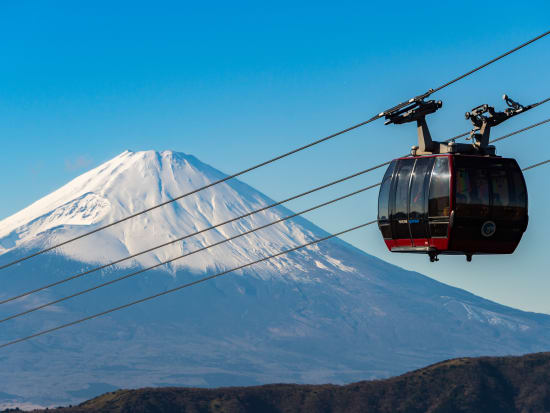
Mt. Fuji Tour from Tokyo with Lake Ashi Cruise and Hakone Ropeway Ride

Japanese Plastic Food Sample Art Experience in Tokyo
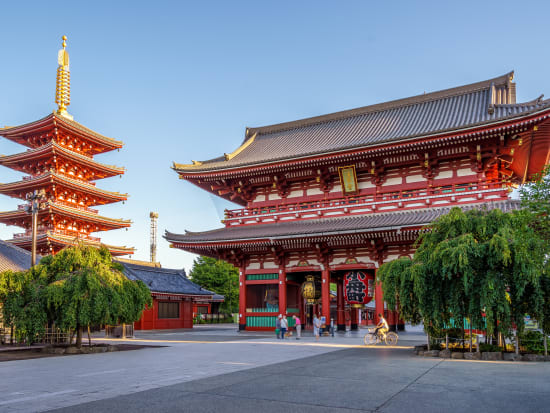
Tokyo 1 Day Tour to Tokyo Tower, Meiji Shrine, Sumida River Cruise, and Asakusa

ANA Blue Base English Guided Tour
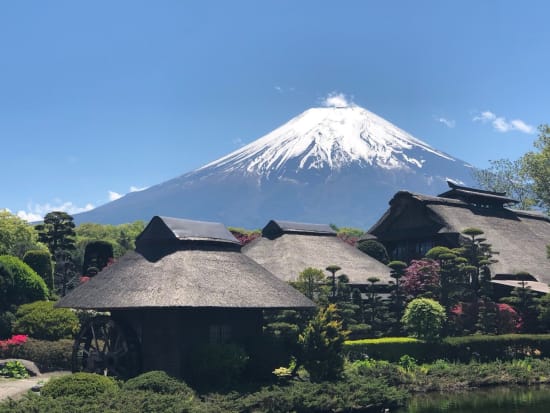
Mt. Fuji Classic Route Day Tour from Ueno & Shinjuku
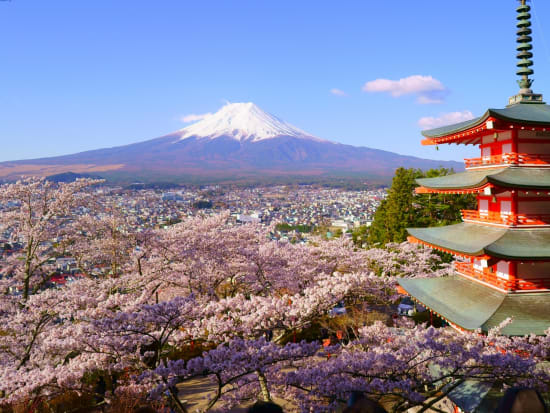
Spectacular Views of Mt. Fuji Day Tour from Shinagawa or Shinjuku
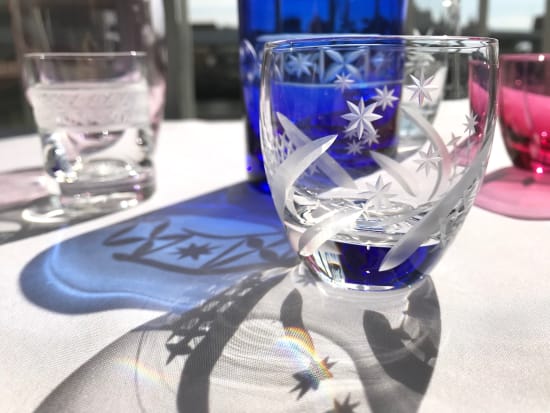
Edo Kiriko Glass Cutting Experience in Asakusa
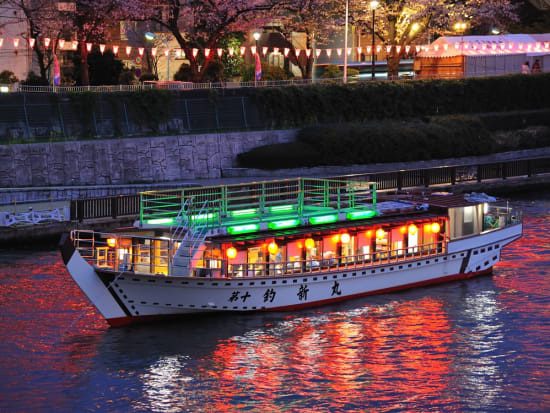
Traditional Yakatabune River Cruise with Lunch or Dinner in Tokyo

Japanese Taiko Drum Musical Performance and Lesson in Tokyo

Mt. Fuji Tour from Shinjuku with Oshino Hakkai and Arakura Sengen Jinja
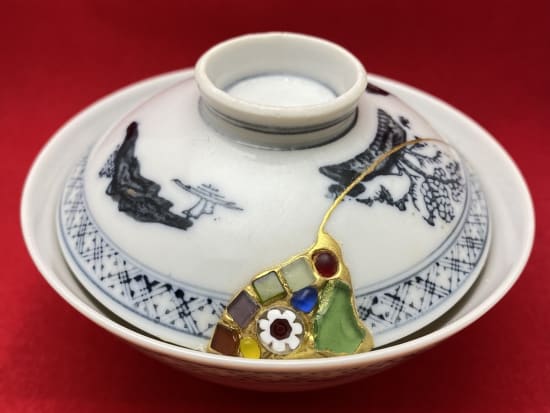
Tokyo Kintsugi Class - 1-Day Workshop near Nippori
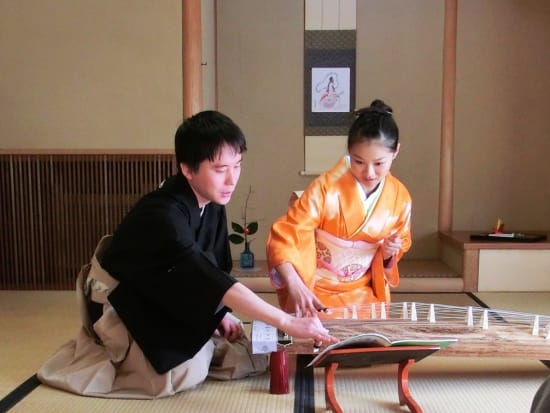
Beginner-Friendly Japanese Koto Harp Music Lesson in Tokyo
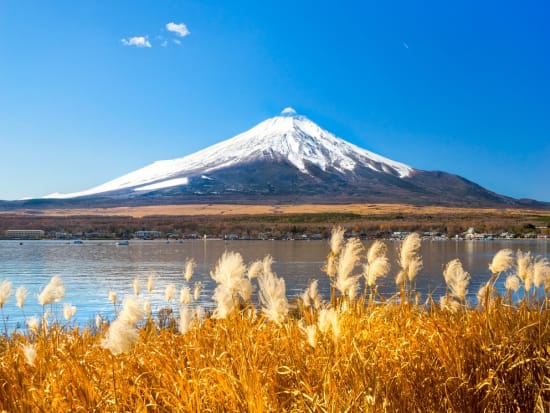
Mt.Fuji Viewing and Lake Kawaguchi Wheelchair-Friendly Tour from Tokyo
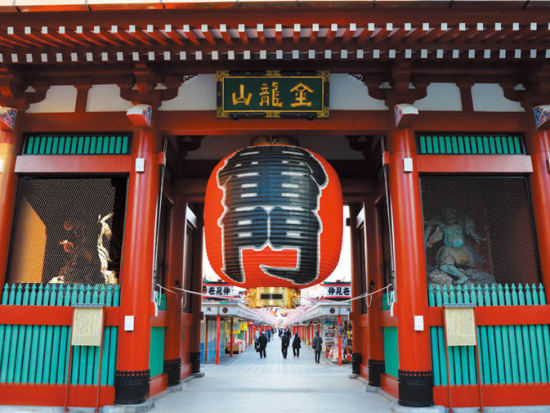
Tokyo Day Tour to Tokyo Tower, Meiji Shrine, and Asakusa from Tokyo and Shinjuku
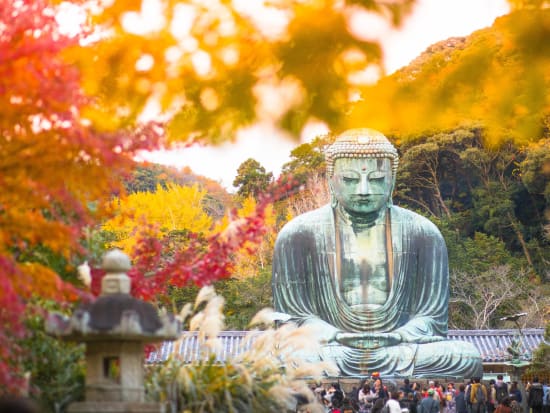
Kamakura & Enoshima Day Tour from Ikebukuro & Shinjuku

Narita Airport (NRT) to Central Tokyo and Yokohama Barrier-Free Transfer

Mt. Fuji & Hakone Tour from Ginza with Ninja Village & Lake Ashi Cruise
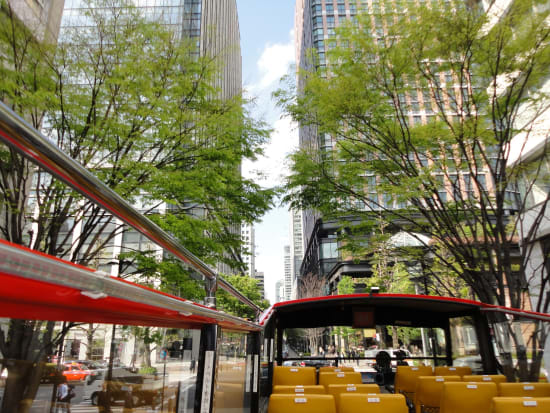
Open-Top Bus Tour from Tokyo Station Perfect Plans for Sightseeing in Tokyo

Handmade Ceramic Gift Making Class in Central Tokyo
Editor's picks for tokyo.
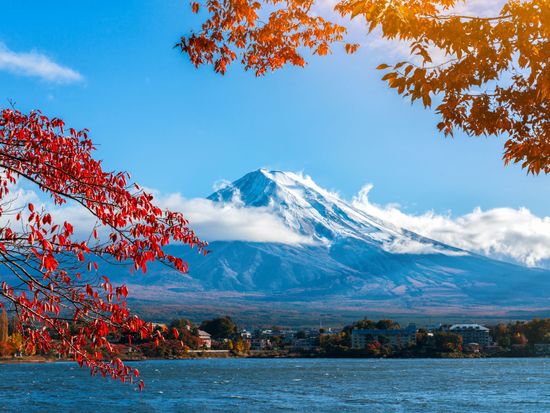
Trending Day Tours to Mt. Fuji
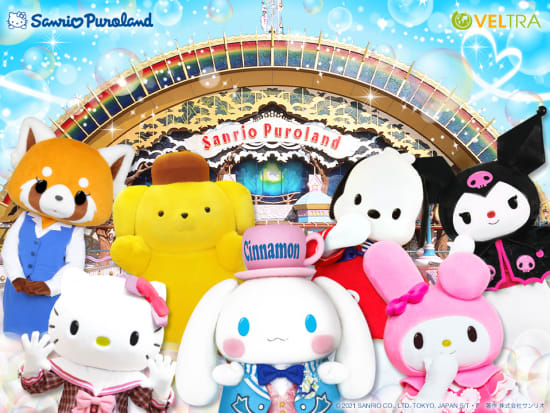
Best weekend activities with kids

Dive into Japanese comedy show in Shibuya!
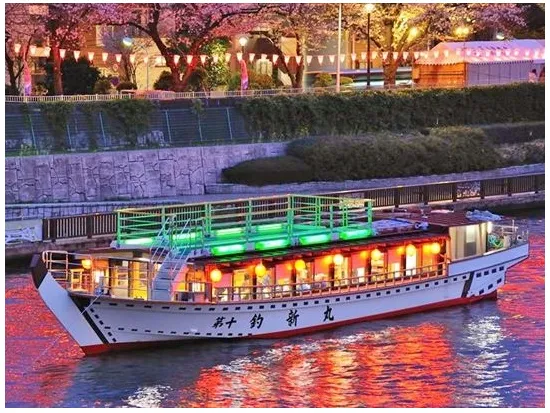
An Evening on the River: Tokyo Cruises
日本語ガイド&オムレツ昼食付き, eur 152.00~.
You can only add up to 10 items in the list.
Please reduce items in the list.
- STEP 3 Book another activity, and use the coupon for a discount!
- Valid for one (1) booking per account during the designated promotional period.
- Cannot be used on the same activity on the same date and time as the first activity, or applied to activities that have already been booked.

- Company Information
- Investor Relations
- News Release
- Supplier Sign-in
- Add Your Activity
- Privacy Policy
- Basic Policy on Information Security
- Terms & Conditions

- CruiseMapper
- Cruise Ports
- Asia Cruise Ports
Tokyo (Japan)
Cruise port schedule, live map, terminals, news.
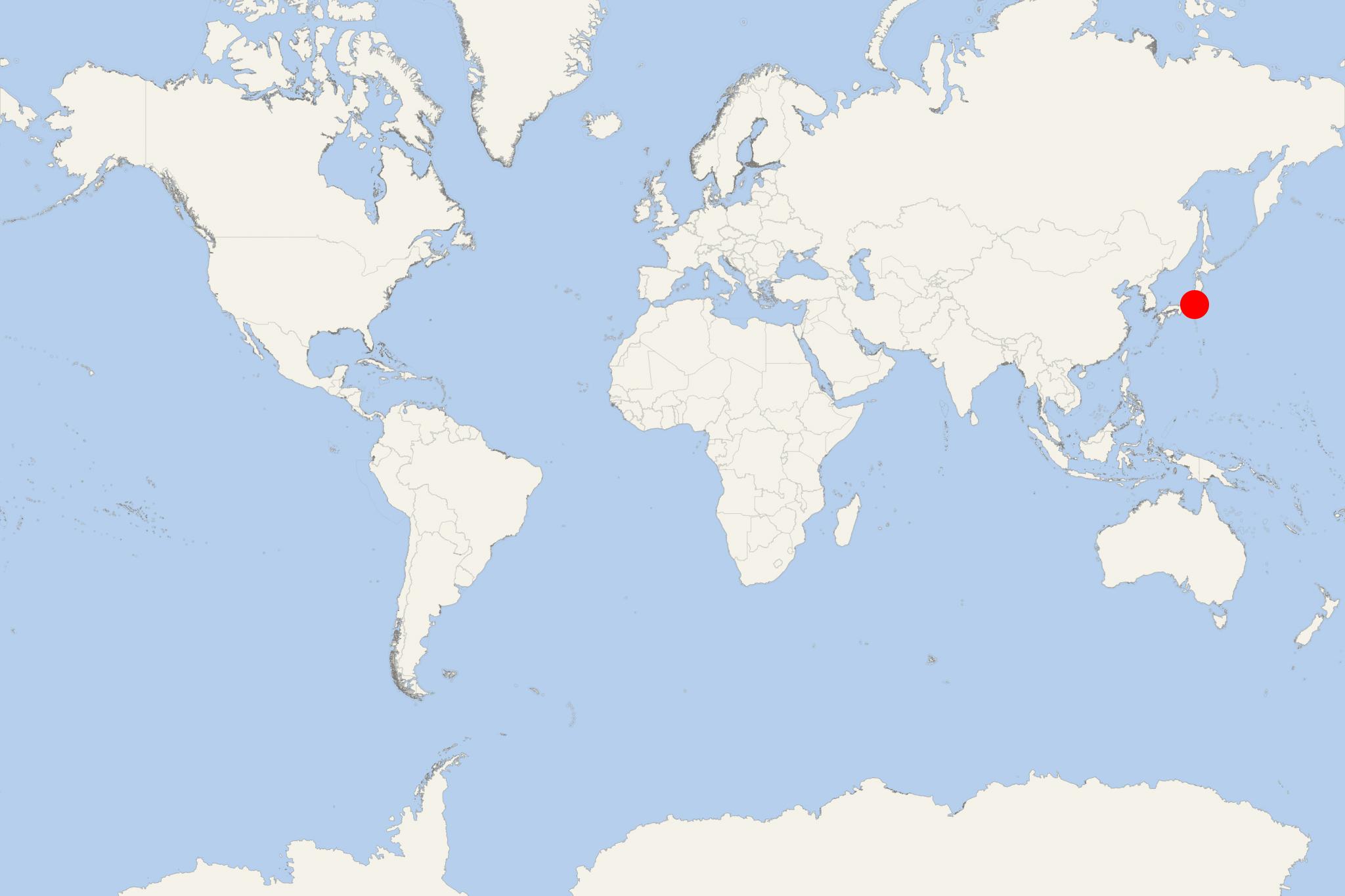
Region Asia
Local Time 2024-09-17 02:38
Port Tokyo cruise ship schedule shows timetable calendars of all arrival and departure dates by month. The port's schedule lists all ships (in links) with cruises going to or leaving from Tokyo, Japan. To see the full itineraries (ports of call dates and arrival / departure times) and their lowest rates – just follow the corresponding ship-link.
Tokyo is a large seaport and Japan's capital city (Tokyo Metropolis) located on Honshu Island's southern part (Tokyo Bay's western shore). Tokyo is also Japan's largest city with population around 14 million (metro around 37,5 million). Port Tokyo is one of the country's largest seaports, with annual shipping traffic capacity ~100 million cargo tons and 4,5 million TEU-containers. The seaport employs 30,000+ people serving 32,000+ vessels annually. The city is served by two international airports - Narita and Haneda.
The city (named Edo) was renamed and became Japan's capital in 1868 when Tokugawa dynasty was overthrown. Old Town Edo is the heart of downtown Tokyo and is most famous with the Imperial Palace and its surrounding parks. In Kasumigaseki district are located most government buildings.
Among Northern Tokyo's best-known tourist attractions are Ueno Park (shrines, tombs, pagodas), Tokyo National Museum (archeological artefacts and Japanese art), Senso-ji temple. Tokyo's best for shopping area is Ginza district.
The metropolis has been left in ruins twice - during Great Kanto earthquake (1923) and after the US bombings during WW2 (1939-1945). This explains why the landscape has predominantly modern architecture. The city features 2 distinctive towers: Tokyo Tower and Tokyo Skytree (opened 2012, Construction cost USD 600 million) - Japan's tallest and the world's second-tallest structure (height 634 m / 2080 ft, 35 floors) after Dubai's Burj Khalifa (height 830 m / 2722 .ft, opened in 2010, construction cost USD 1,5 billion).
Tokyo City has numerous gardens and parks, including 4 national parks, among which is Fuji-Hakone-Izu (comprising all of Izu Islands). During cherry blossoms bloom, many thousands of residents gather in the Inokashira Park, Ueno Park, and Shinjuku Gyoen National Garden for picnics under the trees. Each year on July's last Saturday, an amazing fireworks show over Sumida River attracts over 1 million spectators.
"Bureau of Port and Harbor" is Port Tokyo's authority company, which manages, administers, maintains and upgrades the seaport as infrastructure and facilities / terminals, also develops reclaimed lands, the waterfront area, all seaside parks.
The seaport serves not only Tokyo City but also a large part of Shinetsu Region and southern Tohoku (total population over 40 million). The port links land and sea transportation of both import and export goods. The port authority constantly enhances the port's terminals (cargo, container, ferry and cruise), providing warehouse storage facilities located mainly on reclaimed lands.
Statistics for 2009 show that the port served over 28,000 vessels. The handled cargo was around 72,5 million tons, of which around 40,7 million tons were foreign trade (exports 12,1 million tons, imports 28,6 million tons). The vast majority of the foreign trade through the port is with Asian countries (over 70%) The port's second-largest foreign shipping trade partner is North America and the 3rd is Europe.
Foreign Imported via cargo shipping commodities in Tokyo include chemical products, personal goods, electrical equipment, furniture, equipment, processed foods, fruits and vegetables, industrial machinery, pulp / paper. Port's foreign exports include chemical industry products, reusable materials, industrial machinery, autos and auto parts, scrap metal, electrical equipment, rubber and metal products.
Port's inbound domestic cargo shipping includes sand and gravel, cars, petroleum products, cement, pulp / paper, oil products. Port's outbound domestic cargo shipping includes cars, waste soil, miscellaneous cargoes (heavy oil, processed food, drinks, pulp / paper).
Port Tokyo covers a land area of around 4 mi2 (10 km2) and has breakwater with length 5,2 mi (8,4 km). The port's total length of wharves and piers is over 14 mi (22,7 km). The port has 204 berths, which include 15 container ship berths with total length ~2,8 mi (4,5 km). Tokyo is homeport for passenger and car ferries (Ro-Pax ships) linking the capital city with Shikoku and Kyushu.
Port's container terminals include:
- Oi Container Terminal (inaugurated in 1999) is one of the country's most modern terminals) covers almost 1 km2 (234 acres). The terminal has 7 berths (total length 1,5 mi / 2,4 km, max draft 15 m / 49 ft). The terminal is equipped with 20 gantry cranes and ultra-modern cargo distribution facilities and warehouses.
- Aomi Container Terminal has 5 berths (total length 0,98 mi / 1,57 km). Two berths are with max draft 13 m (43 ft) and 3 berths are with max draft 15 m (49 ft).
- Shinagawa Container Terminal is the japan's oldest (inaugurated in 1967) and public (managed by the metro Government). Currently, Shinagawa Terminal serves the container shipping trade with South Korea, Southeast Asia and China, plus several Japanese coastal routes. The terminal has all 3 berths (total length 623 ft / 190 m, max draft 10 m / 33 ft) and is equipped with 4 gantry cranes.
- Wakasu Terminal serves only domestic containerized cargo trade with 1 berth (length 623 ft / 190 m, max draft 11 m / 36 ft).
Port's bulk and breakbulk terminals include:
- Oi Foodstuffs Terminal has 3 berths and handles mainly imports (wheat, fresh fruits / vegetables, other foodstuffs). It has 3 berths and a wheat mill and silo complex (relocated from Harumi Terminal). Terminal's facilities include 2 transit sheds (for imported food products, 1 berth (length 755 ft / 230 m, max draft 12 m / 39 ft) and another 2 berths (total length 1247 ft / 380 m, max draft 11 m / 36 ft).
- Oi Marine Products Terminal has 2 berths (total length 1476 ft / 450 m, max draft 12 m / 39 ft) and handles imported frozen seafood. Behind the terminal, there are 3 cold-storage sheds, private warehouses, 6 cold-storage warehouses.
- Oi Construction Material Terminal has 4 berths (total length 918 ft / 280 m, max draft 5 m / 16 ft).
- Wakasu Construction Materials Terminal (inaugurated in 1989) is public and handles domestic sand, gravel, stone. It has 4 berths (total length 1214 ft / 370 m, max draft 5,5 m / 18 ft).
- Among others, Odaiba Liner Terminal, Foreign Trade Terminal and Harumi Terminal serve general cargo vessels.
- Odaiba Liner Terminal has 9 berths (total length 1,8 km, max draft 10 m / 33 ft) and handles mainly steel, pulp / paper, timber
- Bulk Cargo Terminal (inaugurated 2000) is public and handles mainly foreign cargo ships carrying coal and non-ferrous metals. It has 1 berth (length 787 ft / 240 m, max draft 12 m / 39 ft).
- Lumber Terminal 15 handles imports from the USA and Canada. It has 3 berths (total length 2360 ft / 720 m, max draft 12 m / 39 ft), open-air storage yard (capacity 200,000 m3 of timber).
- Tsukishima Terminal is a fisheries base with numerous cold-storage warehouses. This terminal is a major food source for the metro area. The terminal has 2 berths (total length 873 ft / 266 m, max draft 7,5 m / 25 ft).
- Shibaura Terminal has 6 berths (total length 2560 ft / 780 m, max draft 7,5 m / 25 ft) feet), handles general cargo (cement, papers, foodstuffs) and has numerous transit sheds and storage lots.
- Takeshiba Terminal has 3 berths (total length 1526 ft / 465 m, max draft 7,5 m / 25 ft) and handles general cargo and agricultural products.
- Hinode Terminal has 6 berths (total length 1850 ft / 564 m, max draft 6,7 m / 22 ft) and handles foodstuffs, paper, non-ferrous metals.
Port's Ro/Ro (Roll-on/roll-off) ship terminals include:
- Shinagawa Domestic Trade Terminal handles autos, newsprint, miscellaneous ro-ro cargoes to and from Port Hokkaido. The terminal has 3 berths (total length 1562 ft / 476 m, max draft 8 m / 26 ft) plus another 2 berths (total length 1245 ft / 380 m, max draft 10 m / 33 ft).
- Tatsumi Terminal (inaugurated 2002) handles steel and miscellaneous goods between Tokyo and remote Japanese islands. It has 13 berths (total length 3410 ft / 1040 m, max draft 5 m / 16 ft).
- No 10 Terminal serves regularly scheduled ferry and cargo ships linking Tokyo with Kyushu, Okinawa and Hokkaido. The list of handled here cargoes include steel, autos, pulp / paper, general cargo. The terminal has 11 berths (total length 4920 ft / 1500 m, max draft 7,5 m / 25 ft), plus another 13 berths (total length 3020 ft / 920 m, max draft 5 m / 16 ft).
- No 10 Multi-Purpose Terminal has 1 berth (length 590 ft / 180 m, max draft 7,5 m / 25 ft)
- Tokyo Ferry Terminal has 4 berths (total length 2960 ft / 902 m, max draft 8,5 m / 28 ft) and handles general cargo and autos.
Tokyo cruise port
Port's cruise terminals are 5 - Harumi, Takeshiba, 10-1 (multi-purpose), Hinode and Tokyo International Cruise Terminal (September 2020-opened).
Harumi Passenger Ship Terminal (1991-opened) handles both domestic and international cruise liners. The facility also serves as a conference/event center and features an observation deck offering breathtaking views of the city waterfront.
- At Harumi cruise terminal is also held the annual Tokyo Port Festival (in May) with a firework show.
- Harumi Terminal has 2 berths (total length 1495 ft / 456 m, max draft 10 m / 33 ft) and has capacity to handle smaller cruisers (with volume up to 20,000 GT-tons).
- There is an additional berth (length 528 ft / 161 m, max draft 9 m / 28 ft) plus another berth (length 623 ft / 190 m, max draft 10 m / 33 ft).
Takeshiba Terminal (1995-reconstructed) links Tokyo with Izu and Ogasawara Islands. The facility has 1 passenger terminal, 1 office building, 1 hotel, commercial facilities.
No 10-1 Multi-Purpose Terminal is also used by sailships and exhibit ships. The terminal has 1 earthquake-resistant wharf that can handle relief goods in cases of emergencies.
Hinode Terminal (port's oldest) was developed into a passenger terminal and promo center.
Tokyo Cruise Terminal (at Shinkyaku Pier) can handle even the world's largest passenger liners ( Royal Caribbean 's Oasis-class boats with LOA 362 m / 1188 ft). The new facility has one berth (length 430 m / 1411 ft) and quay depth / max-draft 11,5 m (38 ft). The 4-story terminal building has total area 19000 m2 (204514 ft2). The facility was constructed outside Rainbow Bridge to allow access to the largest passenger ships currently in operation.
Since 2018, cruise port's pilotage, towage and other cruiseship charges are subsidized by the Metropolitan Government. Most vessels berth at Harumi Terminal. The traditional greeting ceremony (held during all cruise calls) includes a fireboats show and a dockside welcoming ceremony with live music performances.
In season 2018, the cruise port had booked 38 ship calls - an increase over 2017 (32) and 2016 (29). The growth was based mainly on foreign liners.
The new cruise terminal experienced a 3-year hiatus (2020-2023) in hosting foreign- flagged ships (between Sept 2020 and March 2023) due to the impact of the global COVID crisis. In 2021 and 2022, only a limited number of domestic (Japan-flagged) vessels utilized the new cruise terminal. In 2023 were handled a total of 49 cruise ship calls.
Tokyo cruise terminal
Most cruise ships in Tokyo dock at Harumi Terminal. Port Yokohama is approx 40 km (25 mi) from the city and is often used as an alternative port for Tokyo. The new cruise terminal (at Shinkyaku Pier) was scheduled for inauguration on July 14 (2020) to coincide with the opening of the Tokyo 2020 Olympic Games (scheduled for July 22). However, both events were postponed due to the COVID crisis. The new passenger terminal was officially inaugurated on September 10, welcoming on the same day its first cruise ship Nippon Maru (owned by Mitsui OSK Passenger Line).
(NEW) Tokyo International Cruise Terminal
The new terminal can handle even the world's largest passenger liners of Royal Caribbean 's OASIS-class (GT 228000 tons, LOA length 362 m, max passengers 6370 plus 2400 crew).
Shinkyaku Pier (officially "Tokyo International Cruise Terminal") has one berth with length 430 m (1411 ft), width 30 m (98 ft) and quay depth / max-draft 11,5 m (38 ft). The 4-floor terminal building has total area of 19000 m2 (204514 ft2).
The facility was constructed outside Rainbow Bridge (1993-opened, vertical clearance 52 m / 171 ft) to allow access to the world's largest cruise vessels currently in operation.
Tokyo's downtown is at ~20-min drive and cruisers can walk to the new Yurikamome station (New Transit Yurikamome / fka Tokyo Waterfront New Transit Waterfront Line) serving an automated guideway transit network via operated by Yurikamome Inc. Nearest to the new cruise terminal metro station is Kachidoki (at approx 20-min walking distance). The other way to access the city is via bus (lines 3 and 5). The nearest bus station is Harumi Futo - just outside the cruise ship terminal.
Large-sized cruise vessels alternatively dock at Oi Marine Products Terminal, from where bus shuttles take passengers to Shinagawa Station (railway). Port Tokyo's Oi Marine Products Terminal has 2 berths (total length 450 m / 1476 ft) allowing docking of vessels with max-draft 12 m (39 ft).
(new) Koto Ward cruise terminal
The new passenger terminal in Koto Ward is scheduled for completion in 2019. The facility is located south Rainbow Bridge's eastern end (Aomi district). It is closer to the city center than the Oi Terminal.
The new wharf can handle large-sized vessels. Construction works started in the end of 2013.
As most cruise liners to Tokyo usually dock at the Harumi Terminal, to reach it they pass under Rainbow Bridge. Its clearance of 52 m (171 ft) limits larger cruise ships to pass under. The new cruise ship pier can handle even the world’s largest passenger vessels of RCI's Oasis-class (gross tonnage 220,000 tons).
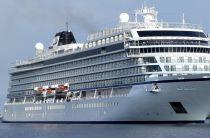
Viking Cruises unveils 6 new Asian itineraries in 2025 visiting Japan, China, and Tibet
Viking has unveiled 6 new itineraries in Asia, set to commence in 2025, that will offer guests enhanced access to Japan and China, including Tibet...
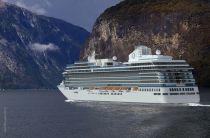
Oceania Cruises unveils 2025 Grand Voyages across 7 ships
Oceania Cruises is set to offer an array of Grand Voyages in 2025, featuring itineraries ranging from 22 to 111 days. These extended journeys will...
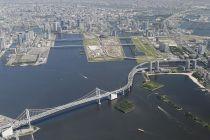
Stranded ferry passengers rescued after 20-hour ordeal off Tokyo coast
Passengers on the high-speed jetfoil ferry Seven Islands Ai (IMO 8019576), who embarked on a journey from Tokyo on Wednesday, July 24th, were...

Oceania Cruises unveils 2025 East Asia voyages
The NCLH-owned luxury brand Oceania Cruises, renowned for its culinary and destination-focused voyages, has announced its East Asia 2025 itineraries...
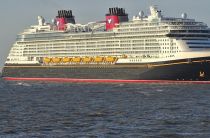
Disney Cruises set sail year-round in Japan by 2029
On Tuesday, July 9, DCL-Disney Cruise Line and Oriental Land Co Ltd (OLC) announced a new agreement to bring year-round Disney cruise vacations to...
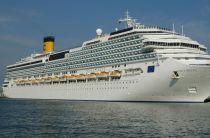
Costa Serena ship cruises in Southeast Asia and Japan (2025-2026 winter)
Costa Cruises introduced significant innovation for winter 2025-2026, unveiling 2 new itineraries in Asia. Beyond its traditional routes in the...
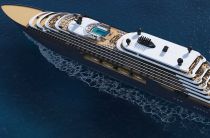
Ritz-Carlton launches Asia-Pacific cruises in 2025 with Luminara ship
The Ritz-Carlton Yacht Collection is deploying one luxury superyacht across the Pacific Ocean. The new ultra-luxury travel brand has announced that...
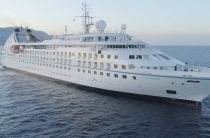
Windstar unveils new Alaskan and Japanese cruises for Star Seeker ship (2026)
Windstar Cruises shared plans for its latest vessel - Star Seeker, set to embark on voyages to Alaska and Japan upon joining the fleet in 2026...
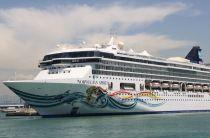
NCL rolls out new Asia-Pacific and Australia cruises for 2024-2026 seasons
NCL-Norwegian Cruise Line is set to launch 30+ new port-intensive cruises across the Asia Pacific, Australia, and New Zealand regions. These voyages...

Oceania Cruises announces free pre-cruise hotel stays for select 2025-2026 voyages
Oceania Cruises has unveiled an enticing offer for travelers looking to embark on unforgettable journeys during late 2024 and 2025. Guests booking...
- show more news
Tokyo Narita vs. Haneda: Which airport should I fly into?

As one of the world's most populous cities, it makes perfect sense that Tokyo would have two major airports, Narita (NRT) and Haneda (HND). However, in many ways Tokyo's system is unique. Unlike Chicago and Washington DC, which have one major international airport and another smaller, primarily domestic one, both of Tokyo's airports serve long-haul flights to destinations around the world. While Narita has typically been thought of as the more international of the two, Haneda is gaining ground with dozens of new flights launching to the US next year . Today, we're going to take a look at the pros and cons of each, to help you decide which airport to fly into on your next trip to Japan.
Distance to downtown & transportation options
Tokyo is a massive city at over 800 square miles, so it's hard to pick a true center of the city. There are over 20 wards in Tokyo, each made up of several different districts. For the purpose of this post, we'll use the iconic Shibuya crossing as our reference point in downtown. Often referred to as the busiest street in the world, you can easily see 2,500 or more people crossing a single intersection if you arrive at the right time of day.
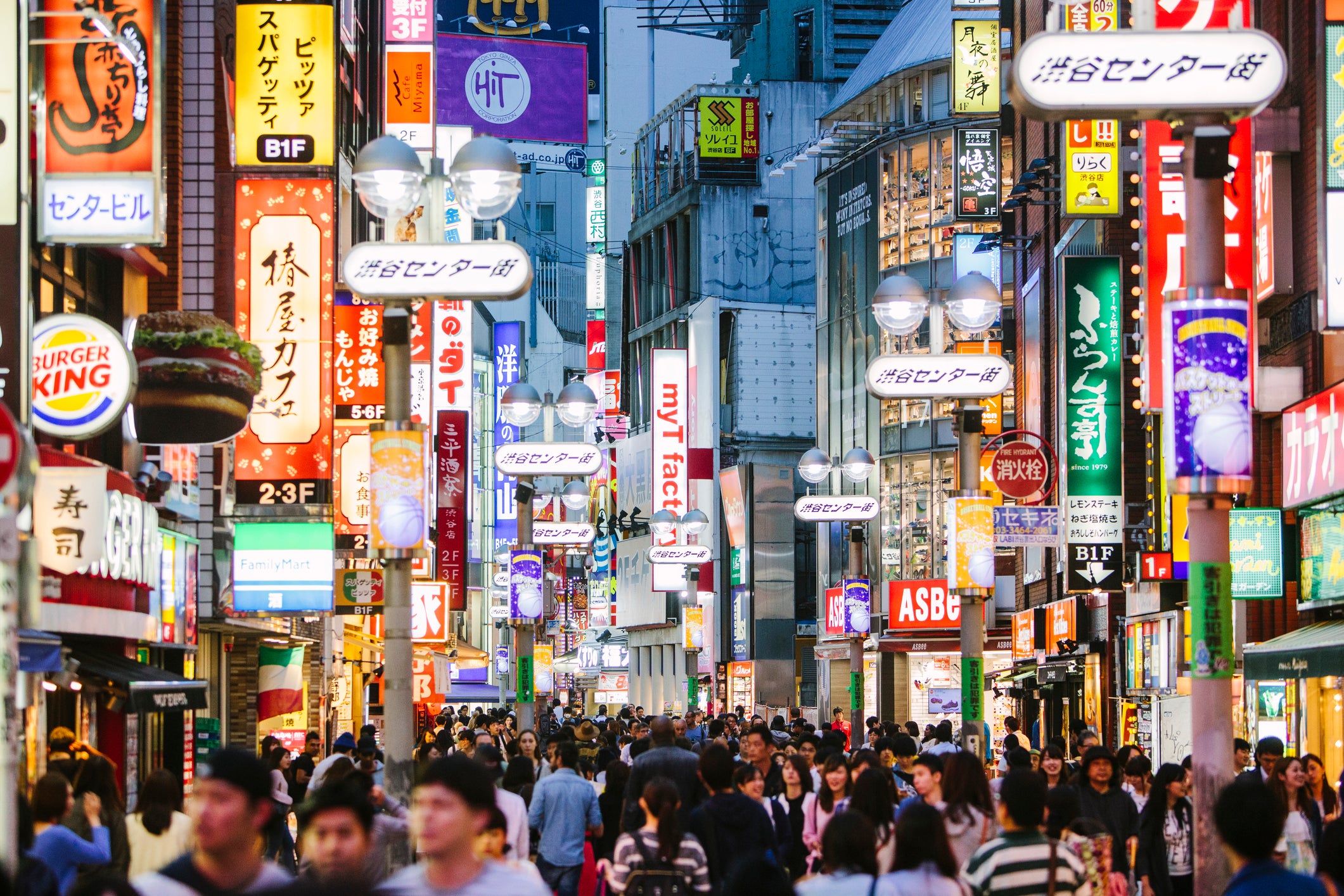
Here's how the two airports stack up:
The maps make it pretty clear just how much farther out of the city the Narita airport complex is:

Driving in from Narita will take at least an hour and a half, though potentially much more if you hit traffic as you start to approach the city. Cabs in Japan are quite expensive as well, and this trip can easily run you $200 USD or more. Public transit is cheaper by comparison, though the journey isn't all that much shorter, as you'll have to connect from the airport express line to Tokyo's sprawling metro system to get to your final destination.
Haneda is much closer by comparison, located on a peninsula just south of the city center. This leads to some spectacular views when you're arriving/departing, and makes it much easier to get into the city. When I had an overnight layover in Tokyo last year, I flew into Haneda and was able to reach my hotel (InterContinental ANA The Strings Tokyo) after just 20 minutes on the Keikyu-Kuko line. Driving to Shibuya Crossing will take 30-45 minutes depending on traffic, though even a short trip like this might result in a $100+ taxi bill. Public transit will get you there in the same amount of time for less than $7.
Winner: In a vast city like Tokyo, the less you have to travel to get to and from the airport the better. Haneda has long been a favorite of many travelers because of its relative proximity to the city, and I personally go out of my way to chose it over Narita if I'm leaving the airport and not just transiting.
With the free TPG app , you can track your progress toward your next trip, and get spending recommendations to help you reach your travel goals.
Airlines and flight options
Japan is the only country with two Skytrax five star airlines , with both ANA and Japan Airlines (JAL) accounting for two of the 10 airlines that have earned that distinction. Both operate long and short-haul flights out of both Narita and Haneda, and it's not uncommon to see itineraries that connect through Tokyo and include a change of airports (make sure to watch out for this when booking awards!).

Let's start by taking a look at Narita, which offers more long-haul flights especially to the US. ANA flies from Narita to eight US cities in the lower 48 (shown on the blue map below), while JAL flies to seven (shown in red). Both carriers also fly to Hawaii, with ANA even operating its new Flying Honu A380s exclusively between Tokyo Narita and Honolulu (HNL).
Flights are operated by a mix of 777-300ER and 787 aircraft, with both airlines offering an exceptional first class product on their 777s and business class on the 787s.
Related: Welcome to the Square: ANA (777-300ER) in First Class From Washington, DC, to Tokyo
Service from Haneda is more limited, with ANA flying to Chicago (ORD), New York (JFK) and Los Angeles (LAX), and JAL flying to New York JFK and San Francisco (SFO).
What about American carriers? Most of them currently fly to Narita, though that's set to change next summer. With the US government approving 12 new slots for US airlines to fly to Haneda, American travelers can look forward to a much easier trip to Tokyo starting next summer. There's a good chance that this service will come at the expense of flights to Narita, with Delta already announcing it will entirely shift service to Haneda from Narita .
Many international airlines also double down and fly to both airports in order to increase connecting traffic with alliance partners and provide more options to travelers. For example, the following carriers all serve both Tokyo Narita and Tokyo Haneda:
- British Airways
With airlines that only fly to one airport, there's definitely a slight preference for Narita, which serves about 13 million more passengers per year than Haneda. The following airlines only offer service to Narita:
In many cases, even if a given airline doesn't fly to the airport you want, you can get there on a code-share or alliance partner. For example, Oneworld passengers flying between Japan and Sydney have two options: JAL flies nonstop from Narita, while Qantas flies nonstop from Haneda.
Haneda's clearest edge comes with domestic flights within Japan. Both JAL and ANA offer more robust networks for domestic flights out of Narita, which is something to consider if you're traveling to one of Japan's other islands or somewhere not easily accessibly by bullet train.
Winner: At the moment Narita wins this category, though the gap is certainly closing. As of next year, Haneda will undoubtedly have the upper hand for travel to and from the US, while Narita will still retain its star status for select long-haul international routes.
Airport amenities and perks
You'll find first and business class lounges for both JAL and ANA at both airports, with minimal difference in design aesthetics and food and beverage offerings. JAL's first class lounge at Narita is especially well known for the made-to-order sushi station it offers, while first class passengers at Haneda can sample a made-to-order teppanyaki bar.

For passengers who aren't traveling in a premium cabin, Narita might have the upper hand. The airport offers a total of five Priority Pass lounges across its two terminals, while Haneda has none. Narita will also be one of only three international locations to get a United Polaris lounge , though that lounge is not likely to open for at least another year or two.
Both airports feature a decent amount of shopping and dining options, and are generally among the more pleasant places to spend a long layover. Narita also has a bit more of an #avgeek appeal, as the size and variety of planes you'll see makes for some great organic entertainment. Some, like Thai's Airbus A380, are especially rare finds for US-based travelers.
Winner: Premium-cabin passengers won't notice a ton of difference between the two airports, but those traveling in economy will be happier traveling through Narita. Between Priority Pass lounges and some great plane spotting, it makes for a more enjoyable layover.
Bottom Line
Narita and Haneda are both excellent airports, though there are some important differences between the two. Haneda is much closer to downtown Tokyo, and is increasingly being used for long-haul flights especially to the US. Narita, on the other hand, is served by more international carriers and has a broader selection of airport lounges to choose from. At the end of the day, award travelers should enjoy the fact that they get to make this choice in the first place. When ANA and JAL double down and fly two 777s between a US city like New York and Tokyo, that means twice as many seats available for award bookings on two of the world's best airlines.
Truly Tokyo
A Tokyo Travel Guide
Narita Airport Transport: The Best Way from NRT to Tokyo
What’s the best way to get from Narita Airport (NRT) to Tokyo? How can you get on airport trains without waiting on lines? Here are the tips for getting into Tokyo fast and easily.

The Takeaway
- Fast: Narita Express (N’EX) or Keisei Skyliner trains.
- Easy: Airport limousine bus.
- Private: Regular taxi, pre-booked taxi.
- Cheap: Low-cost bus.
- Tip: Use a digital Suica to avoid lines.
- Tip: Use luggage shipping services to travel bag-free.
- Scroll down for all the details.

What’s The Best Way to Get from Narita into Tokyo?
The answer is: It depends. First, which of the following best describes you?
- You want to get to Tokyo as fast as possible.
- You don’t want to carry your bags through train stations.
- You don’t want to carry your bags and/or you don’t like public transport.
- You want to get there as cheaply as possible.
Let’s discuss each of these one at a time.

1) You Want to Get There as Fast as Possible
If speed is your priority, then take one of the following trains:
- Narita Express (N’EX) : Direct service to Tokyo Station (about 1 hour, ¥3070). Some trains continue to Shibuya (about 1 hour 20 minutes, ¥3250) and Shinjuku (about 1 hour 25 minutes, ¥3250).
- Keisei Skyliner : Direct service to Ueno (about 50 minutes, ¥2580).
These trains operate from train stations beneath the terminals at Narita (follow signs for trains). Buy tickets at the stations or use a digital Suica card (see below).

2) You Don’t Want to Carry Your Bags Through Train Stations
If you don’t want to lug your bag onto trains and through train stations, consider an airport limousine bus: They stop outside the arrival halls at Narita, attendants stow your bags underneath the bus, and they drop you in front of many major hotels in Tokyo.
- Narita limousine bus : between 85 and 110 minutes, ¥3100.
Buy tickets from machines outside the arrival halls.

3) You Don’t Want to Carry Your Bags and/or You Don’t Like Public Transport
If you don’t want to carry your bags and/or you don’t like public transport, then an airport taxi is the way to go:
- Regular taxi/van from rank: 65 to 85 minutes, around ¥21,00.
- Pre-booked taxi/van: 65 to 85 minutes, ¥15,59.
Grab a taxi from the ranks outside arrival halls or book a private taxi or van online .
4) You Want to Get There as Cheaply as Possible
Narita Airport low-cost buses (LCB) are a great option for those on a tight budget. They leave from outside the arrival halls at Narita and drop you in central locations at Tokyo Station, Ginza and Ikebukuro (among others).
- Narita Airport low-cost buses : between 85 and 110 minutes, ¥1300 to ¥1900.
Buy tickets from counters inside arrival halls.

How to Get on the Trains Fast and Easily
When you ride the Narita Express into Tokyo, you normally buy your tickets from the Japan Rail (JR) ticket counters, JR Travel Service Offices, or ticket machines. Note that the regular counters and ticket machines are faster than the JR Travel Service Offices. If you’ve got a Japan Rail Pass, you can use it to ride the Narita Express, but you’ll have to wait on line to pick up your pass and get your reserved seat ticket at the JR Travel Service Office.

In busy seasons, there can be long waits for the counters, ticket machines and JR Travel Service Offices. Here’s a trick to board the Narita Express without waiting on any lines. If you’ve got an iPhone and your Apple Wallet is linked to a MasterCard or American Express Card, you can install a digital Suica card on your phone. For details, see this page . You’ll need to have at least ¥3070 on your Suica card to ride the Narita Express to Tokyo Station (or ¥3250 to Shibuya or Shinjuku).
Here's what you do to avoid lines with a digital Suica: Stroll past all the lines and go directly to the JR turnstiles. Tap your phone on the turnstile and go to the platform. Find the Narita Express reserved seat ticket vending machine on the platform and use your Suica to purchase your reserved seat ticket to your destination (all seats on the Narita Express are reserved). No muss, no fuss, no lines.

Avoid Lugging your Luggage!
When you’re tired from a long flight and facing Tokyo’s public transport for the first time, you really don’t want to be lugging a heavy suitcase. Here’s the solution: You can ship your suitcase (or backpack) from the airport to your hotel and it will arrive the next day. You’ll need the right luggage to do this, of course. It’s cheap, reliable and they speak English at the counters. When you exit the arrivals hall, just walk to the end of the hall and you’ll find the luggage shipping counters. For more details, see our Luggage Shipping page .
More Information
- Tokyo Airport Transport
- Arriving at Narita Airport
- Narita Airport Guide
Tokyo Vacation Checklist
- For all the essentials in a brief overview, see my First Time In Tokyo guide
- Check Tokyo accommodation availability and pricing on Booking.com and Agoda.com - often you can book with no upfront payment and free cancellation
- Need tips on where to stay? See my one page guide Where To Stay In Tokyo
- You can buy shinkansen (bullet train) tickets online from Klook - popular routes include Tokyo to Kyoto , Tokyo to Osaka and Tokyo to Hiroshima
- You can buy an eSim to activate in Japan or buy a Japan SIM card online for collection on arrival at Tokyo Narita or Haneda airports. Or rent an unlimited data pocket wifi router
- See my comprehensive Packing List For Japan
- Compare airline flight prices and timings for the best Japan flight deals . Check my guides to arriving at Narita Airport and at Haneda Airport .
- If you're visiting more than one city, you might save money with a Japan Rail Pass – see if it's worth it for you
- A prepaid Welcome Suica card makes travelling around Tokyo much easier - here's how
- World Nomads offers simple and flexible travel insurance. Buy at home or while traveling and claim online from anywhere in the world
- Do you want help planning your trip? Chris Rowthorn and his team of Japan experts at Japan Travel Consulting can help
Tokyo District Map

- Imperial Palace Area
- Tokyo Station
- Shimbashi Shiodome Hamamatsucho Shinagawa
- Akihabara Kanda
- Roppongi Akasaka
- Harajuku Aoyama
- Ebisu Daikanyama Meguro
Disclosure: trulytokyo.com is a participant in the Amazon Services LLC Associates Program, an affiliate advertising program designed to provide a means for sites to earn advertising fees by advertising and linking to amazon.com and amazon.co.uk. World Nomads provides travel insurance for travellers in over 100 countries. As an affiliate, we receive a fee when you get a quote from World Nomads using this link. We do not represent World Nomads. This is information only and not a recommendation to buy travel insurance.
Celebrity Blog
- Special Occasions
- Choosing a Cruise
- Planning / Booking A Cruise
- Preparing For Your Cruise
- What To Expect On A Cruise
- Australia, New Zealand & the Pacific
- Central America
- East Coast & Bermuda
- Mexican Riviera
- South America & Antarctica
- Destinations
14 Best Day Trips from Tokyo
By Kieran Meeke
Last updated: September 11th, 2024
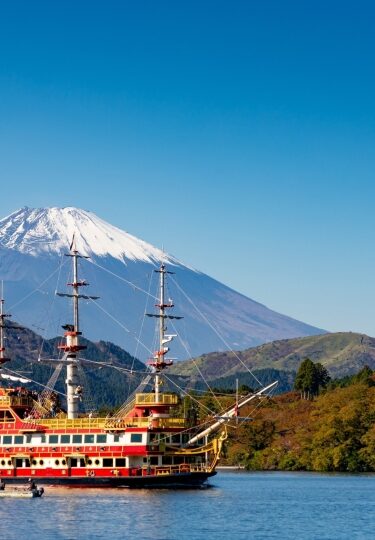
- Find a Cruise
While there’s no end of interesting things to do in Japan’s capital, the best day trips from Tokyo offer even more options. From scenic countryside to hot springs and ancient temples, there’s a wide choice of sights.
The port cities of Yokohama and Yokosuka were vital in opening up Japan to the outside world. Narita, famous for its airport, is also home to a 1,000-year-old temple.
On Mt. Takao, you can go hiking; in Chichibu, you can try ziplining or bungee jumping. The three shrines of Enoshima island are more sedate, while Kawazaki’s Warehouse is a temple to computer games. Take your pick, then, of exciting Tokyo day trips.
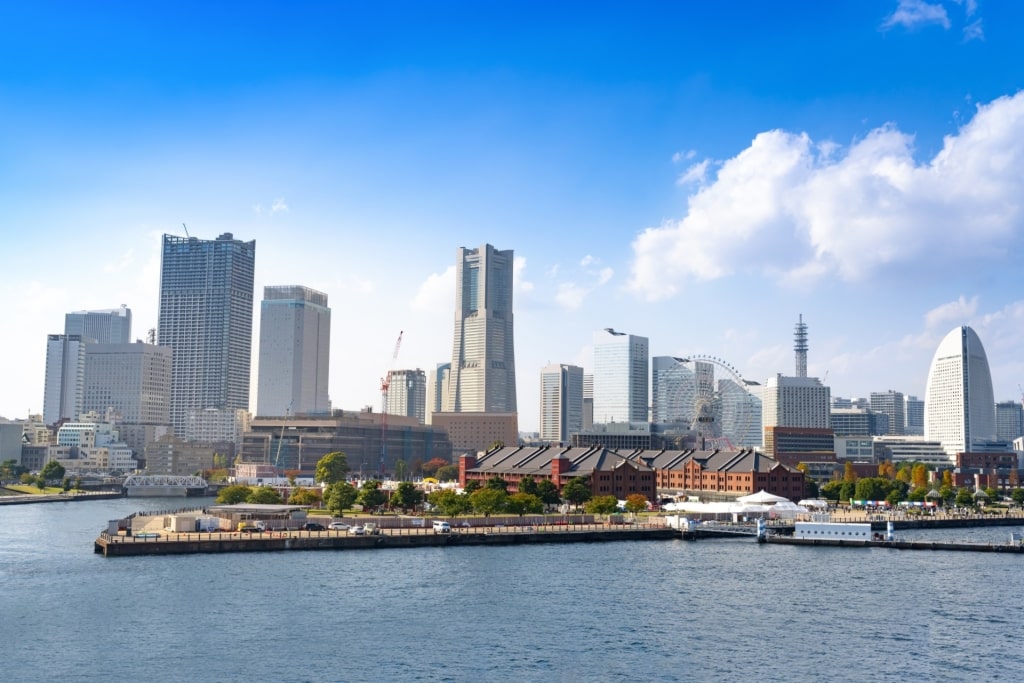
The lovely Japanese city of Yokohama is less than an hour from Tokyo on the Shinkansen high-speed rail. The city boasts Japan’s largest Chinatown, a reminder of its importance as a port.
Find out more about that history in the Yokohama Port Museum. Photographers will love the Nippon Maru, a beautiful old sailing ship moored outside.
This harborfront is part of the central business district, Minato Mirai 21, with its futuristic architecture. The view from the 972-ft-high Yokohama Landmark Tower takes in Mount Fuji on clear days.
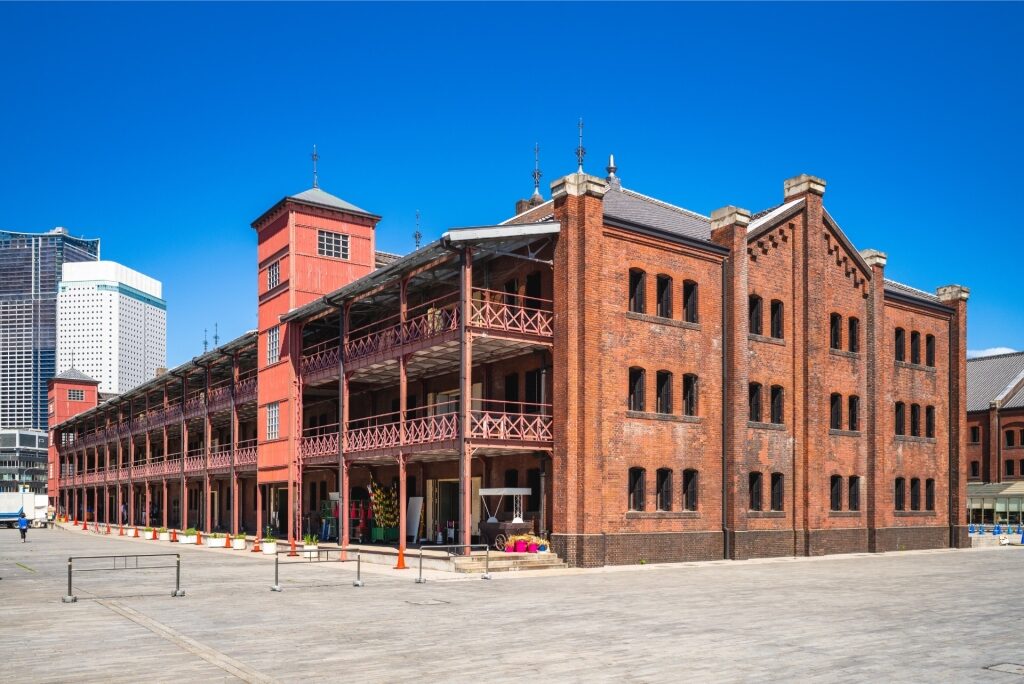
Red Brick Warehouse, Yokohama
At the sprawling Red Brick Warehouse, a renovated old customs building, you’ll find shopping and dining. Don’t miss the quirky CupNoodles Museum if you are a fan of instant noodles.
For an unusual souvenir, search out merchandise from the Yokohama DeNA BayStars. This professional baseball team plays out of Yokohama Stadium.
Read: Beautiful Places in Japan
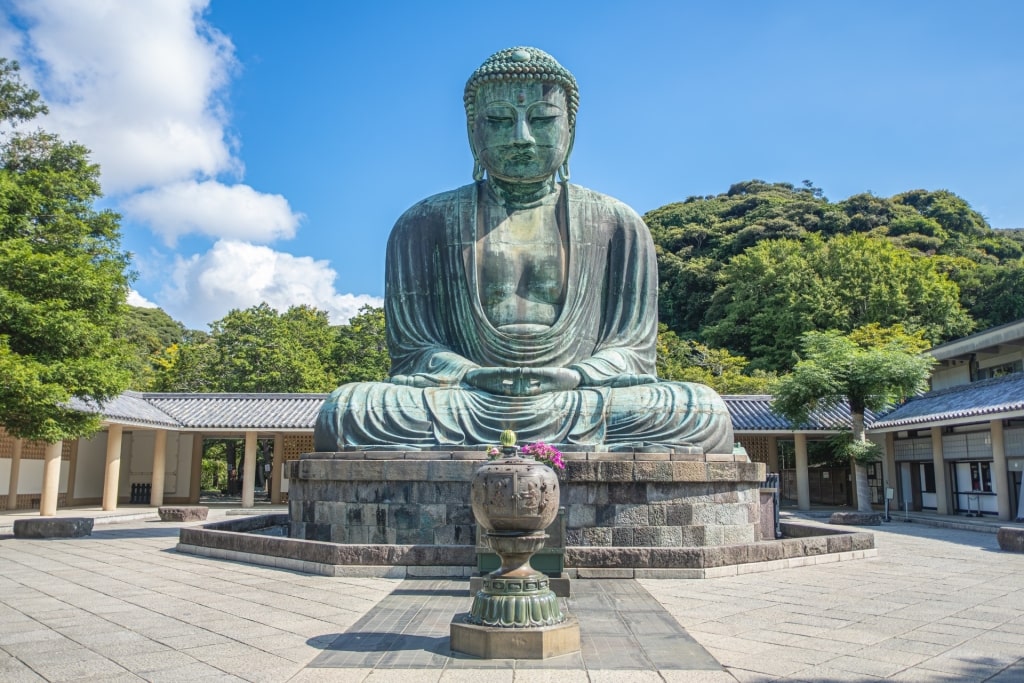
Great Buddha in Kotoku-in Temple, Kamakura
Kamakura is most famous for its Great Buddha— Daibutsu —in Kotoku-in Temple. Dating to the 13th century, this 33-ft-tall bronze statue is the country’s third largest, yet still remains one of the best places to visit in Japan off the beaten path .
Kamakura’s many shrines and temples might remind you of Kyoto. From the Daibutsu , you can walk to the serene Jochi-ji, one of five famous Japanese temples here.
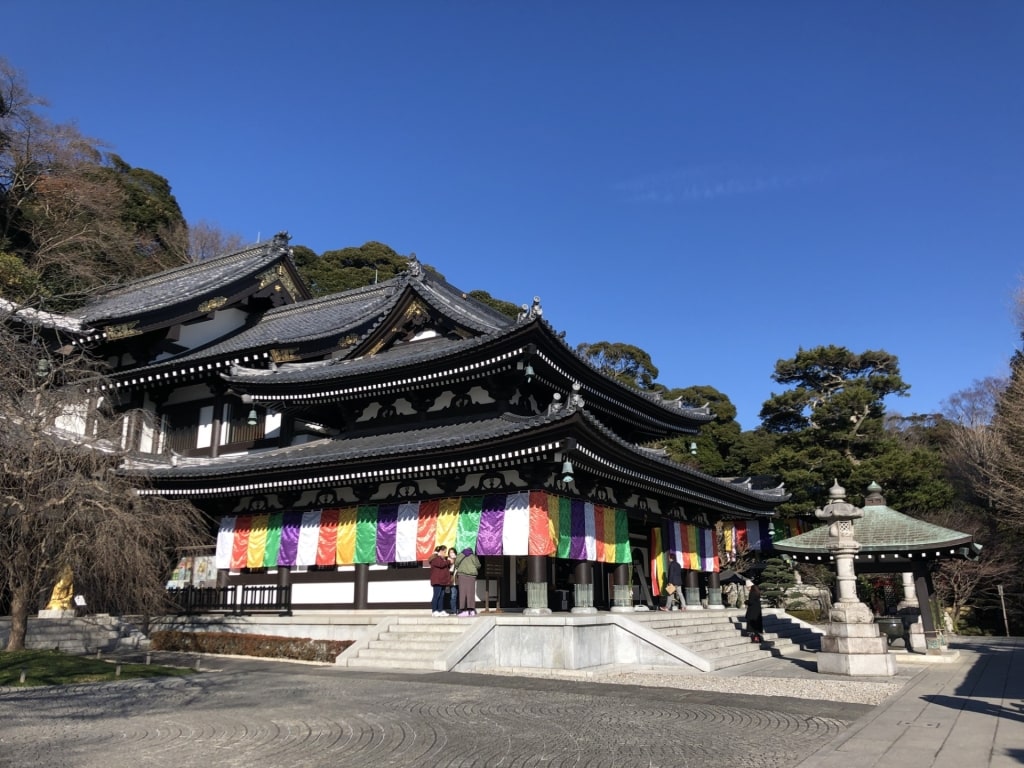
Hase-dera Temple, Kamakura
Hase-dera Temple, with its 11-headed Kannon statue and beautiful gardens, has wonderful sea views. Tsurugaoka Hachimangu is an impressive Shinto shrine with equally lovely grounds.
This last stands at the top of Komachi-dori shopping street, running down to the waterfront. Walk it to browse for souvenirs and sample local food.
The most unusual shrine is Zeniarai Benten Shrine, where you can wash your money in a sacred spring. This is said to bring more money, so it’s very popular with businesspeople.
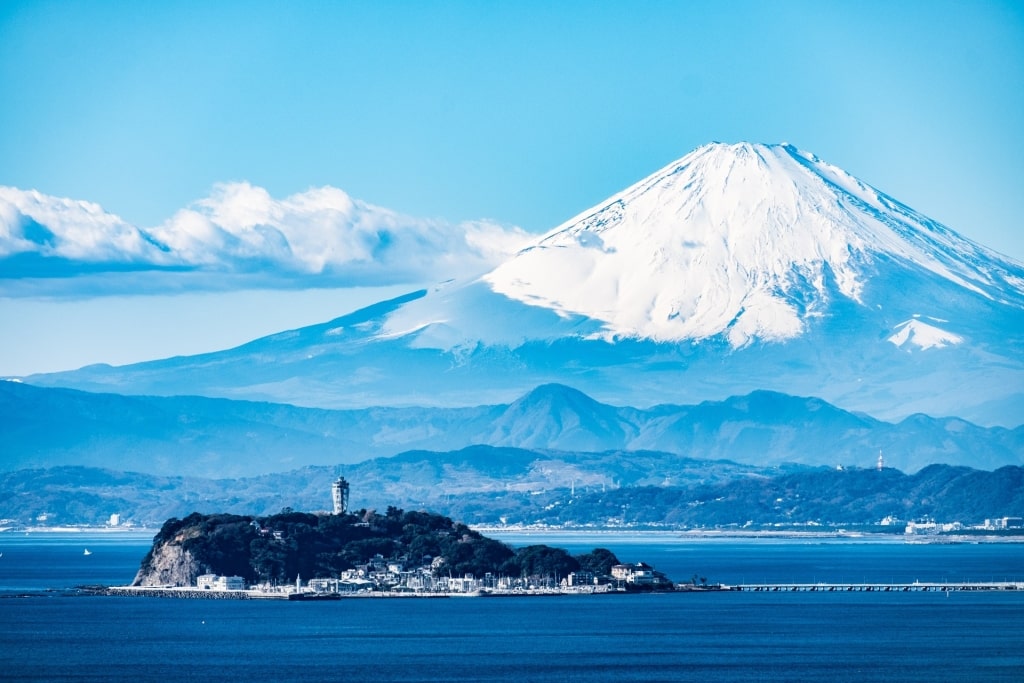
The small island of Enoshima is a popular destination with Japanese people for its three shrines. Dating back to 552, they are dedicated to the goddess Benzaiten, a deity associated with water.
Benzaiten became linked to the arts, good fortune, and lovers. That wide appeal made Enoshima a popular day trip from Tokyo as far back as the 17th century.
Therefore, there are plenty of shops, restaurants, and entertainment. Stroll along Benzaiten Nakamise Street to buy Japanese souvenirs or taste whitebait, a local specialty.
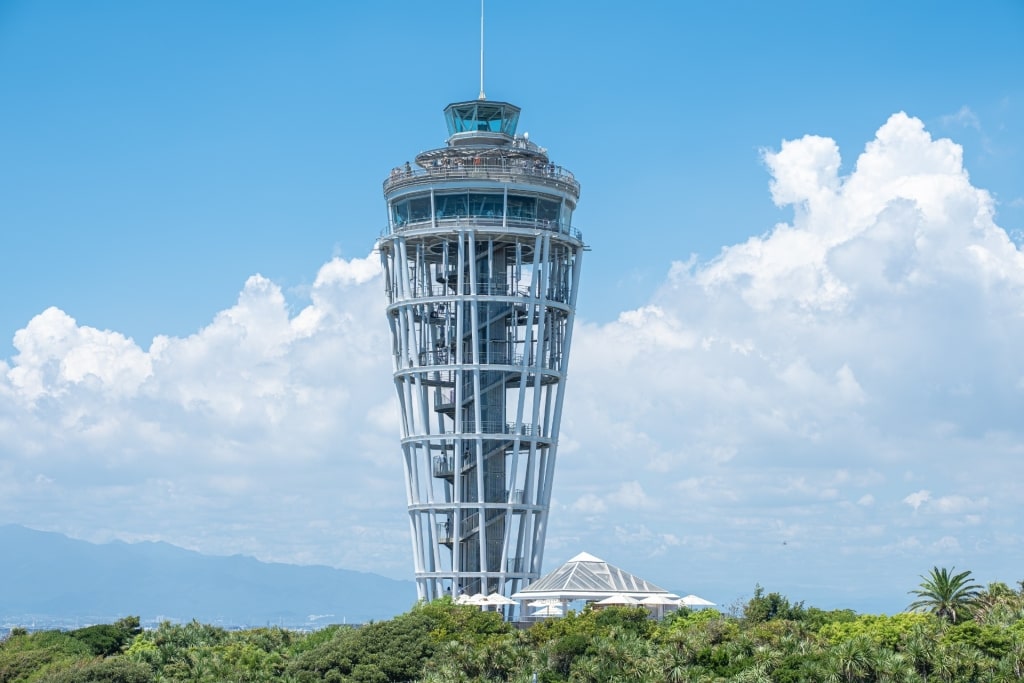
Sea Candle, Enoshima
The Sea Candle is a lighthouse with panoramic views of the coast and Mount Fuji. The Samuel Cocking Garden is a beautiful botanic garden, great for strolling.
Finally, climb up to the last shrine—sadly not wheelchair-accessible—and you’ll see Hadaka-Benzaiten, of ”Naked Benzaiten”. Modestly shielded by her lute, in this form she is the goddess of artistry, music, and wisdom.
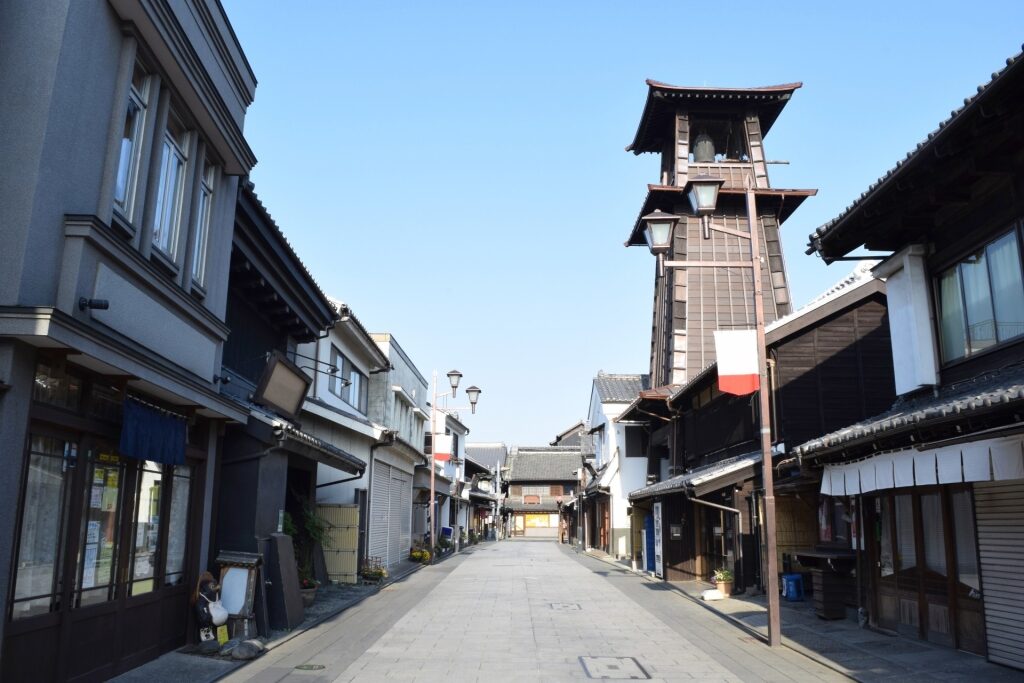
Under an hour from Tokyo, Kawagoe stands out for its traditional architecture and wooden bell tower. This being Japan , it’s also known for its sweet potatoes and candies.
The Toki no Kane—“Bell of Time”—is a wooden bell tower dating back 400 years that chimes four times a day. It stands in the Kurazukuri Warehouse District, many of whose traditional clay-walled buildings are now shops or restaurants.

You’ll find sweet potato— yaki-imo —served in everything from coffee to ice cream. You can taste the city’s equally famous candies in the sweet-smelling Kashiya Yokocho, or “Penny Candy Alley”.
Kawagoe is also known for traditional Japanese crafts such as dolls and papier-mâché. The Coedo Brewery produces craft in the form of beer from traditional Japanese ingredients.
Among several major temples, Kitain is significant as a last remnant of the original Edo Castle. Hikawa is a peaceful Shinto shrine, known for its “love” stones and beautiful grounds.
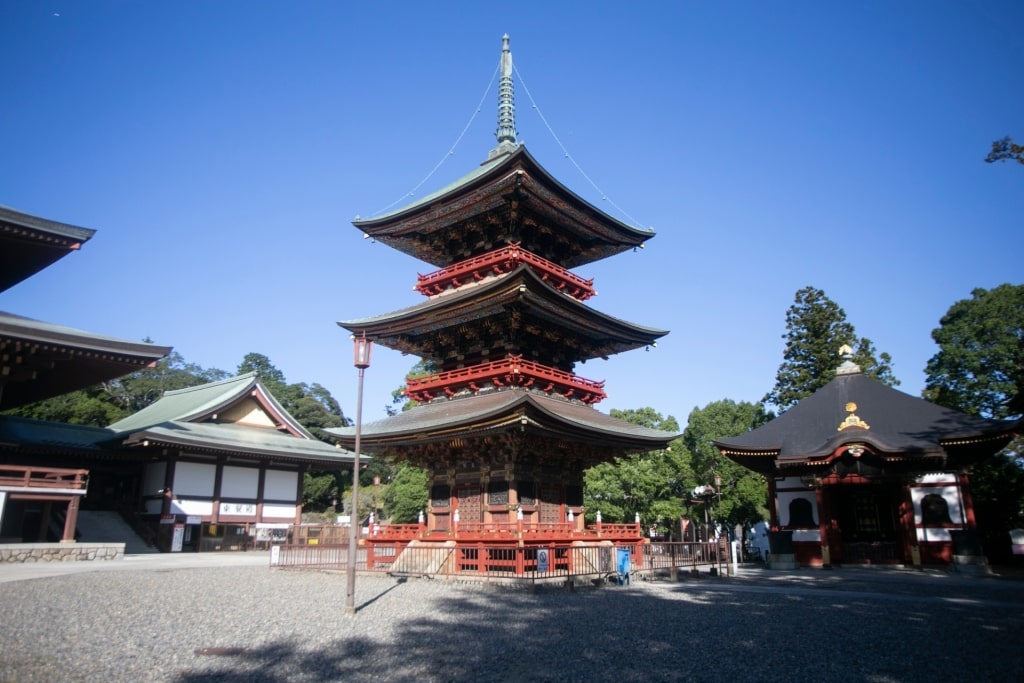
Naritasan Shinsho-ji, Narita
Well known for its ultramodern airport, Narita has a perhaps surprising number of traditional sites. The greatest is the 1,000-year-old Naritasan Shinsho-ji, a vast Buddhist temple sitting in a peaceful park.
The temple is approached along Omotesando, a long street lined with restaurants and stores. For many centuries, it has been selling pilgrims local dishes and traditional crafts that Japan is known for .
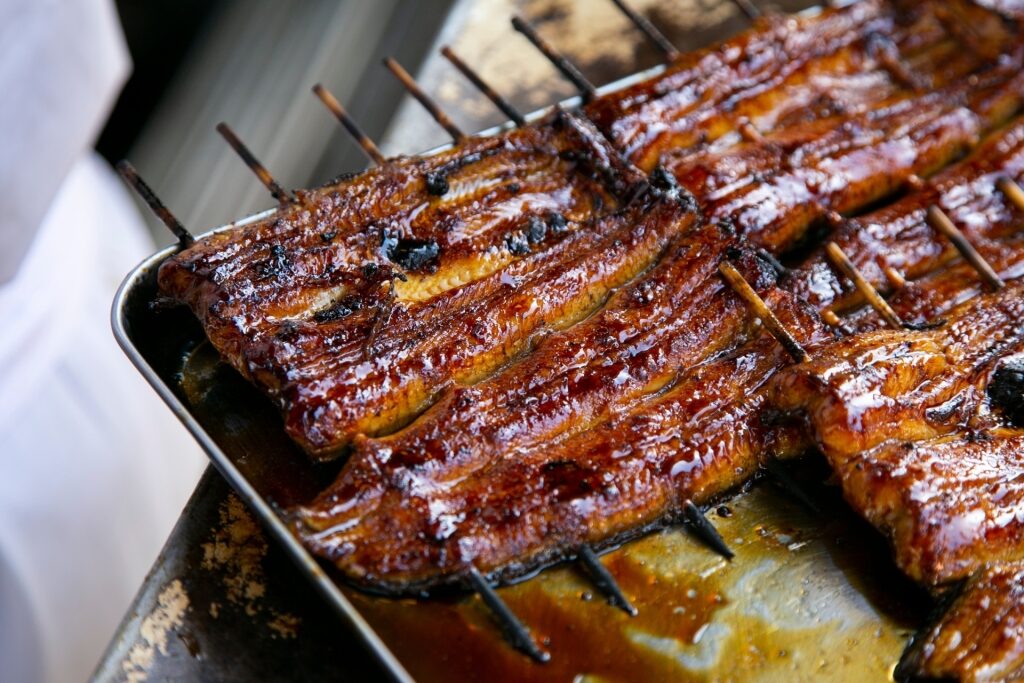
The local speciality is eel— unagi —and the street has some 60 places selling it. The traditional flavoring is sansho, a type of pepper with a hint of citrus.
A must-see in Narita for Japan-lovers is “Rekihaku”, the National Museum of Japanese History. Full of interesting artifacts, it takes you from the prehistoric era to modern Japan, with audio guides in English available.
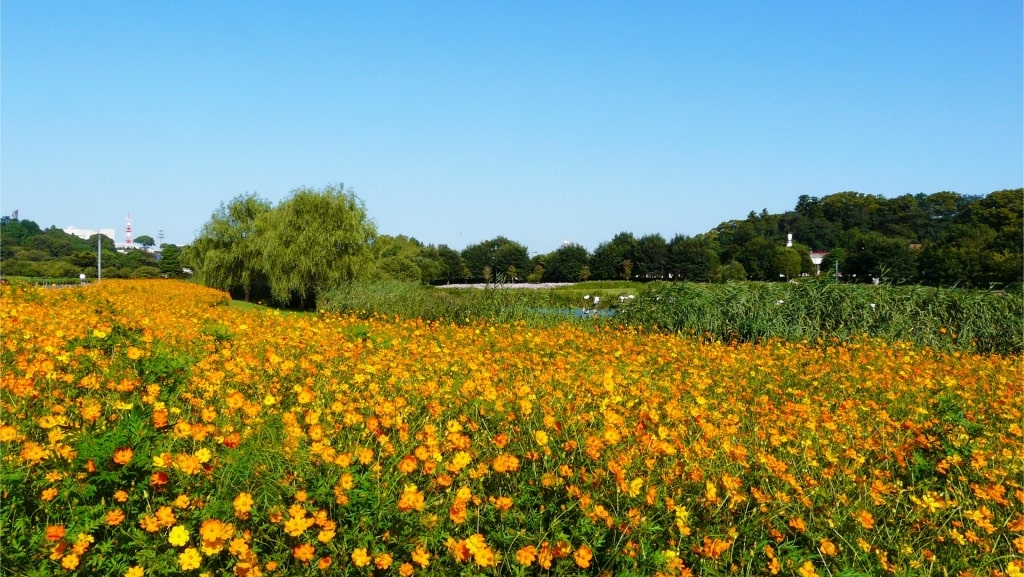
Kairakuen Garden, Mito
Mito is a destination for Kairakuen Garden, one of the top three landscaped gardens in Japan. It’s especially popular during plum blossom season, but its paths, lined with bamboo groves, are lovely year-round.
A must-see here is the Kobuntei, a traditional wooden villa. It was designed to give panoramic views of the garden and nearby Senba Lake.
In complete contrast is Art Tower Mito, a contemporary art space. Look out for its rotating exhibitions and the distinctive metal tower with great city views.
You can see more art at the Museum of Modern Art, Ibaraki, on Lake Senba. There are works by the likes of Manet and Renoir, as well as major Japanese names.

The local culinary specialty is natto , sticky fermented soybeans typically eaten over rice for breakfast. Try the wara natto , with the natto wrapped in rice straw.
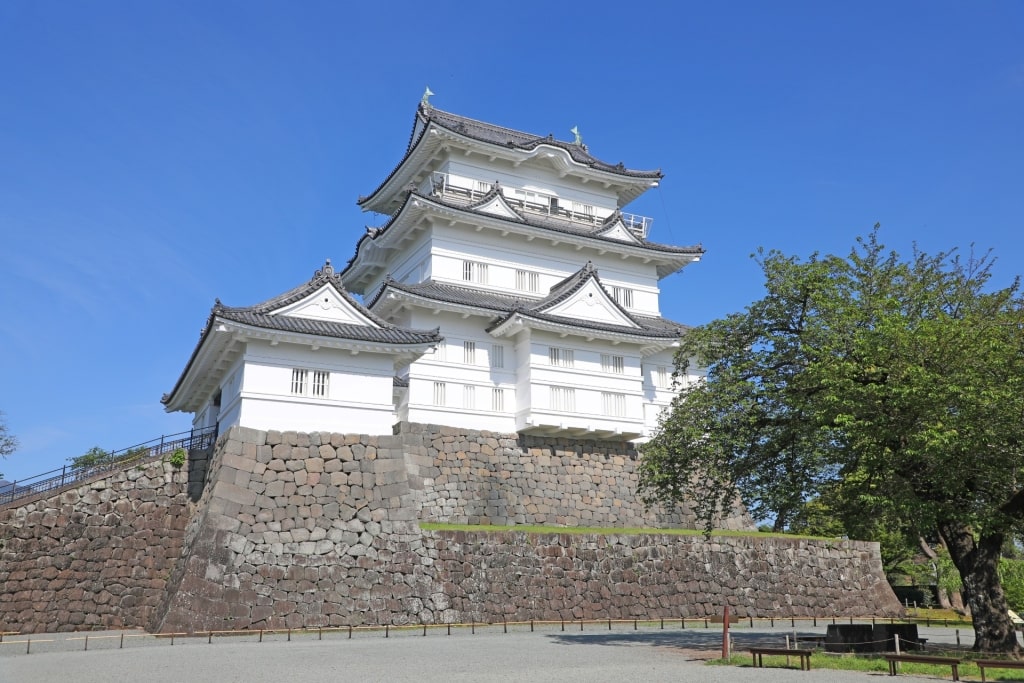
Odawara Castle
Odawara stands on Sagami Bay, just over an hour southwest of Tokyo. Take in the views of the bay from the beautifully restored Odawara Castle.
The museum in the castle showcases samurai armor, weapons, and other artifacts. A more peaceful vision is found in the castle grounds and the nearby Ninomaru Garden.
Hotoku Ninomiya is a shrine near the castle dedicated to a famed scholar. His statue as a young boy, working while reading a book, can be seen at many Japanese schools.
Odawara is noted for its fishcakes and there is even a museum dedicated to them. At the Suzuhiro Kamaboko Museum, you can try making your own.
Follow the fish to Hayakawa Fishing Port, full of boats. Or take a coastal walk at Odawara Beach.
Read: Best Beaches in Japan
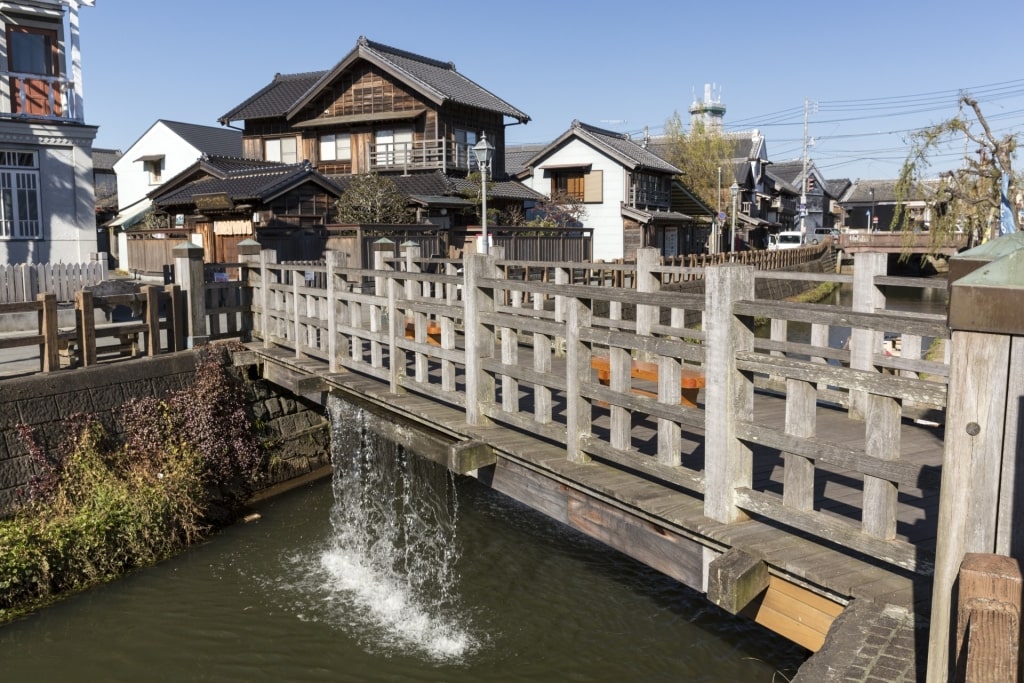
Sawara, 30 minutes east of Narita, is often called “Little Edo” for its authentic historic atmosphere. It’s best appreciated on a canal tour by flat-bottomed boat.
During the Edo period from 1603-1867, Sawara was an important hub for shipping rice. Many of the merchant houses, warehouses, and canals date back to that era.
Visit a tea house for a break and browse shops selling traditional crafts and candies. A highlight is the Ino Tadataka Museum, dedicated to the cartographer who drew the first accurate map of Japan.
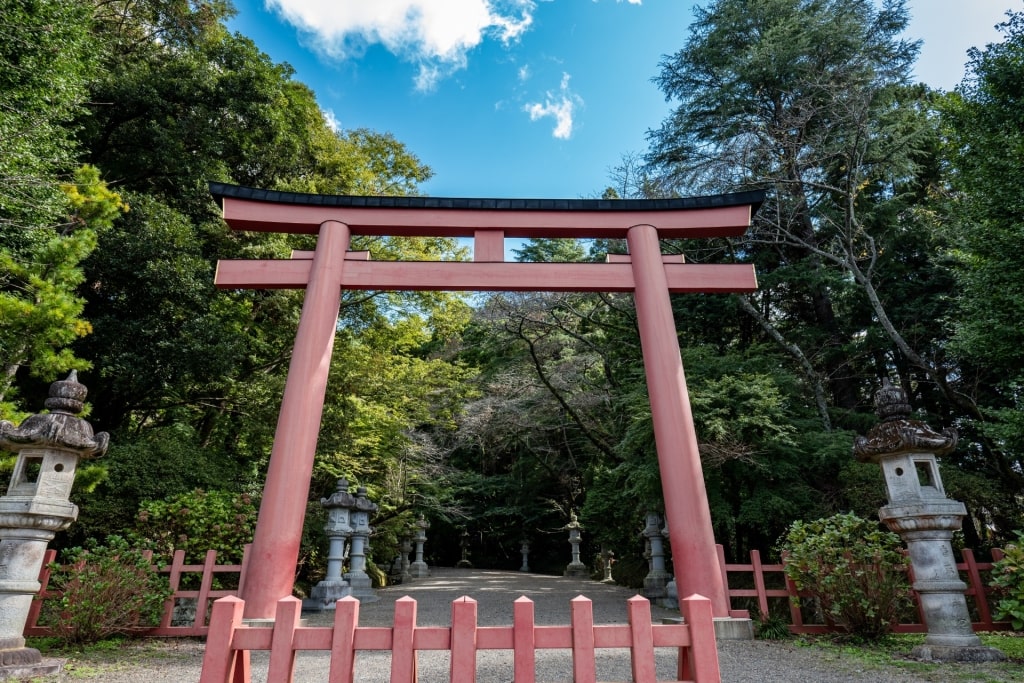
Katori Jingu, Sawara
Nearby is Katori Jingu, one of the oldest Shinto shrines in Japan, established in 643 BCE. Many of its buildings date to a rebuilding in 1700.
North of the Tone River is Suigo Sawara Ayame Park, which has 1.5 million irises, in full bloom during the month of June You can also walk through a tunnel of wisteria and in August, see 300 species of lotus.
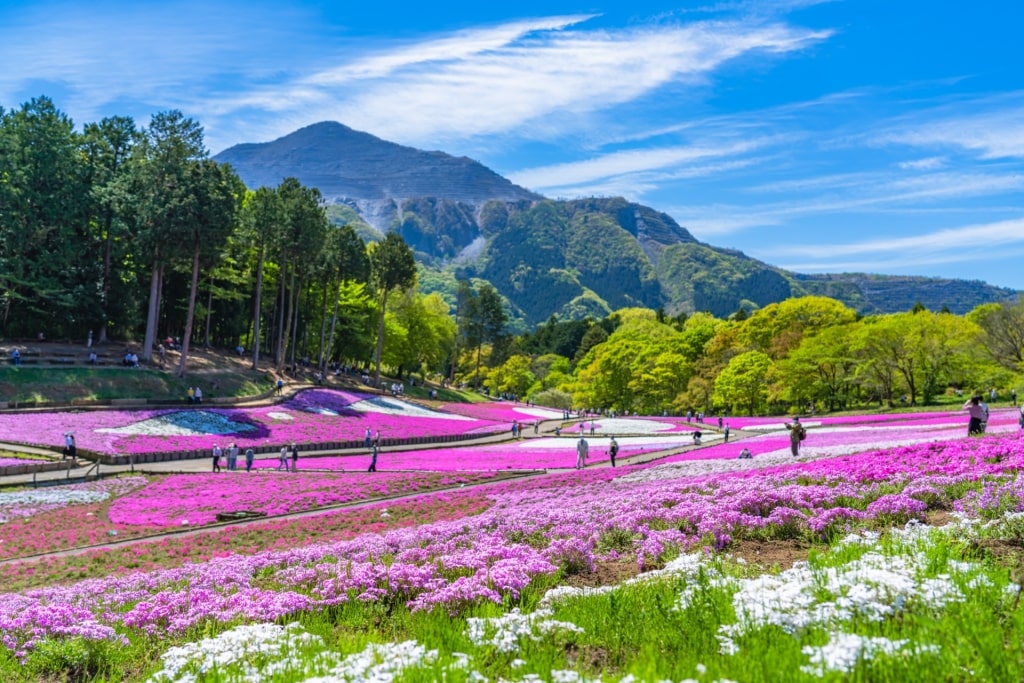
Hitsujiyama Park, Chichibu
Chichibu is best known for its Night Festival in December, with ornate floats and splendid fireworks. It’s associated with Chichibu Shrine, which has been bringing visitors here for generations.
Sitting amid the Nagaonekyuryo mountains in Japan , Chichibu is also a place to explore nature. Chichibu Muse Park shows off the best of it and can be explored on foot, bike, or in the Sky Train.
In spring, Hitsujiyama Park is a photographer’s dream with its fields of shibazakura , or pink moss. Chichibu Geo Gravity Park is a marked contrast with its adrenaline-pumping skywalk, canyon swing, zipline, and bungee jumping.
In the traditional shopping street of Banba Dori you can try local dishes such as miso potato. Soba noodles, sake, and whisky are other local specialities.
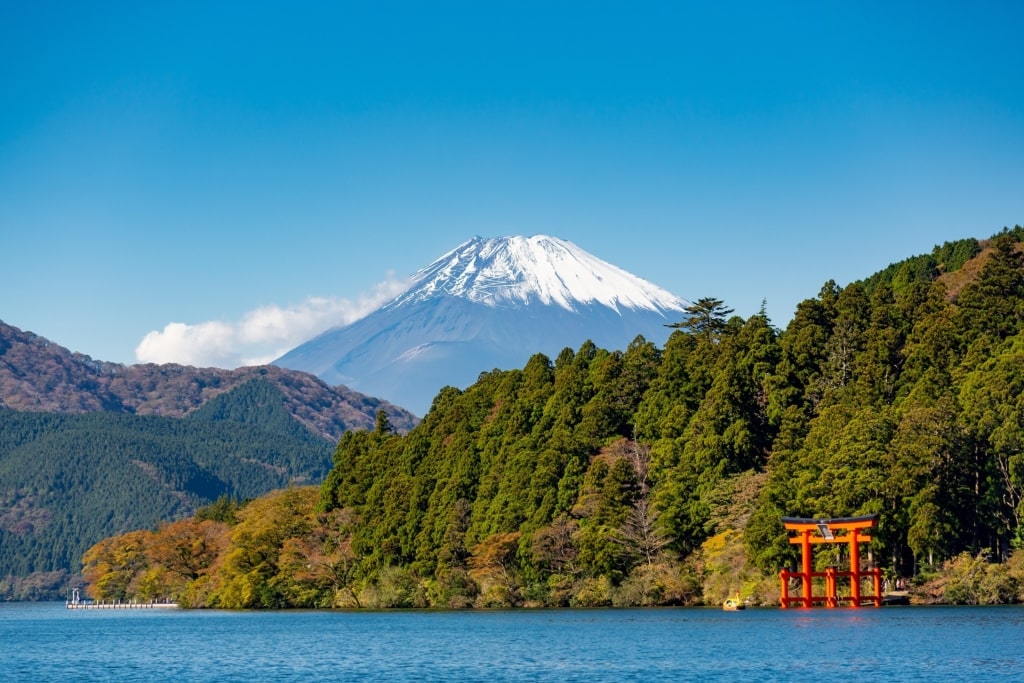
Lake Ashi, Hakone
Hakone is another mountainous town, known for its hot springs and beautiful views of Mount Fuji. Start by taking in an overview of the landscape and Lake Ashi from the scenic Hakone Ropeway.
Hakone Shrine is familiar from photos of its “floating” torii gate standing in Lake Ashi. Take a lake cruise in a replica pirate ship to see this and the view of Mount Fuji.
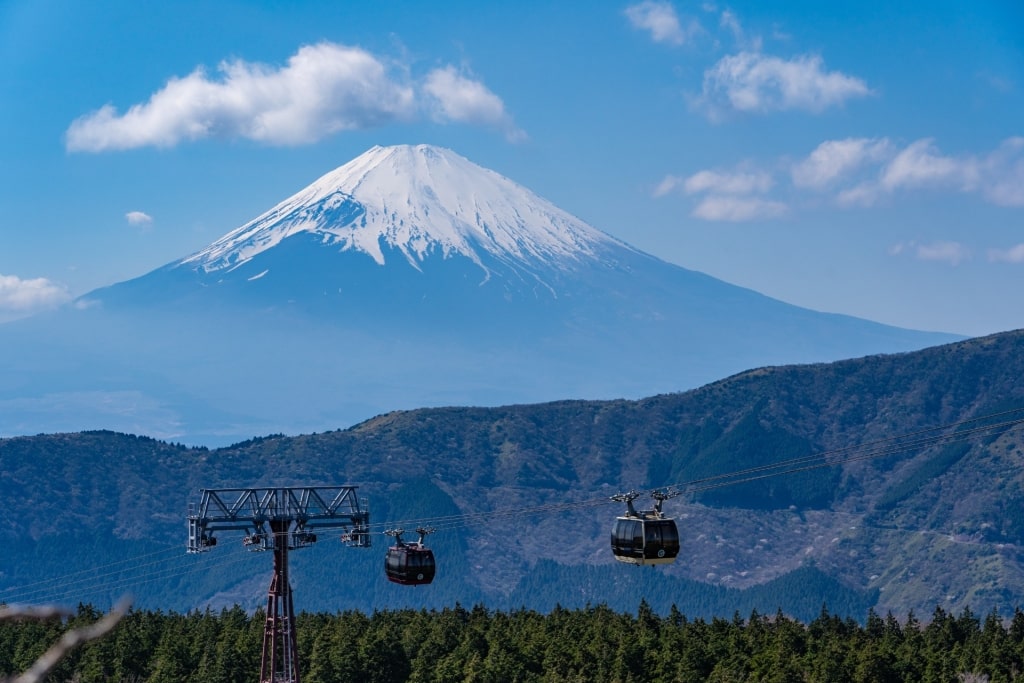
Hakone Ropeway
Another ropeway ride will take you to Owakudani, where you can eat black eggs cooked in the pungent sulfuric springs. Eating one is said to add seven years to your life.
The Hakone Open-Air Museum combines nature and art, with sculptures set against mountain views. There is more art at the Pola Museum of Art, with its impressive collection of European and Japanese works.
Another must-see is the ancient Cedar Avenue which takes you to the reconstructed Hakone Checkpoint. This was an important customs post in the Edo period from 1603 to 1867.
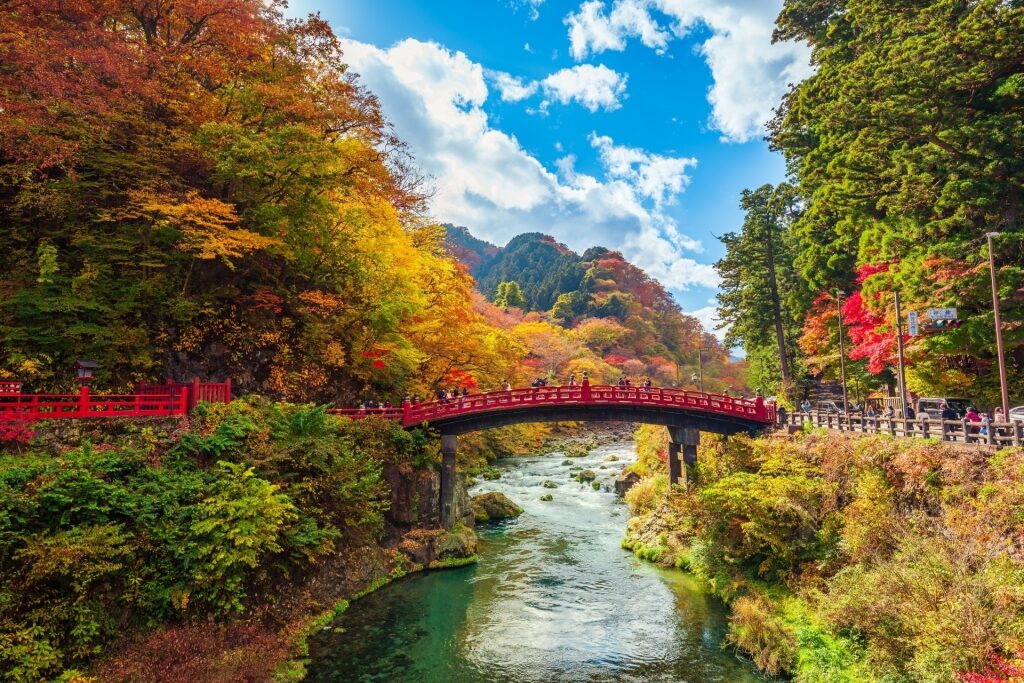
Shinkyo Bridge, Nikko
Nikko is UNESCO-listed for its lavish shrines and temples standing amid beautiful mountains. The shrines are reached across the sacred Shinkyo Bridge, brilliant with red lacquer.
The most famous is Toshogu Shrine, full of intricate wood carving, decorated with gold leaf. You’ll also want to see its “See No Evil, Speak No Evil, Hear No Evil” monkey carvings.
The Kanmangafuchi Abyss is a must-see for its line of stone Jizo statues wearing their photogenic red crocheted caps. The gorge leads to the Tamozawa Imperial Villa, which showcases Edo and early modern Meiji architecture.
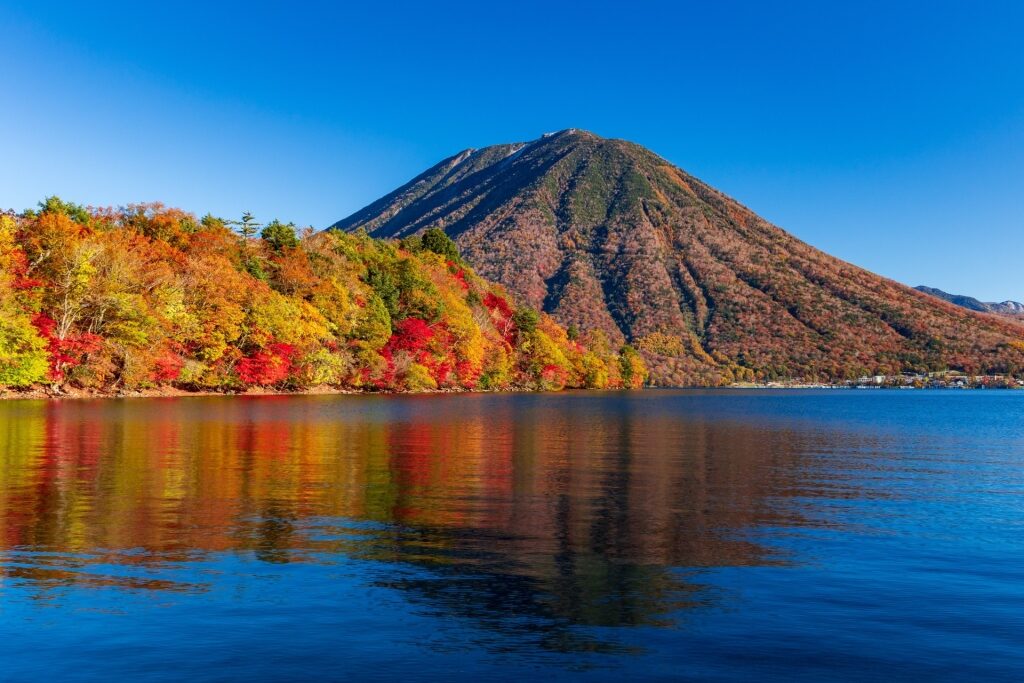
Lake Chuzenji, Nikko
Nature lovers will enjoy the scenic Lake Chuzenji, formed by an ancient volcanic eruption. The 320-feet-tall Kegon Falls is considered one of Japan’s three most beautiful waterfalls.
An unusual attraction in Nikko is Edo Wonderland, a cultural theme park. It features attractions such as a Ninja show and traditional archery, and you can dress up in costume to join the fun.
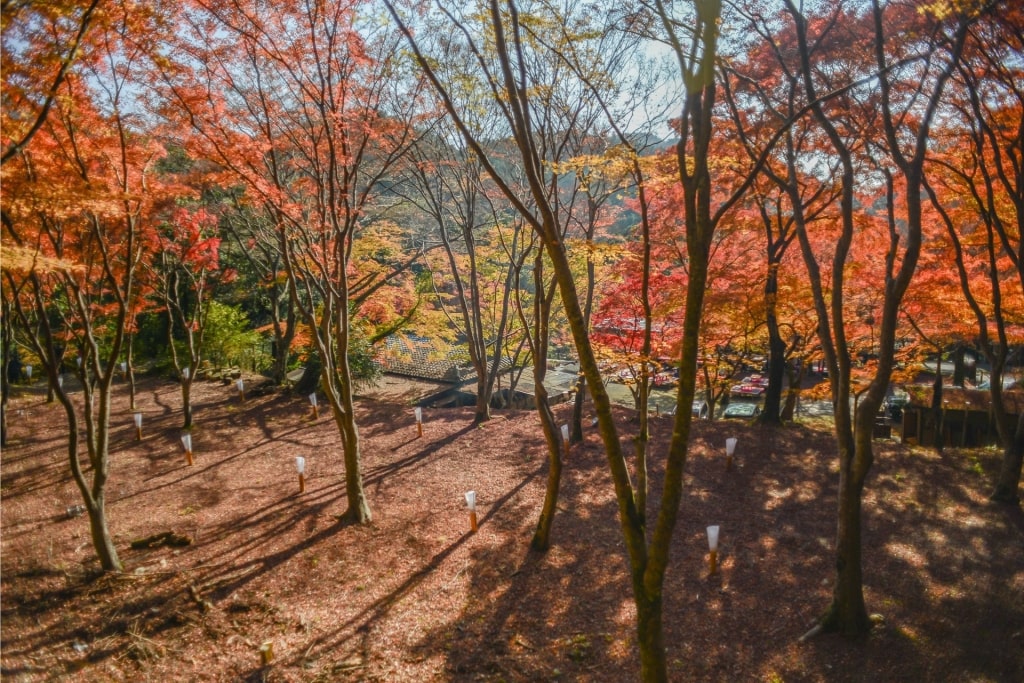
At almost 2,000 feet, Mount Takao is a popular hiking spot for Tokyo residents. This is one of the best day trips from Tokyo if you enjoy outdoor living. Even better, a chair lift or cable car will take you halfway up to start your hike.
Near the summit is Yakuo-in, a Buddhist temple dedicated to the practice of shugendo, or mountain asceticism. It’s also devoted to Tengu, a mythical goblin-like figure from Shintoism thought to be a messenger from the gods.
On clear days, the mountain has spectacular views of Tokyo and Mount Fuji. The area is also famous for its vibrant scenery during fall in Japan .
The Takao 599 Museum at the base of the mountain is a good place to learn more about the area’s flora, fauna, and culture. There are also plenty of onsen baths for easing any muscles tired after your hike.
The local specialty here is tororo soba —noodles with grated yam. You’ll find it in many restaurants around the mountain.
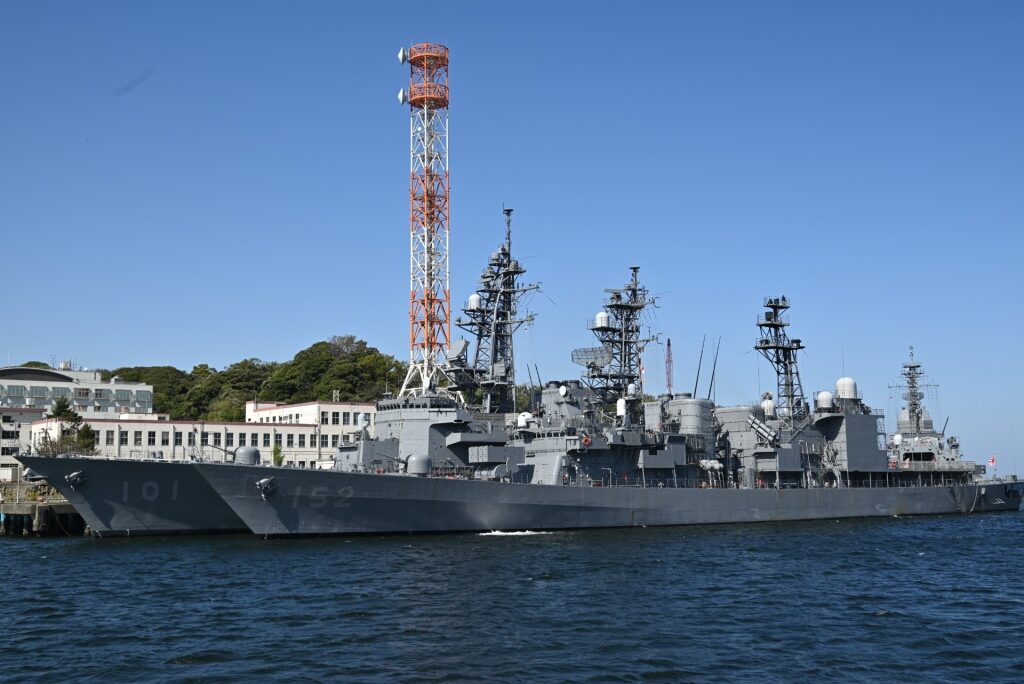
Yokosuka is home to a large U.S. Navy base, giving an American feel to many parts of this lively port city. It’s also the birthplace of the “Navy Curry”, a Japanese version of the popular British Royal Navy dish.
You can taste this, and the equally famous “Yokosuka Burger” on Dobuita Street which caters to large numbers of U.S. Navy personnel. It’s also notable for its vintage cloth shops and military-themed fashion.
The Museum of History explains some of Yokosuka’s naval past. In Mikasa Park, you can visit the restored battleship Mikasa which played a key role in the Russo-Japanese War of 1904-1905.
Contemplate modern and contemporary art at the Yokosuka Museum of Art. The building itself is a work of art, making the most of natural light and the sea view.
The museum sits within Kannonzaki Park, which has hiking trails, tidal pools, and an amazing roller slide. It’s named for Kannonzaki, built in 1868 as Japan’s first western-style lighthouse.
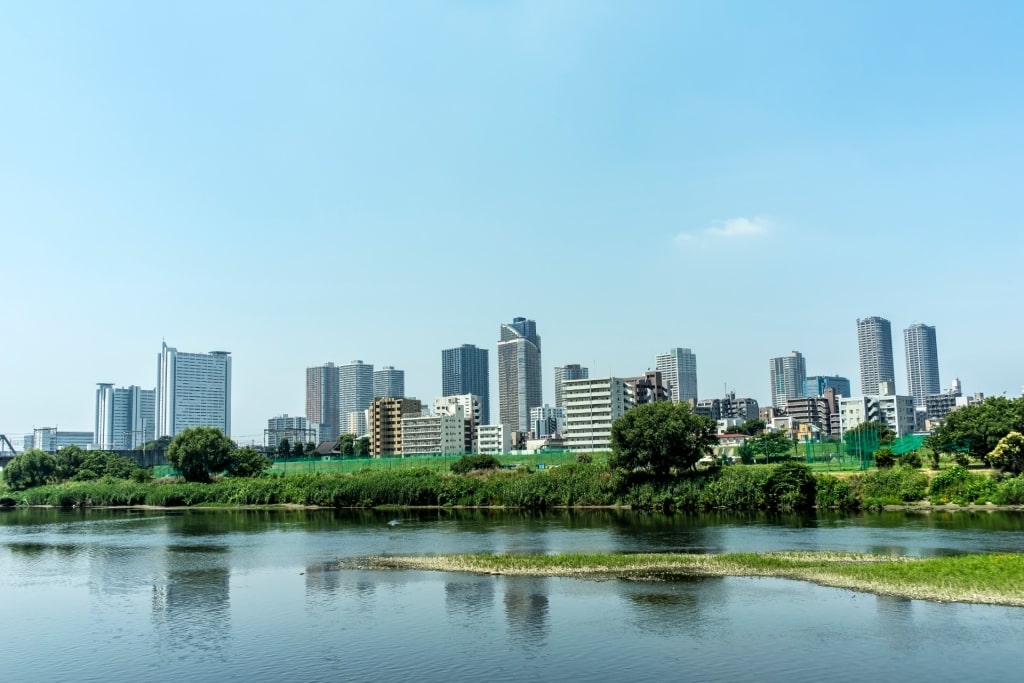
The industrial city of Kawasaki on Tokyo Bay was central to Japan’s industrial boom after World War II. In more recent years, it is reinventing its waterfront area with shopping malls, entertainment, and green spaces.
You can see this in Kanagawa’s Ikuta Ryokuchi Park, which has views of Mount Fuji. It also houses Nihon Minka-en, an open-air museum with 20 traditional Japanese farmhouses.
Other key attractions in Kawasaki include the Toshiba Science Museum, which deals with the history of Japanese technology. The Kawasaki Municipal Science Museum is famous for its Planetarium.
Warehouse Kawasaki is a unique five-story arcade designed to look like Hong Kong’s ancient Kowloon Walled City. Inside this cyberpunk paradise, you’ll find retro games as well as the very latest ones.
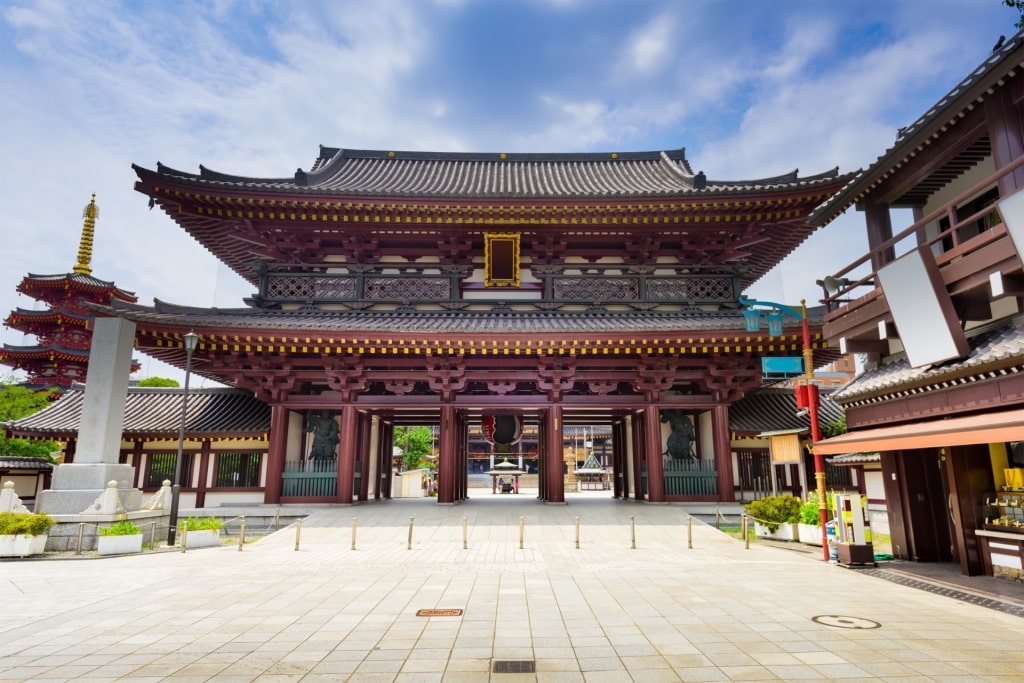
Kawasaki Daishi
In contrast, Kawasaki Daishi is one of the most important Buddhist temples in the region. Its daily “rite of burning” is a ritual for everything from business success to having your car blessed for safety.
Read: Three Days in Tokyo
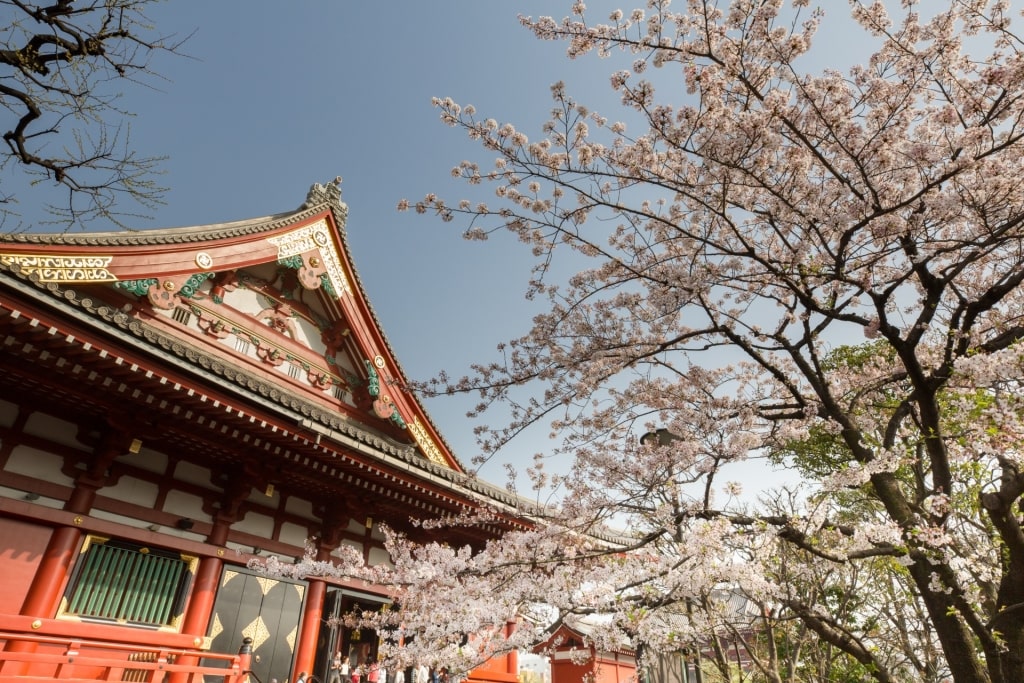
Sensō-ji Temple, Tokyo
Are you inspired to explore beyond Tokyo? Browse Celebrity’s cruises to Tokyo and book your next getaway to Japan.
Kieran Meeke
Kieran is a freelance travel writer who has lived and worked in 12 different countries, on every continent except Antarctica. He now spends his time between Kerry, Ireland, and Granada, Spain, while writing for newspapers and websites worldwide.
Related Itineraries
Northeast Asia
- 11 nights ON CELEBRITY MILLENNIUM
- DEPARTING FROM TOKYO (YOKOHAMA), JAPAN
Best of Japan
- 12 nights ON CELEBRITY MILLENNIUM
Best of Japan - Golden Week
Related Articles
Best India Souvenirs to Bring Home
14 Best Things to Do in Hiroshima
16 Best Beaches in Vietnam
14 Best Things to Do in Langkawi
11 Famous Temples to Visit in Japan
What to Buy in Singapore
12 Best Beaches in Mexico for Families
12 Best Places to Experience Alaska’s Gold Rush History
37 of the Best Beaches in the Caribbean
Rhodes Old Town: 16 Best Things to See & Do
The Ultimate Barcelona Food Guide
13 Best Beaches in Antigua
Free Vacation Planning Services

CALL US 888-751-7804
Sign Up for Special Offers
I would like to receive electronic Promotional messages from Celebrity Cruises Inc. You can unsubscribe at anytime. Please view our Privacy Policy .
- First Name *
- Last Name *
- Email Address *
- Country * Country Afghanistan Albania Algeria American Samoa Andorra Angola Antigua and Barbuda Argentina Armenia Australia Austria Azerbaijan Bahamas Bahrain Bangladesh Barbados Belarus Belgium Belize Benin Bermuda Bhutan Bolivia Bosnia and Herzegovina Botswana Brazil Brunei Bulgaria Burkina Faso Burundi Cambodia Cameroon Canada Cape Verde Cayman Islands Central African Republic Chad Chile China Colombia Comoros Congo, Democratic Republic of the Congo, Republic of the Costa Rica Côte d'Ivoire Croatia Cuba Curaçao Cyprus Czech Republic Denmark Djibouti Dominica Dominican Republic East Timor Ecuador Egypt El Salvador Equatorial Guinea Eritrea Estonia Ethiopia Faroe Islands Fiji Finland France French Polynesia Gabon Gambia Georgia Germany Ghana Greece Greenland Grenada Guam Guatemala Guinea Guinea-Bissau Guyana Haiti Honduras Hong Kong Hungary Iceland India Indonesia Iran Iraq Ireland Israel Italy Jamaica Japan Jordan Kazakhstan Kenya Kiribati North Korea South Korea Kosovo Kuwait Kyrgyzstan Laos Latvia Lebanon Lesotho Liberia Libya Liechtenstein Lithuania Luxembourg Macedonia Madagascar Malawi Malaysia Maldives Mali Malta Marshall Islands Mauritania Mauritius Mexico Micronesia Moldova Monaco Mongolia Montenegro Morocco Mozambique Myanmar Namibia Nauru Nepal Netherlands New Zealand Nicaragua Niger Nigeria Northern Mariana Islands Norway Oman Pakistan Palau Palestine, State of Panama Papua New Guinea Paraguay Peru Philippines Poland Portugal Puerto Rico Qatar Romania Russia Rwanda Saint Kitts and Nevis Saint Lucia Saint Vincent and the Grenadines Samoa San Marino Sao Tome and Principe Saudi Arabia Senegal Serbia Seychelles Sierra Leone Singapore Sint Maarten Slovakia Slovenia Solomon Islands Somalia South Africa Spain Sri Lanka Sudan Sudan, South Suriname Swaziland Sweden Switzerland Syria Taiwan Tajikistan Tanzania Thailand Togo Tonga Trinidad and Tobago Tunisia Turkey Turkmenistan Tuvalu Uganda Ukraine United Arab Emirates United Kingdom United States Uruguay Uzbekistan Vanuatu Vatican City Venezuela Vietnam Virgin Islands, British Virgin Islands, U.S. Yemen Zambia Zimbabwe

STAY IN THE KNOW
Thank you for subscribing.
See you on board soon.

Tokyo: Tokyo Bay Dinner Cruise
For those seeking a refined and captivating evening on the waters of Tokyo Bay, the Tokyo Bay Dinner Cruise offers an unparalleled experience. This intimate small-group excursion provides guests with the opportunity to savor locally-sourced cuisine , soak in breathtaking views of the city’s iconic landmarks, and enjoy the vibrant waterfront atmosphere. From the moment the boat sets sail under the iconic Rainbow Bridge, passengers are treated to a sophisticated and personalized journey that leaves a lasting impression. What awaits those who embark on this remarkable cruise, however, is truly remarkable.

- Enjoy a 2-hour small-group dinner cruise on Tokyo Bay with panoramic views of the iconic Rainbow Bridge, Tokyo Tower, and Skytree.
- Savor a multi-course culinary experience featuring locally-sourced ingredients and a selection of Japanese and international dishes.
- Capture the city’s stunning landmarks and waterfront atmosphere from the comfort of the cruise.
- Depart from the Hinode Terminal, easily accessible from Hinode Station and JR Hamamatsu-cho Station.
- Benefit from a personalized and intimate experience with a maximum of 8 participants.
More tours and experiences nearby.
- English Driver 1-Way Haneda Airport To/From Tokyo 23 Wards
- From Tokyo: Private Sightseeing Tour to Mount Fuji & Hakone
- Mount Fuji Full Day Private Tour (English Speaking Driver)
- Tokyo: Full Day Private Walking Tour With a Guide
Cruise Details

The Tokyo Bay Dinner Cruise is a 2-hour excursion that takes guests on a small-group tour, limited to 8 participants. During the cruise, visitors will indulge in an exquisite dining experience as they pass under the iconic Rainbow Bridge and take in views of Tokyo Tower and Sky Tree.
The tour sails to Odaiba and Shinagawa Pier , allowing guests to capture the city’s landmarks from the water. The cruise package includes the boat ride, dinner, drinks, boarding fee, consumption tax, and service charge, providing a comprehensive and enjoyable experience for all participants.
Dining Experience

Diners on the Tokyo Bay Dinner Cruise will enjoy an exquisite culinary experience that complements the scenic waterfront views. The multi-course menu features fresh, locally-sourced ingredients expertly prepared by the cruise’s talented chefs.
Guests can expect an array of Japanese and international dishes , from delicate sashimi to succulent grilled meats, all served with impeccable service. The beverage selection includes a variety of wines, beers, and non-alcoholic options to pair perfectly with the meal.
With the city’s famous landmarks as a backdrop, the dining experience on the Tokyo Bay Dinner Cruise promises to be a truly memorable one for all who partake.
Scenic Highlights

Passengers aboard the Tokyo Bay Dinner Cruise are treated to a panoramic showcase of the city’s most iconic landmarks. As the boat gracefully sails across the bay, guests are afforded breathtaking views of the Rainbow Bridge , a stunning architectural marvel that spans the waterway.
The cruise also provides opportunities to admire the Tokyo Tower and the Skytree , two of the city’s most recognizable skyscrapers, which rise majestically against the skyline. Plus, the cruise navigates to Odaiba and Shinagawa Pier , offering passengers the chance to capture the city’s landmarks from the serene vantage point of the water. This scenic adventure allows guests to enjoy Tokyo’s stunning landscapes in a uniquely memorable way.
Sightseeing Locations
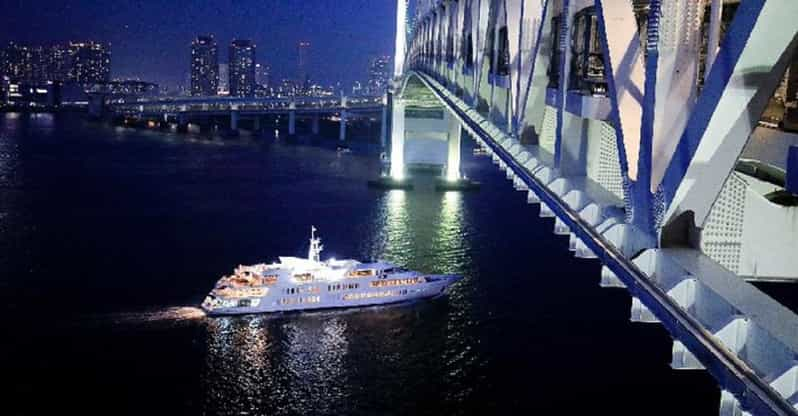
Along the picturesque journey, the Tokyo Bay Dinner Cruise takes passengers past some of the city’s most iconic sightseeing locations. The cruise offers stunning views of the Rainbow Bridge , a breathtaking suspension bridge that spans Tokyo Bay.
Guests will also be treated to panoramic vistas of Tokyo Tower , the city’s beloved landmark, and the impressive Tokyo Skytree , the world’s tallest tower. Plus, the cruise sails to the lively Odaiba and Shinagawa Pier districts, allowing passengers to capture the city’s landmarks from the water and enjoy the vibrant waterfront atmosphere.
Included Amenities
As part of the Tokyo Bay Dinner Cruise experience, passengers can indulge in a range of included amenities . The cruise itself is the main attraction, allowing guests to sail along the scenic Tokyo Bay and take in the city’s iconic landmarks from the water.
Complementing the cruise is a delicious dinner, with drinks included to enhance the culinary experience. Passengers won’t have to worry about any additional fees, as the cruise, dinner, drinks, boarding fee, consumption tax, and service charge are all covered in the price. This comprehensive package ensures a seamless and enjoyable dining cruise along Tokyo Bay.
Meeting Point and Transportation

The meeting point for the Tokyo Bay Dinner Cruise is the Sealine Tokyo Co., Ltd. Hinode Terminal office, which is just a 1-minute walk from Hinode station or a 12-minute walk from JR Hamamatsu-cho Station .
To get there:
- From Hinode station, head north for 1 minute to reach the Sealine Tokyo Co., Ltd. Hinode Terminal office.
- From JR Hamamatsu-cho Station, walk for 12 minutes towards the Hinode Terminal office.
- Once at the meeting point, you’ll be able to easily board the cruise ship for your 2-hour dinner experience on Tokyo Bay.
Pricing and Cancellation

The Tokyo Bay Dinner Cruise is priced at $110.90 per person. The cruise offers free cancellation up to 8 days in advance, allowing for flexible planning. To provide more details, here’s a table outlining the pricing and cancellation policy:
The cruise provides an exquisite dining experience while offering stunning views of Tokyo’s iconic landmarks, including the Rainbow Bridge, Tokyo Tower, and Skytree.
Small Group Excursion

The small-group setting of the Tokyo Bay Dinner Cruise allows for an intimate and personalized experience . With a maximum of 8 participants, you’ll enjoy:
- Exclusive attention from the staff, ensuring your needs are met throughout the evening.
- Opportunities for deeper conversations and connections with your fellow cruisers, as the smaller group fosters a cozy and interactive atmosphere .
- A more tailored and flexible itinerary , allowing the crew to cater to your interests and preferences, creating a truly memorable experience.
This exclusive, small-group excursion offers a unique way to explore the stunning sights of Tokyo Bay and indulge in exquisite dining, all while surrounded by a select group of fellow travelers.
Here's a few more nearby tours and experiences we think you'll like.
- Mt Fuji & Hakone: Sightseeing Private Day Tour With Guide
- Tokyo City Customized Tour With English Speaking Guide
- Kanto 10-Hour Chartered Day Trip | Tokyo City
- Akihabara Culinary and Culture Adventure: Your Personalized
- Tokyo DisneySea: 1-Day Ticket & Private Transfer
- 1 Day Tokyo Private Charter Sightseeing Tour With Guide
Frequently Asked Questions

Is the Cruise Suitable for Children?
The cruise is not particularly suitable for children, as it’s advertised as a small group, limited to 8 adult participants. The focus is on an exquisite dining experience rather than family-friendly activities.
Can I Bring My Own Food and Drinks?
The cruise doesn’t allow passengers to bring their own food and drinks. All meals and beverages are provided as part of the dinner cruise experience. Outside food and drinks are not permitted on board.
Are There Any Accessibility Options for Disabled Guests?
The cruise provides accessibility options for disabled guests. They can assist with boarding and ensure a comfortable experience. Guests should contact the operator in advance to discuss their needs and accommodation requirements.
Is Photography Allowed During the Cruise?
Photography is allowed during the cruise. Guests are encouraged to capture the city’s landmarks and scenic views from the water. However, it’s polite to avoid interfering with other passengers’ enjoyment by using flash or taking excessive photos.
Can I Get a Refund if the Weather Is Poor?
Yes, the cruise offers free cancellation up to 8 days in advance. If the weather is poor on the day of the cruise, travelers can get a full refund or reschedule their booking.
Not for you? Here's more of our most recent tour reviews happening neaby
- Asakusa : Explore Tokyo Bay and Canals by Jet Skis
- R33 Swapped Drift Car Tokyo JDM Tour/Daikoku Car Meet
- Mount Fuji and Hakone Day Tour With English Speaking Drivers
- Tokyo: Karaoke Box Experience at BIG ECHO
- Sumida Aquarium Admission Ticket
- 1 Day Nikko Wonders Tour From Tokyo
- Tokyo Nightlife Tour And Photography Session
- Tokyo Private Sightseeing Tour W/English Speaking Driver
- Tokyo: Mount Fuji, Arakurayama Sengen Park, Oshino Hakkai Tour
- From Tokyo: Mt. Fuji Full-Day Unforgetable Sightseeing Trip
- Tokyo: Mount Fuji or Hakone Customized Private Full-Day Trip
- Tokyo: Authentic Japanese Dance Class, Kimono & Souvenirs
- Shuttle Van Transfer, Tokyo 23 Wards⇔Haneda, Narita Airport
- Tokyo Disney: Private Transfer to Tokyo 23-ward
- Tokyo: Guided Tour Mt. Fuji, Oishi Park, Odawara,Tokyo Tower
The Tokyo Bay Dinner Cruise offers a unique and immersive experience for visitors. Guests can enjoy a delectable multi-course meal while taking in stunning views of Tokyo’s iconic landmarks , including the Rainbow Bridge and Tokyo Tower. With impeccable service, a selection of beverages, and a personalized atmosphere, this small-group excursion is a sophisticated and unforgettable way to experience the city’s vibrant waterfront.
Similar Posts
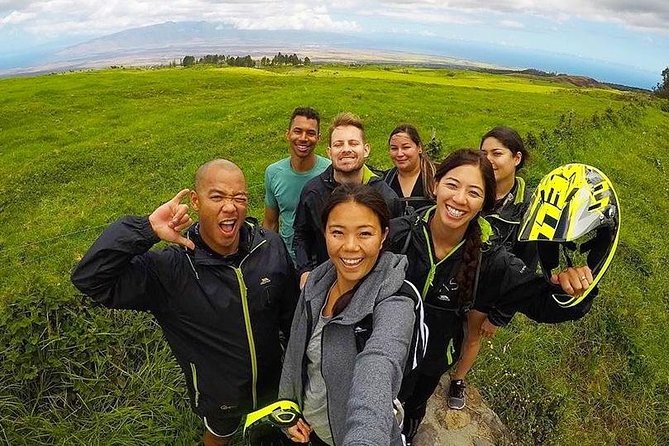
Best Haleakala Downhill Self-Guided Bike Tour With Maui Sunriders
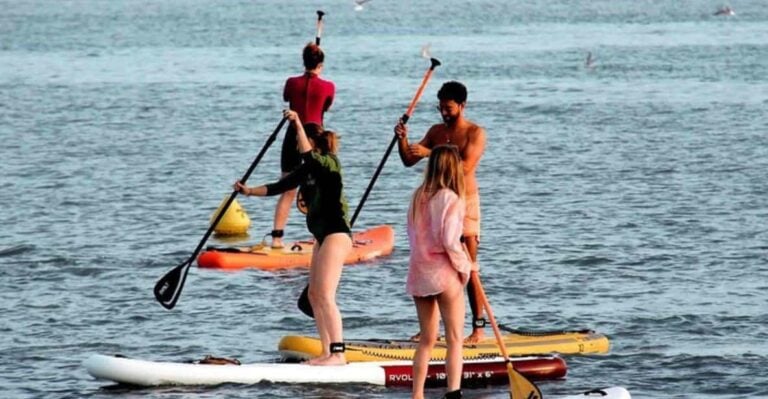
Stand up Paddle and Shopping CAP3000

Chiang Mai Paramotor Flying Experience

Traditional Italian Food and Venice Old Town Private Tour
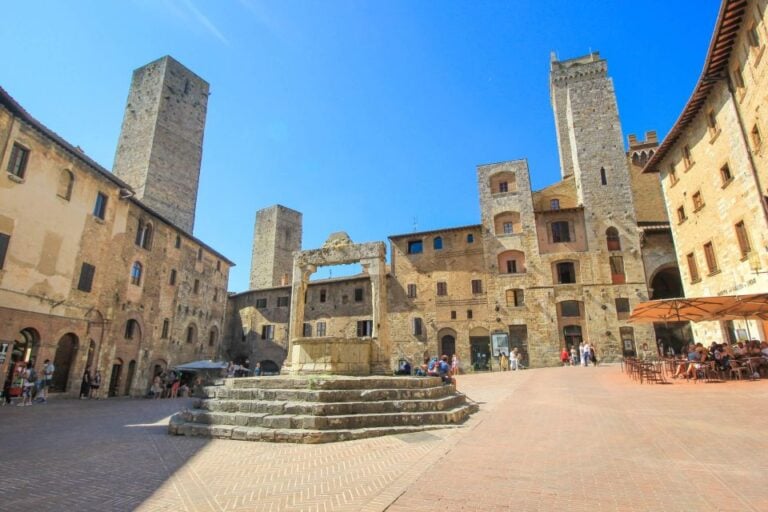
From Florence: San Gimignano and Chianti Private Tour

In the Coastal Town on the Pacific, Walk Around and Visit the Stores of Japanese Ichioushi (Massage Included) Hotel Accommodation / Lunch Included / Japanese Language Guide /

IMAGES
VIDEO
COMMENTS
Tokyo International Cruise Terminal opened on September 10, 2020, to provide access to Tokyo to the world's largest cruise ships. The cruise terminal is in the Odaiba area and within reach of major transportation hubs, including Shinkansen stations and two international airports.
You can take a train from Narita Airport Terminal 2·3 to Tokyo International Cruise Terminal via Nippori and Shimbashi in around 1h 10m. Alternatively, you can take a bus from Narita Airport Terminal 2 to 東京国際クルーズターミナル駅前 via Tokyo Station Nihonbashi Exit, Tokyo Station Marunouchi South Exit, and 有明二丁目 in ...
You can take a vehicle from Tokyo International Cruise Terminal Station to Haneda Airport Terminal 1 via Tokyo Teleport and Tennozu Isle in around 43 min. Alternatively, you can take a bus from 東京国際クルーズターミナル駅前 to Haneda Airport Terminal 1 via 豊洲駅前 and Toyosu in around 1h 22m. Train operators. Tokyo ...
from. $118.59. per group. Private Transfer from Tokyo Cruise Port to Tokyo City Hotels. Book your Private Transfer from Tokyo Cruise Port to Tokyo City Hotels or any address. Don't go through all the hassle of waiting in a long taxi or shared shuttles queues and use our private, door to door port/city transfer.
Posted May 31, 2018. Tokyo's Harumi Cruise Terminal is just a short distance North of Haneda Airport. Yokohama's Osanbashi Cruise Terminal is just a short distance South of Haneda Airport. Larger ships cannot fit under the Rainbow Bridge in Tokyo Bay, so cannot access the Harumi Terminal. Docking fees for the Harumi Terminal are also 400% ...
You can take a train from Tokyo International Cruise Terminal to Narita Airport Terminal 2·3 via Shimbashi and Nippori in around 1h 20m. Alternatively, you can take a bus from 東京国際クルーズターミナル駅前 to Narita Airport Terminal 2 via 豊洲駅前 and Tokyo Station Yaesu South Exit in around 2h 7m. Train operators. Yurikamome.
Narita International Airport. Terminal 1 at Narita International Airport. If you are flying into Tokyo from the United States or other international destinations, you will most likely land at Narita International Airport. The airport lies about 37 miles (60 kilometers) east of central Tokyo.
Option 1: By Train. If you prefer a convenient and cost-effective way to travel from Haneda Airport to the Yokohama Cruise Terminal, taking a train is the ideal option. The train system in Japan is renowned for its efficiency and punctuality, making it a popular choice among both locals and tourists. From Haneda Airport, you can take the Keikyu ...
Option 1: Airport Limousine Bus and Train. Take the Airport Limousine Bus bound for Yokohama City Air Terminal (YCAT) and Minatomirai, alighting at Yokohama Bay Hotel Tokyu. Walk 7 minutes to Minatomirai Station. Take the Minatomirai Line to Nihon-Odori Station. 3 mins, 180 yen. Walk 5 mins to Osanbashi Pier.
Cruise liners dock at Tokyo International Cruise Terminal. Tokyo International Cruise Terminal opened on September 10, 2020, to provide access to Tokyo to the world's largest cruise ships. The cruise terminal is in the Odaiba area and within reach of major transportation hubs, including Shinkansen stations and two international airports.
The Tokyo International Cruise Terminal was completed in 2020. Tokyo International Cruise Station on the Yurikamome Line is nearby. Small ships dock at Rainbow Bridge Wharf at Harumi Cruise Terminal on the island of the same name. The Kachidoki Station on the Toei Oedo metro line is a 25-minute walk from the port.
Route from Yokohama cruise port to Tokyo Haneda airport. Yokohama cruise port is located 23.36 km from Tokyo Haneda airport and to get to Tokyo Haneda airport with a transfer from Yokohama cruise port will take about 00 h 26 m. The duration of the transfer may vary depending on the chosen vehicle and the traffic circumstances.
Route from Yokohama cruise port to Tokyo Narita airport. Yokohama cruise port is located 100.36 km from Tokyo Narita airport and to get to Tokyo Narita airport with a transfer from Yokohama cruise port will take about 01 h 21 m. The duration of the transfer may vary depending on the chosen vehicle and the traffic circumstances.
The nearest airport to Tokyo International Cruise Terminal Station is Tokyo Haneda (HND). Airport Limousine operates a bus from Haneda Airport Terminal 1 to Grand Nikko Tokyo Daiba every 3 hours. Tickets cost $5 - $7 and the journey takes 25 min. Alternatively, you can take a train from Tokyo Narita (NRT) to Tokyo International Cruise Terminal Station via Tōkyō Station and Shimbashi in ...
Cruise port guide for Tokyo / Yokohama, Japan. Information on where your ship docks, how to get from the port into the city, maps, bus and shuttle information, public transport options, cruise terminal information, cruise port schedules, must see sights, shopping guides, restaurant guides, internet and wifi locations, and suggestions for things to do.
Tokyo Haneda Airport to Yokohama Cruise Port Transfers. Transfer Type. Journey time. Price Per Person. Taxi for 2 people. 30 minutes. £129.83. Taxi for 4 people. 35 minutes.
Yokohama International Cruise Port Shuttle Service to/from Tokyo . Coupon . 4.80. 2 Packages. Share. Share. Coupon (10) (10) Highlights. Exclusively for Diamond Princess cruises! ... Please note that Narita International Airport, Tokyo Disneyland, Maihama, are not in Tokyo. View details. Infant (Age 0-1) free ...
When you visit Tokyo for the first time, you can't just wing it. You'll definitely need a plan to see the fabulous fashions of Ginza, the colorful anime of Akihabara, the effortless cool of Shibuya, and the many-tiered temples of Asakusa—all essentials for first-time visitors—in three days.
Most cruise ships in Tokyo dock at Harumi Terminal. Port Yokohama is approx 40 km (25 mi) from the city and is often used as an alternative port for Tokyo. The new cruise terminal (at Shinkyaku Pier) was scheduled for inauguration on July 14 (2020) to coincide with the opening of the Tokyo 2020 Olympic Games (scheduled for July 22).
Keikyu operates a train from Yokohama to Haneda Airport Terminal 1 & 2 every 30 minutes. Tickets cost $2-3 and the journey takes 29 min. Alternatively, Keikyu Airport Limousine operates a bus from Yamashita Park to Haneda Airport Terminal 1 hourly. Tickets cost $4-7 and the journey takes 25 min. Train operators.
Qatar. British Airways. Air France. Singapore. Thai. With airlines that only fly to one airport, there's definitely a slight preference for Narita, which serves about 13 million more passengers per year than Haneda. The following airlines only offer service to Narita: Swiss. Turkish.
Narita Airport low-cost buses (LCB) are a great option for those on a tight budget. They leave from outside the arrival halls at Narita and drop you in central locations at Tokyo Station, Ginza and Ikebukuro (among others). Narita Airport low-cost buses: between 85 and 110 minutes, ¥1300 to ¥1900. Buy tickets from counters inside arrival halls.
The port cities of Yokohama and Yokosuka were vital in opening up Japan to the outside world. Narita, famous for its airport, is also home to a 1,000-year-old temple. On Mt. Takao, you can go hiking; in Chichibu, you can try ziplining or bungee jumping. The three shrines of Enoshima island are more sedate, while Kawazaki's Warehouse is a ...
Cruise Details. The Tokyo Bay Dinner Cruise is a 2-hour excursion that takes guests on a small-group tour, limited to 8 participants. During the cruise, visitors will indulge in an exquisite dining experience as they pass under the iconic Rainbow Bridge and take in views of Tokyo Tower and Sky Tree.. The tour sails to Odaiba and Shinagawa Pier, allowing guests to capture the city's landmarks ...